Retinoids in Skincare CPD
Mr Dalvi Humzah and Dr Steve Tonge discuss the clinical pathways of retinoids

Treating The Lower Face
Practitioners share how to contour the chin and jawline using devices

Exploring Laser Tattoo Removal
Dr Osman Bashir discusses treating tattoos with laser technology
Understanding Cyber Security
Anthony Green explores why aesthetics is a target for cyber criminals
AS THE STORIES THEY TELL CRAFT LIPS AS UNIQUE
Actual patient. Individual results may vary. UKI-RES-2200179 DOP June 2022
Adverse events should be reported. For the UK. Reporting forms and information can be found at www.mhra.gov.uk/yellowcard or search for Yellow Card in the Google Play or Apple App Store. For Ireland. Suspected adverse events can be reported via HPRA Pharmacovigilance, Website: www.hpra.ie; Adverse events should also be reported to Galderma (UK) Ltd, Email: medinfo.uk@galderma.com Tel: +44 (0) 300 3035674
CCR2022 REGISTRATION OPEN
HydraFacial is for everyone. It’s suitable for all skin types and addresses all skincare needs. HydraFacial delivers immediate, noticeable results, with no downtime, that keep your customers returning regularly. HydraFacial is your connection to millions of believers that know that beauty is more than a physical attribute – it’s a feeling.



Consumers want to be pro-actively offered personalised solutions for skin health and provide them with education on their ideal, easy-to-follow skin health regimen1
And your clients needs are as individual as they are, which is why HydraFacial has partnered with the best brands in aesthetics to bring you advanced booster options that meet the emerging consumer trends, which are influencing our industry more than ever before.
HydraFacial is scored as a ‘99% Worth It’ rating by www.realself.com and on average, somewhere in the world, a HydraFacial treatment is now carried out every 10 seconds!

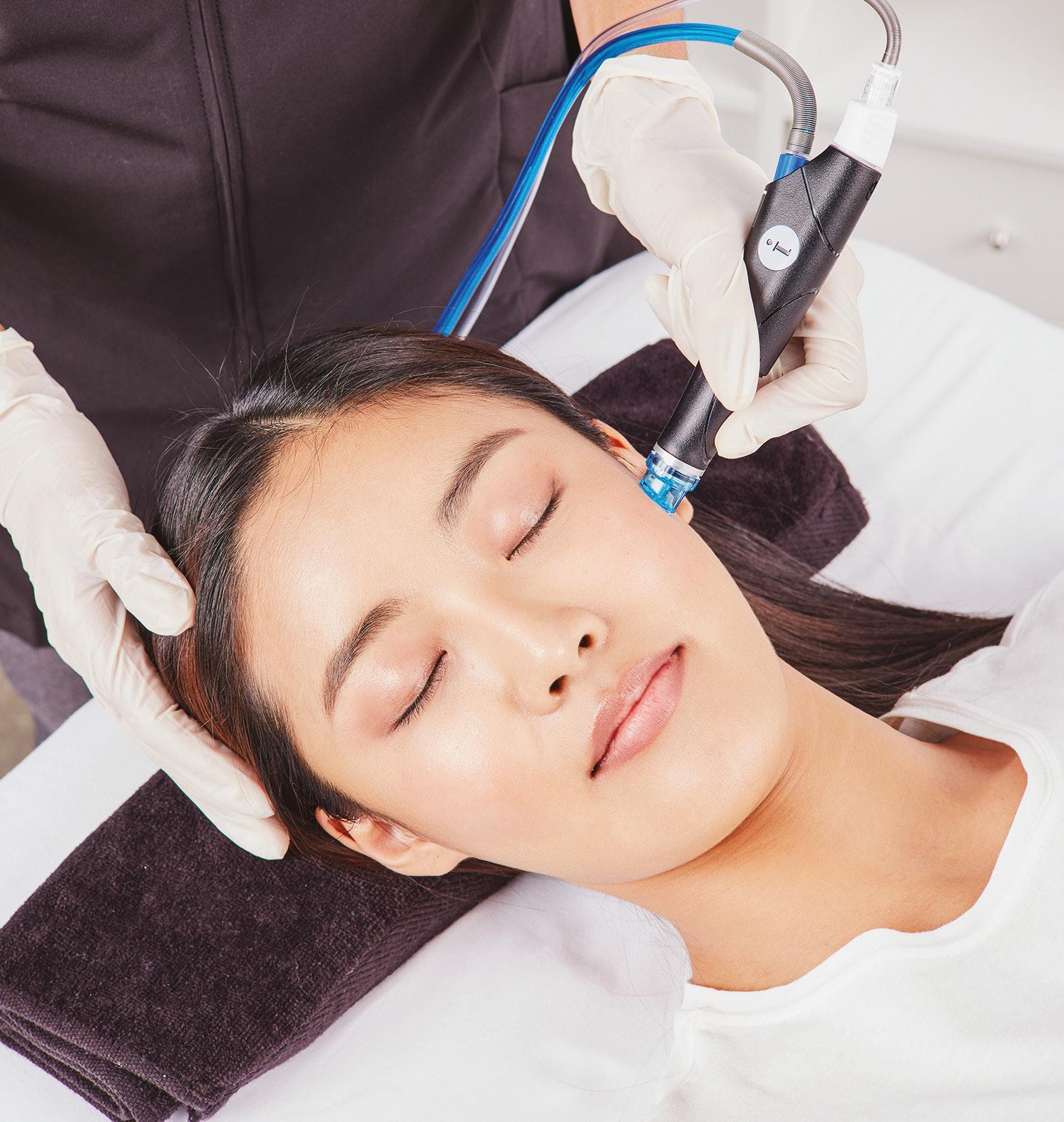

To see how one powerful device provides everything you need to power your business, contact us today:
One Treatment. Endless Options. give your customers what they want! Simplification Multi-benefit solutions that save time1 Personalisation Treatments tailored to specific skin concerns2 RecommendatioN Skin health technology and regimen education1
1 EddieWouldGrow Facial Research 2018, n=2000; 2 Mintel Trends 2017
DESTINATION GLOW
HydraFacial opens immersive new Flagship in London.



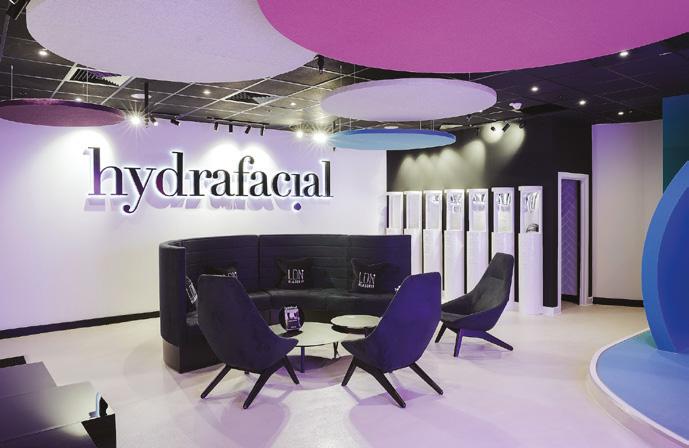

The doors are now open and aestheticians are assured a radiant reception at HydraFacial’s latest venture in the capital – HydraFacial LDN Flagship. Located on Portman Square in the bustling West End, the hybrid space has been designed to help drive consumer demand and connect the European-wide HydraFacial community with innovative training, education and marketing opportunities. Following a two-year renovation, the state-of-the-art LDN Flagship is HydraFacial’s largest investment to-date and underpins the company’s ‘skin health’ ambitions for the UK and EMEA markets.
“Our UK HydraFacial community is valued and everything about our new LDN Flagship has been designed to support their commercial success”, says UK & Ireland Country Manager, Lauren Gibson.
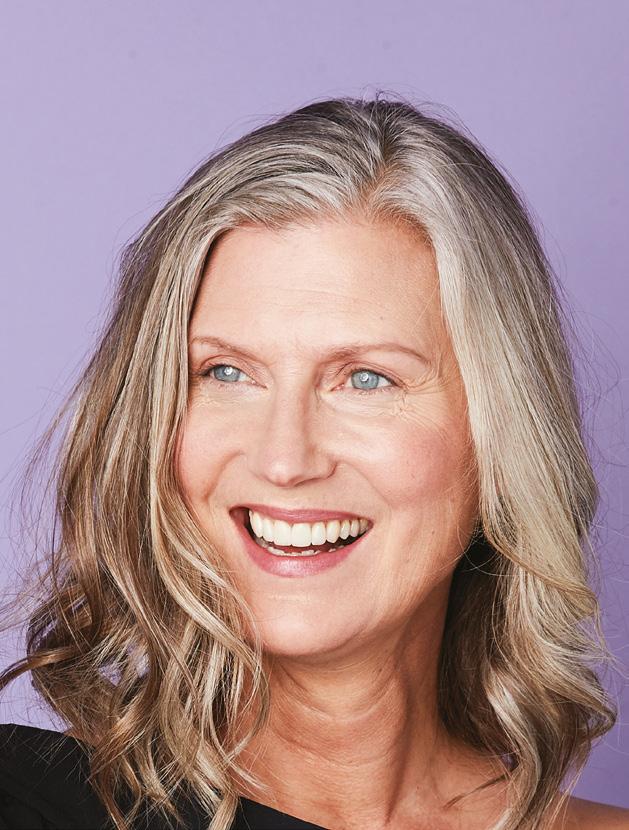

Every month, the LDN Flagship will deliver up to 750 deluxe treatments for registered members of the public, allowing the treatment-curious to - just once - ‘try before they buy’. This novel ecosystem is designed to socially-inspire and source new patient prospects, before converting them to a skin health programme with a recommended local provider.


In 2022, the new LDN Flagship will play a part in delivering more than 2.5 million treatments globally.
Alongside media masterclasses on trending wellbeing topics, the venue will play host to collaborative brand events and expert-led forums with doctors, facialists and makeup artists alike. A new VIP suite means celebrities and journalists can be treated in comfort and confidence, with West End stars and sporting legends lined up to experience a radiance-reset.
hydrafacial.co.uk infouk@hydrafacial.com @hydrafacialuk 01788 572 007
“I use Celluma LED in my clinical practice on a daily basis. In addition to the skin benefits, Celluma has been incredibly beneficial to my clients for joint and muscular conditions. The Celluma rental part of my business has proved popular for both skin and musculoskeletal concerns.”






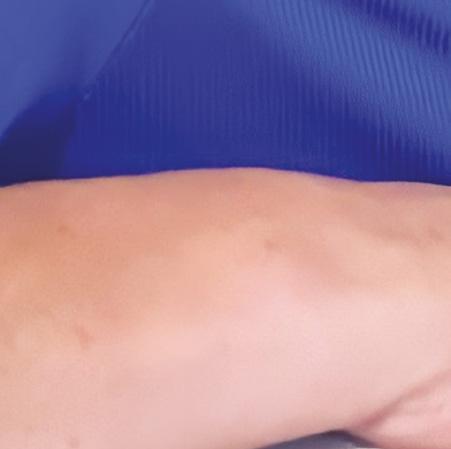
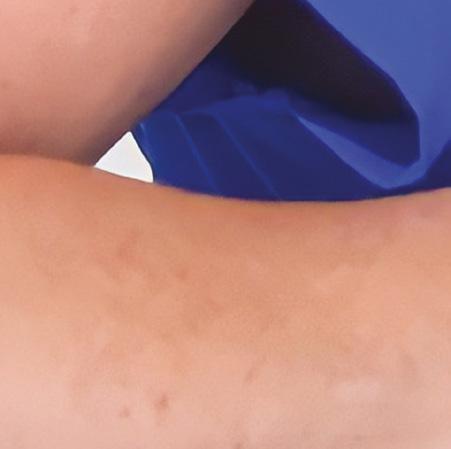


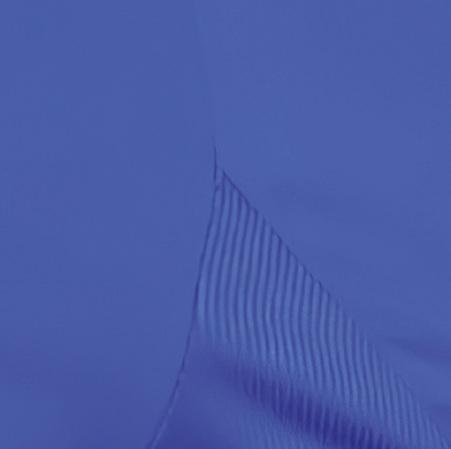


 Alison Fulford Independent Nurse Prescriber Harbourside Aesthetic Clinic
Alison Fulford Independent Nurse Prescriber Harbourside Aesthetic Clinic




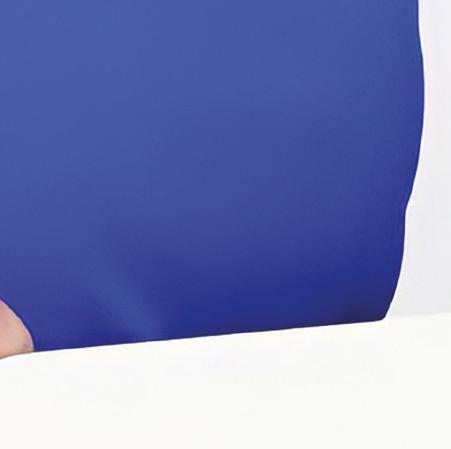


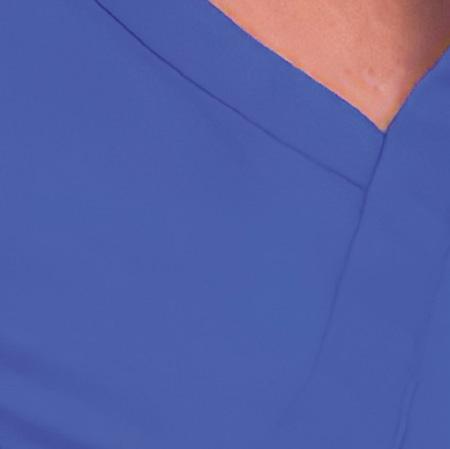




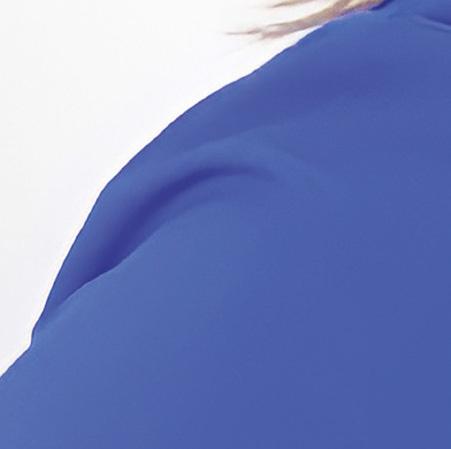

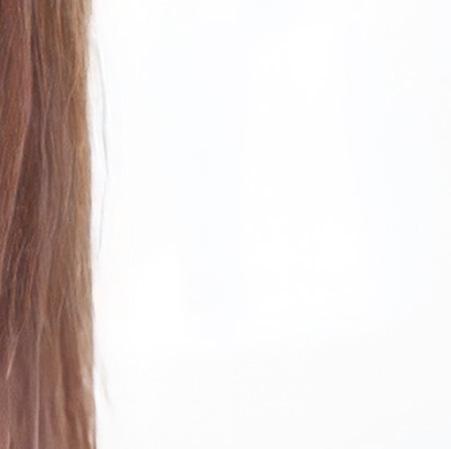











(Southamption, UK)










ACNE ANTI-AGEING WOUND HEALING MEDICAL CE MARK FDA-CLEARED 13 CLINICALLY PROVEN LED DEVICES
PAIN
08 News
The latest product and industry news 17 IMCAS Annual World Congress Returns
Take a look at some of the highlights from the IMCAS Congress 18 News Special: Regulating Remote Prescribing Aesthetics explores what the new JCCP guidance means for remote prescribing 20 CCR Registration is Open
Registration is open for the largest multi-disciplinary show in UK aesthetics
CLINICAL PRACTICE 23 Special Feature: Treating the Lower Face with Devices
Practitioners outline how devices can contour the chin and jawline
The Collagen Conversation
Dr Sophie Shotter answers our questions about HArmonyCa 31 CPD: Exploring Retinoids in Skincare

Mr Dalvi Humzah and Dr Steve Tonge discuss the clinical pathways of retinoids in skincare 35 Case Study: Combining RF Microneedling and CO2
Mr Rishi Mandavia and Dr Tatiana Lapa describe treating acne scarring using RF microneedling and CO2 39 Restylane Kysse
A dermal filler for volumised, natural-looking and ‘kissable’ lips 41 Treating Rosacea in Skin of Colour
Two practitioners provide an introduction to treating rosacea in patients with darker skin 47 Case Study: Treating Solar Lentigines
Miss Jennifer Doyle outlines the use of broadband light therapy for improving solar lentigines 50 Exploring Effective Tattoo Removal
Dr Osman Bashir discusses the challenges of treating tattoos with laser 53 Understanding Cellular Ageing
Dr Nichola Conlon provides an introduces to what cellular ageing is and the benefits 58 Targeting Pigmentation
Discover the new PicoSure Pro device for tackling pigmentation 59 Abstracts
A round-up and summary of useful clinical papers IN PRACTICE 61 Developing a USP
Vanessa Bird explains why a USP is important in aesthetics and how to develop your own 64
Introducing EMSCULPT NEO into Your Clinic
Dr Sabika Karim shares her reasons for adding the treatment to her clinic 67 Understanding Cyber Security
Anthony Green discusses why aesthetics is a target for cyber criminals 70 Making Your Awards Entry Shine
Tried and tested tips from Aesthetics Awards Winners 73 In Profile: Dr Munir Somji


Dr Munir Somji explains his global key opinion leader role 74 The Last Word: Marking Up
Dr Arti Singh debates marking up injection points before treatment
NEXT MONTH
IN FOCUS: INJECTABLES • Non-Surgical Rhinoplasty • Filler Longevity
Clinical Contributors
Mr Dalvi Humzah is a consultant plastic, reconstructive and aesthetic surgeon. He is a founding member of the Academy of Clinical Educators at the Royal College of Physicians and Surgeons of Glasgow and delivers anatomical teaching internationally.

Dr Steve Tonge qualified with a BSc in Pharmacology from King’s College London. He went to Aston University and obtained a PhD in Polymer Chemistry. He is currently a managing director of Malvern Cosmeceutics Limited.


Mr Rishi Mandavia is an ENT surgical doctor and managing director of the Dr Tatiana Aesthetic Dermatology Clinic. Mr Mandavia is a World Health Organization expert advisor, Royal College of Surgeons Associate Surgical Speciality Lead and NICE scholar.
Dr Tatiana Lapa is the medical director of the Dr Tatiana Aesthetic Dermatology Clinic. She is a KOL for Cutera and brand ambassador for Vivacy. Dr Tatiana has a Batchelor’s degree in Aerospace Physiology and a Master’s degree in Aesthetic Medicine.
Dr Surbhi Virmani graduated in medicine in 1996 following which she was awarded a Master’s in Anaesthesia. With more than 20 years of experience in anaesthetics and critical care, Dr Virmani runs an acne- rosacea clinic from her Harley Street practice.

Dr Neelu Sharma graduated in Medicine in 1996 followed by an MD in Dermatology from New Delhi, India, where she practices as a consultant dermatologist. Her area of expertise is disease in skin of colour patients.

Dr Osman Bashir Tahir is a consultant plastic surgeon with experience in surgery for 19 years and in aesthetic medicine and lasers for more than 15 years. He is the medical director of Halcyon Aesthetics London, and Halcyon Medical Centre, Lahore, Pakistan.
Miss Jennifer Doyle is an ophthalmic and oculoplastic surgeon. She has a Bachelor’s in Medicine and a Bachelor of Surgery with distinction, as well as a Master’s in Medical Sciences. She is the lead doctor at the Clinic at Holland Park.

Dr Nichola Conlon is a molecular biologist specialising in the study of cellular ageing. She founded Nuchido Laboratories which is focused on delivering disruptive innovation in the field of antiageing, rejuvenation and health span.

News
Contents • July 2022
Special: Regulating Remote Prescribing Page 18
29
Effective PRP
for natural and sustainable results
PRP offers patients a natural treatment result without the use of foreign substance.

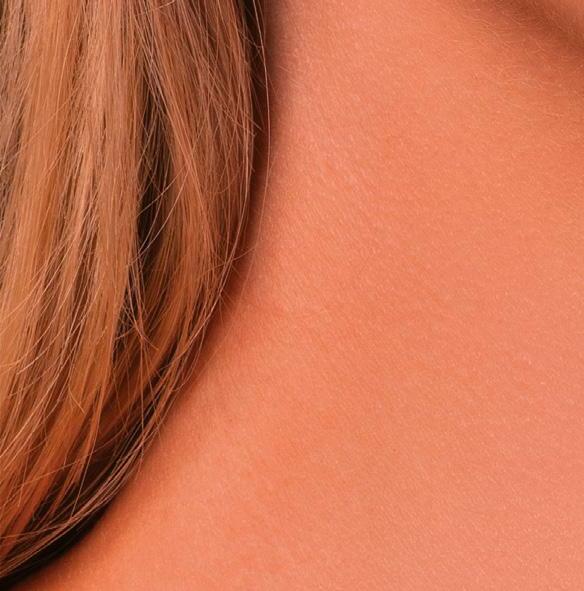

The gentle centrifugation protocol and the absence of anticoagulants enhance:
2.5x
Optimal platelet concentration of 2.5 x increased over baseline, which improves skin texture, wrinkles as well as firmness. 2

Secretion of autologous hyaluronic acid which is stimulated effectively by a platelet concentration in this range. 3
which leads to a gradual release of
factors over
a sustained
effect.
Arthrex ACP® Double Syringe
PRPADREF0522UK
Enriched fibrinogen content 1
growth
time, and supports
rejuvenation
4 1 Wang X et al. Fluid platelet-rich fibrin stimulates greater dermal skin fibroblast cell migration, proliferation, and collagen synthesis when compared to platelet-rich plasma. J Cosmet. Dermatol. 2019;1–7. 2 Aust M. Platelet Rich Plasma (PRP): eine sichere und effiziente Therapieoption zur Hautverjüngung. HAUT 2019;30(5):210-213 3 Anitua E et al. Fibroblastic response to treatment with different preparations rich in growth factors. Cell Prolif. 2009 Apr;42(2):162-70. doi: 10.1111/j.1365-2184.2009.00583.x. Epub 2009 Feb 24. 4 Nacopoulos, C. & Vesala, A. M. Lower facial regeneration with a combination of platelet-rich fibrin liquid matrices based on the low speed centrifugation concept-Cleopatra technique. J Cosmet Dermatol 19, 185-189, doi:10.1111/jocd.13196 (2020). Croma-Pharma UK T: +44 118 206 6513 | Info.uk@cromapharma.com https://at.croma.at | cromapharmauk
Shannon Kilgariff Editor & Content Manager @shannonkilgariff
Dermal fillers and toxin treatments might be your go-to when it comes to aesthetic procedures, but you should never forget devices! This issue we focus on how aesthetic devices can be used to optimise results and explore some of the different energy-based machines available. On p.23, we delve into how radiofrequency, cryolipolysis and ultrasound technology can be used to define and contour the lower face and chin, while you can learn about combining radiofrequency microneedling and CO2 for acne scarring on p.35. We also look at how one practitioner treated solar lentigines using intense-pulsed light technology on p.47 and explore lasers for tattoo removal on p.50 Something that is echoed throughout these articles is the importance of selecting the right patient for energy-based devices and also the positive impact combination treatments can have on your overall results. Not related to devices, but interesting nevertheless, is our CPD-verified article on p.31 which is all about retinoids in skincare –
Clinical Advisory Board
have a read and get your CPD certificate via our website. Of course, if you’re keen to learn more about devices, then you should be meeting the manufacturers! The best place to do this all in one spot is CCR, so add October 13-14 to your diaries! To register for this free event, turn to p.20.
I’m excited to announce that The Aesthetics Awards entry opens this month! You will have two months to get your entries together, so don’t leave it until the last minute. Read top tips from last year’s winners on p.70 and get in touch with us if you have any questions. We also have a brand-new venue, which I am extremely excited about because we reached capacity limits so quickly last year! Grosvenor House is probably one of the most glamorous awards venues in London, so it’s fitting that this will be our new Aesthetics Awards home. With summer now in full swing, I expect many of you are jet setting across the world to enjoy some much-needed holidays. Why not bring your Aesthetics journal with you and get some learning hours in? Tell us what you’ve enjoyed reading by tagging us on Instagram @aestheticsjournaluk and do let us know what you’d like to learn about next by emailing editorial@aestheticsjournal.com
Leading figures from the medical aesthetic community have joined the Aesthetics Advisory Board to help steer the direction of our educational, clinical and business content
Sharon Bennett is chair of the British Association of Cosmetic Nurses (BACN), previous UK lead of the BSI committee for aesthetic non-surgical standards, and member of the Clinical Advisory Group for the JCCP. She is a trainer and registered university mentor in cosmetic medical practice, and is finishing her MSc at Northumbria University. Bennett has won the Aesthetics Award for Nurse Practitioner of the Year and the Award for Outstanding Achievement.
Mr Naveen Cavale has been a consultant plastic, reconstructive and aesthetic surgeon since 2009. He has his own private clinic and hospital, REAL, in London’s Battersea. Mr Cavale is the national secretary for the ISAPS, president of the Royal Society of Medicine, and vice-chair for the British Foundation for International Reconstructive Surgery.
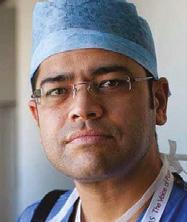
Jackie Partridge is an aesthetic nurse prescriber with a BSc in Professional Practice (Dermatology). She has recently completed her Master’s in Aesthetic Medicine, for which she is also a course mentor. Partridge is a founding board member of the British Association of Cosmetic Nurses and has represented the association for Health Improvement Scotland.
Mr Adrian Richards is a plastic and cosmetic surgeon with 18 years’ experience. He is the clinical director of the aesthetic training provider Cosmetic Courses and surgeon at The Private Clinic. He is also a member of the British Association of Plastic and Reconstructive and Aesthetic Surgeons and the British Association of Aesthetic Plastic Surgeons.

Miss Elizabeth Hawkes is a consultant ophthalmologist and oculoplastic surgeon. She is the lead oculoplastic surgeon at the Cadogan Clinic, specialising in blepharoplasty and advanced facial aesthetics. Miss Hawkes is a full member of the BOPSS and the ESOPRS and is an examiner and fellow of the Royal College of Ophthalmologists.
Dr Tapan Patel is the founder and medical director of PHI Clinic. He has more than 16 years’ clinical experience and has been performing aesthetic treatments for more than 14 years. Recently, he was listed in Tatler’s Top 30 Anti-Ageing Experts. Dr Patel is passionate about standards in aesthetic medicine.

Dr Souphiyeh Samizadeh is a dental surgeon with a Master’s degree in Aesthetic Medicine and a PGCert in Clinical Education. She is the founder of the Great British Academy of Medicine and Revivify London Clinic. Dr Samizadeh is a Visiting Teaching Fellow at University College London and King’s College London.



ADVERTISING & SPONSORSHIP
Courtney Baldwin • Event Director
T: 0203 196 4300 | M: 07818 118 741 courtney.baldwin@easyfairs.com
Judith Nowell • Business Development Manager T: 0203 196 4352 | M: 07494 179535 judith@aestheticsjournal.com


Chloe Carville • Sales Executive T: 0203 196 4367 | chloe.carville@aestheticsjournal.com
Journalist | T: 0203 196 4265 ellie.holden@easyfairs.com
DESIGN
Peter Johnson
Senior Designer T: 0203 196 4359 | peter@aestheticsjournal.com
Emma Coyne • Sales Executive T: 020 3196 4372 | emma.coyne@easyfairs.com
MARKETING
Aleiya Lonsdale • Head of Marketing
T: 0203 196 4375 | aleiya.lonsdale@easyfairs.com
Aimee Moore • Marketing Manager T: 020 3196 4370 | aimee.moore@easyfairs.com

Abigail Larkin • Marketing Executive T: 020 3196 4306 | abigail.larkin@easyfairs.com
Do you have any techniques to share, case studies to showcase or knowledge to impart?
Email: editorial@aestheticsjournal.com
Dr Stefanie Williams is a dermatologist with a special interest in adult acne, rosacea and aesthetic medicine. She is the founder and medical director of multi-award winning EUDELO Dermatology & Skin Wellbeing in London, and creator of Delo Rx skincare. She is the author of three books and has published more than 100 scientific articles, book chapters and abstracts.
ARTICLE PDFs AND REPRO
Material may not be reproduced in any form without the
written permission. For PDF file support please contact Chloe Carville, contact@aestheticsjournal.com © Copyright 2022 Aesthetics. All rights reserved. Aesthetics is published by Aesthetics Media Ltd, which is registered as a limited company in England; No 9887184
Editor’s letter
Aesthetics Journal @aestheticsgroup Aesthetics @aestheticsjournaluk
Sharon Bennett, Clinical Lead
WE WANT TO HEAR FROM YOU!
DISCLAIMER: The editor and the publishers do not necessarily agree with the views expressed by contributors and advertisers nor do they accept responsibility for any errors in the transmission of the subject matter in this publication. In all matters the editor’s decision is final. PUBLISHED BY Aesthetics Media PORTFOLIO MANAGEMENT Alison Willis • Director T: 07747 761198 | alison.willis@easyfairs.com EDITORIAL Shannon Kilgariff • Editor & Content Manager T: 0203 196 4351 | M: 07557 359 257 shannon@aestheticsjournal.com Holly Carver • Senior Journalist | T: 0203 196 4427 holly.carver@easyfairs.com Ellie Holden •
publisher’s
•
Talk #Aesthetics
Follow us on Instagram @aestheticsjuornaluk
#BeautyUncovered
Miss Jennifer Doyle @oxford.aesthetics
Spotted in this month’s @beautyuncovereduk sharing top tips for rejuvenating the male periorbital area.
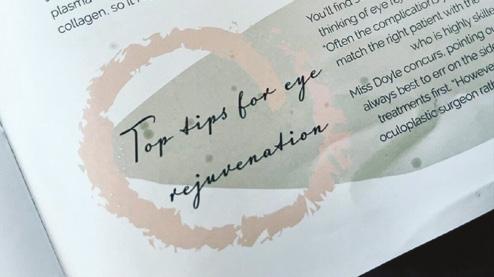
Regulation
Industry pushes for tighter regulation at the Houses of Parliament

#Laser
Professor Firas
Al-Niaimi
@drfirasalniaimi_
Honoured to be invited to speak at a major laser event as well as spending time with the clinical and scientific team.
#Education
Dr Manav Bawa
@drmanavbawa
What a privilege to learn directly from Dr Mauricio de Maio! I learned so much to bring back to my patients as well as improving my teaching.

#Event
Mr Dalvi Humzah
@pdsurgery
A tremendous amount of hard work and stamina to be still standing after three days of this conference. Thank you to all the faculty, colleagues and friends.

#Anatomy
HA-Derma
@ha_dermauk
Amazing two days of learning anatomy at the Royal College of Surgeons in Edinburgh. Thank you to all our customers for attending.

Industry stakeholders visited the Houses of Parliament in June to discuss the key issues relating to the recent proposed license in the Health and Care Bill. Dr Paul Charlson, trustee of the Joint Council of Cosmetic Practitioners (JCCP), organised the meeting with Tamara Sandoul, policy officer at the Chartered Institute of Environmental Health to join with the Conservative Health Group at the House of Commons. The meeting was an hour and a half and was joined by Honourable Maria Caulfield MP under the Secretary of State for Health and Social Care. Within the meeting, a particular topic discussed was a need for a set of standards and requirements for each type of aesthetic procedure to fall within the scope of a licence.
The Health and Care Bill will include a new licensing scheme for those carrying out cosmetic procedures, which aims to create consistent training for individuals, as well as hygiene and safety standards for premises. Professor David Sines, executive chair and registrar of the JCCP who attended the meeting, said, “During this meeting, we discussed the standards should be nationally set so that there is a level playing field across England and all practitioners, as well as regulators, are clear on what conditions would need to be met to obtain a licence. A system of accreditation for training courses and providers should also be set nationally to make the licensing scheme work well at protecting the public. We look forward to taking this agenda forward on the basis of co-design and national consultation.”
The Bill is expected to be put in place in 2024.
Acquisition
Prollenium acquires SoftFil cannulas

Medical device manufacturer
Prollenium has acquired microcannula brand SoftFil. According to the company, there are 23 different SoftFil cannula lengths for the face and body, which contain markers to help locate the tip with a red dot to indicate where the product will emerge. CEO of SoftFil, Dr Sandrine Sebban, said, “Prollenium is certainly building a strong aesthetic empire with its acquisition of SoftFil, designed to push the borders of innovation to achieve beautiful, precise but most importantly safe results. Prollenium’s dermal filler brand Revanesse, has an impressive safety profile and its unique qualities certainly make it a filler of the future. I like all things committed to innovation and the betterment of the aesthetics industry.”

@aestheticsgroup @aestheticsjournaluk Aesthetics aestheticsjournal.com Reproduced from Aesthetics | Volume 9/Issue 8 - July 2022
Vital Statistics Awards The Aesthetics Awards announces new venue
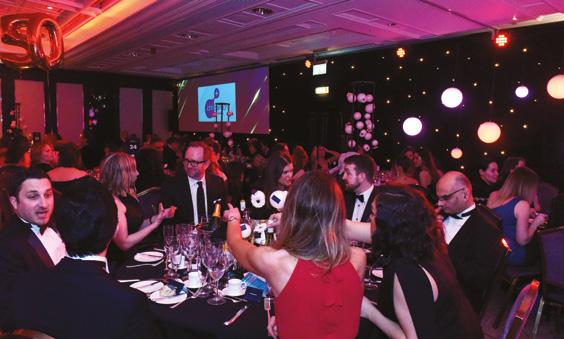
London’s most prestigious and glamorous awards venue
Grosvenor House will be the new home for The Aesthetics Awards annual ceremony.
Due to meeting capacity limits of the previous venue with 800 tickets selling out months before the event, the Aesthetics Awards ceremony will now be taking place at a new venue in order to accommodate more guests and a more luxury ceremony experience. Shannon Kilgariff, editor and content manager of the Aesthetics journal, said, “We are so excited for next year’s Aesthetics Awards to be held at the prestigious Grosvenor House. The Aesthetics Awards are known as the ‘Oscars of Aesthetics’ and we want to ensure that our Awards feel like this with a more prestigious venue! The 2023 Aesthetics Awards ceremony is going to be the biggest and best one yet so don’t forget to enter to be in with a chance of becoming a Finalist!”
Entry for The Aesthetics Awards 2023 opens on July 31 and closes on September 30. Turn to p.70 to read top entry tips from some of last year’s winners. The Aesthetics Awards will be taking place on March 11 after the second day of the Aesthetics Conference and Exhibition (ACE).
Research Study reveals improved glabellar lines from liquid toxin
Pharmaceutical company Galderma has released the results of its two phase III studies for its liquid formulation of botulinumtoxinA (relabotulinumtoxinA) called Alluzience. The results, which were announced at the Vegas Cosmetic Surgery & Aesthetic Dermatology meeting, demonstrated that relabotulinumtoxinA improves both glabellar and lateral canthal lines. The READY phase III clinical programme comprised of four phase III clinical trials, which enrolled more than 1,900 participants. The first trial, READY-1, investigated the treatment of moderate-to-severe glabellar lines in 300 participants who were followed for six months. Participant satisfaction was also high for relabotulinumtoxinA vs placebo. At month one, 97% of participants were satisfied with the outcome of treatment and 86% remained satisfied at month six. Treated participants were also highly satisfied with how natural they looked (97% at month one, 88% at month six). The second study, READY-2 investigated the treatment of moderate-to-severe lateral canthal lines. In both studies, the toxin was well tolerated with only 3.6% of participants in READY-1 experiencing a treatment-related adverse event; the most common was a headache. In READY-2, adverse events occurred in 6.1% and the most common was injection-site bruising. Dr Baldo Scassellati Sforzolini, global head of research and development at Galderma, said, “We developed this innovative neuromodulator to respond directly to the needs of healthcare professionals and the expectations of patients who are looking for a safe, effective, long-lasting treatment. We wanted to offer consistency in results for frown lines and crow’s feet, which can have a significant impact on patients’ self-esteem and wellbeing.”
34% of 2,000 social media users struggle to make time for their personal wellbeing due to being online (Rescue UK, 2022)
In a survey of 1,000 British women, 70% are worried about the effects the menopause has on their skin (KLORIS, 2022)
52% of 2,000 women feel self-conscious about their hair loss along with 42% feeling less confident (Philip Kingsley, 2022)
65% of 200 marketers said they wanted to build awareness for their brand, and 64% said that video content helped them achieve that (Motioncue, 2022)
In a survey of 20,000 US physicians, one in five doctors plan to leave medicine within two years due to COVID-19 related burnout (Mayo Clinic Proceedings, 2022)
In a survey of 991 people, 90% of women and 95% of men would not consider cosmetic treatments from someone who was not a medical professional (Cosmetic Surgery Solicitors, 2022)
@aestheticsgroup @aestheticsjournaluk Aesthetics aestheticsjournal.com Reproduced from Aesthetics | Volume 9/Issue 8 - July 2022
Events Diary
9th September IAPCAM iapcam.co.uk
10th September BCAM conference bcam.ac.uk
15th-16th September
The BACN Autumn Aesthetic Conference bacn.org.uk
13th-14th October
CCR ccrlondon.com
Skin Meder Beauty introduces new body products

Swiss professional skincare brand Meder Beauty Science has launched three new microbiome-friendly body products. The Body-Day is a natural prebiotic deodorant cream that aims to manage the microbiome to eliminate unpleasant odours whilst maintaining and nourishing the skin. Eu-Body anti-acne body cream is designed for breakouts on the neck. Both products contain plant stem cell extracts to eliminate pathogenic biofilms which play a vital role in the bacteria causing malodour, explains Meder Beauty. The third product is the Heavy-Legs relief gel, which aims to restore comfort to tired and heavy legs but strengthens capillaries. The product contains horse chestnut extract to help with varicose veins, and combines menthol crystals derived from Japanese mint, which increases blood flow and activates circulation. Georgina Mantell, head of marketing at Meder Beauty, said, “Each of our body products has targeted care with formulations that haven’t been seen on the market before, combining prebiotics, probiotics, peptides, plant extracts and new stem cells biohacking bacterial communication, while also being anti-inflammatory.”
Industry Lee Brine joins Solta Medical
Aesthetic device manufacturer Solta Medical has welcomed Lee Brine as its new UK and Ireland business manager. Brine has more than 30 years of experience in medical sales and marketing and joins the company from BTL Aesthetics as head of UK aesthetic sales. His career background includes 10 years as international sales and marketing director of Gyrus Medical PLC, as well as UK country manager for UltraShape. Brine said, “I am truly delighted to be working with a company that offers trusted devices with a wealth of clinical success to back their claims. I look forward to working with a number of exceptional physicians within the medical aesthetics industry as we move forward with a number of targeted growth strategies and extensive consumer awareness programmes. This is to ensure continued and accelerated brand success to benefit our clinics both new and existing.”

Trends
Practitioners highlight new trending skin terms
The terms ‘skinxiety’, ‘tired face’ and ‘red face’ are currently trending in the medical aesthetic industry, according to practitioners. Aesthetic practitioner and scientific director of FACE conference, Dr Uliana Gout, who is also the president of the British College of Aesthetic Medicine, explained that the rise in these terms have come following the pandemic. She said, “I’ve coined several terms which I have observed in the last year or so. Skinxiety marks the importance of taking time to really appreciate the psychological impact that phenomen such as ‘maskne’ and ‘zoom face’ have had on the general public’s perception of themselves. Tired face marks the latest phenomenon we are seeing – the residual impact of the exhaustion we have suffered in the last two years. Red face refers to the red complexions, dilated facial veins and aggravation of rosacea that we are increasingly seeing!”
Plastic surgeon and scientific director of the FACE conference Mr Ali Pirayesh agreed that the pandemic has had a large impact on skin trends. “We are seeing a continuing rise of non-surgical and surgical aesthetic procedures due to people being more aware of their ‘zoom face’ and being able to work from home allowing for more protracted downtime after aesthetic surgery.”
Teoxane welcomes new product specialist
Aesthetic manufacturer Teoxane has introduced Tracy Abraham as its new product specialist. Abraham will be utilising her sales and customer experience to develop the company’s business in the East territory. She will be working with existing customers to maintain relationships and support them in achieving their professional and business goals, as well as identifying and supporting new customers to the brand, explains Teoxane. Abraham has worked in facial aesthetics for six years and has more than 17 years’ worth of experience in skincare. Hannah Nolan, national sales manager at Teoxane, said, “We are delighted that Abraham has joined Teoxane’s growing team of product specialists. With a wealth of experience within the industry, she will be on hand to support our customers in the East of the UK.”
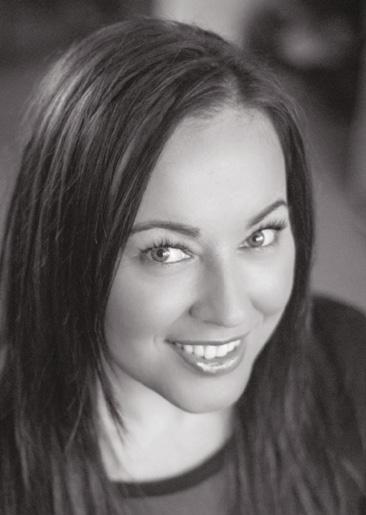 Recruitment
Recruitment
@aestheticsgroup @aestheticsjournaluk Aesthetics aestheticsjournal.com Reproduced from Aesthetics | Volume 9/Issue 8 - July 2022
Conference
CCR announces Galderma as Headline Sponsor
Pharmaceutical company Galderma will be the Headline Sponsor at CCR in October.
Galderma are set to deliver brand new content exclusive to CCR. With them they will bring world-renowned key opinion leaders to their symposium sessions and essential opportunities to catch up with friends and colleagues at the Galderma Networking Bar.
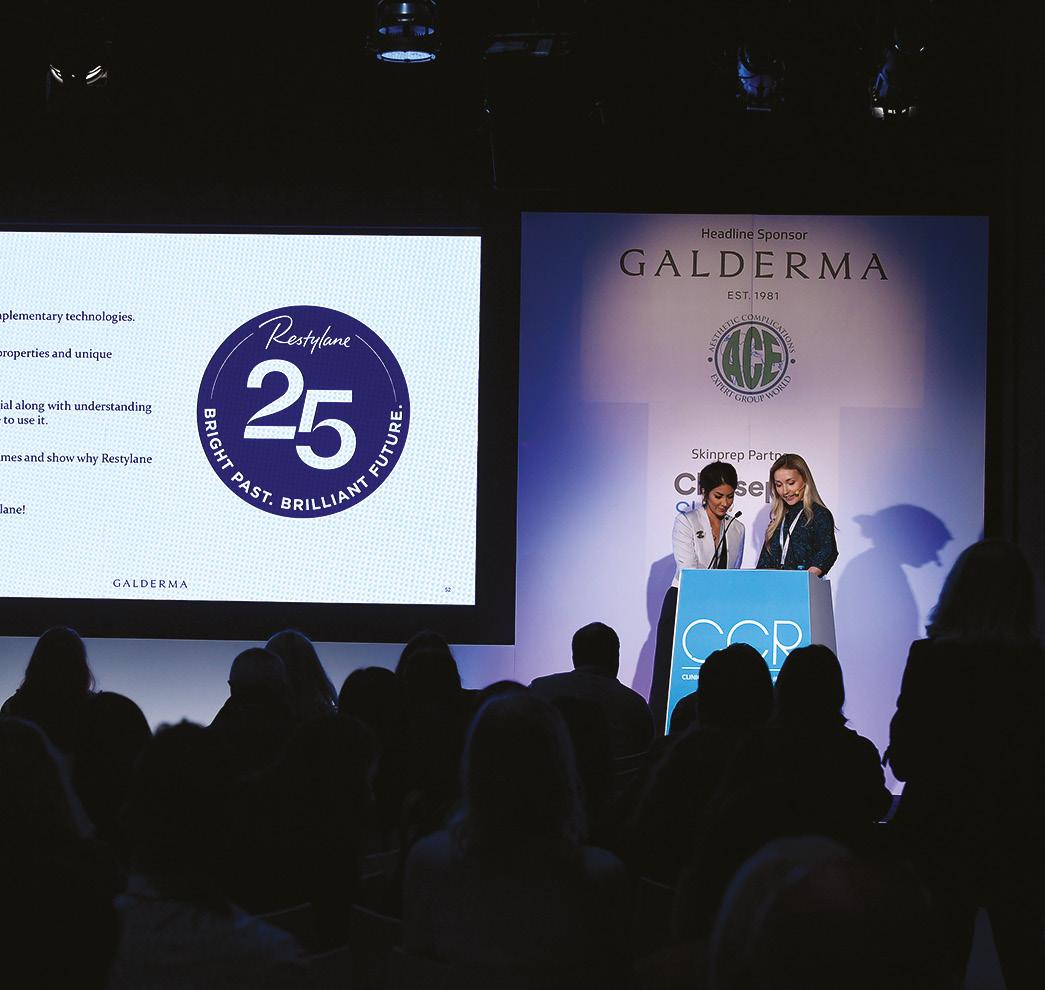
Joanna Neal, brand manager at Galderma, said, “Galderma is delighted to be back at CCR as Headline Sponsors for the second year in a row after the success of 2021. CCR is the perfect platform for us to showcase what’s new with our brands and engage with practitioners and our industry colleagues. We can’t wait to see everyone in October!”
Courtney LeBorgne, event director of Aesthetics and CCR, commented, “We are thrilled to have Galderma as Headline Sponsor of CCR for the second time. CCR is the perfect opportunity for the surgical and non-surgical specialties to reunite under one roof. With expert speakers, educational content, industry brands and suppliers, plus networking opportunities, CCR is the event to attend this October.”
CCR will take place on October 13-14 at ExCeL, London. Register to attend for free on p.20
Training
Cutera to host educational workshop in Cardiff
Aesthetic manufacturer Cutera is holding a new Advanced Core of Knowledge training and business workshop event.
The event will be taking place on July 11 at the Celtic Manor in Cardiff. The event is in partnership with IPL and laser training company Wynyard Aesthetics Academy with the aim of empowering educational excellence through innovation and supporting aesthetic and medical practices to reach their potential through business and marketing talks, explains Cutera.
Cutera notes that the event will feature 60 CPD advanced Core of Knowledge courses presented by laser specialist Kevin Williams, business coach Ron Myers and business development manager from SkinCeuticals Georgina Mifsud.
The event will cover the fundamentals of laser and light-based devices, including risk assessment, basic safety requirements and applications.
The event will also discuss the latest skin rejuvenation advancements and the importance of integrating skincare, as well as how to create value in aesthetics that support premium pricing and share insights to help aesthetic businesses grow.
Williams said, “Cutera is a pioneer and forward-thinking leader in the industry. It is wonderful to see the company invest in learning in Wales. Cutera is taking its innovation a step further, expanding educational programmes across the UK to better connect clients and opportunities through breakthrough technologies.”
BACN UPDATES

A round-up of the latest news and events from the British Association of Cosmetic Nurses AUTUMN

AESTHETIC CONFERENCE
It’s conference, conference, conference at BACN HQ right now!
After an amazing first response to our Autumn Aesthetic Conference tickets going on sale, we’re excited to share what we’ve got planned for the annual get-together this September 15-16.
This year, we’re pulling out all the stops to make it our most memorable conference yet. We have an A-list line-up in the works, with talks on the latest complications guidance from some of the world’s leading experts, and topics ranging from off-label toxin to anatomy, ocular anatomy, crucial prescribing advice, branding, marketing, and lobbying and regulation specific to nursing. That’s not to forget talks and demonstrations with KOLs from conference partners such as 5 Squirrels, AestheticSource, Croma-Pharma, Galderma, HA-Derma, Merz Aesthetics, Prollenium and ZO Skin Health.
On top of an impressive agenda, we’ll have 25 handpicked exhibitors set up in the room next door – covering everything you need for your aesthetic business. The exhibitor list is available to view on the BACN website!
Our Autumn Aesthetic Conference will be hosted at a brand-new venue. In the heart of Birmingham’s east side, The Eastside Rooms offers an ultra-chic conference venue and hotel all-in-one building.
As well as offering Full Two-Day Pass Tickets, we also have Earlybird Full Two-Day Pass Tickets and Thursday Hotel Packages available for those who are travelling from out-of-town and want to stay right in the hub of it. This option has proven very popular, and we now have less than five Earlybird Full Two-Day Pass Tickets and Thursday Hotel Packages remaining! Once these sell out, rooms will be bookable directly through the Eastside Rooms at a non-discounted rate.
All tickets and conference information is available to access now by scanning the QR code!
This column is written and supported by the BACN
@aestheticsgroup @aestheticsjournaluk Aesthetics aestheticsjournal.com Reproduced from Aesthetics | Volume 9/Issue 8 - July 2022
Dermalogica unveils new exfoliator
Skincare brand Dermalogica has launched a new daily exfoliator called daily milkfoliant. The product aims to gently polish the skin, replenish and support the skin’s moisture barrier and relieve skin with calming and soothing ingredients. These ingredients include coconut milk to smooth skin, alpha hydroxy acids and beta hydroxy acids to remove dead skin cells, papain extract to resurface skin and saccharide, and hyaluronic acid to support the skin barrier, explains Dermalogica.

In a clinical trial of 30 subjects who used the milkfoliant once a day for a week, 90% reported having significant smoothness after one use. Collaboration
Cavendish Clinic partners with John Lewis
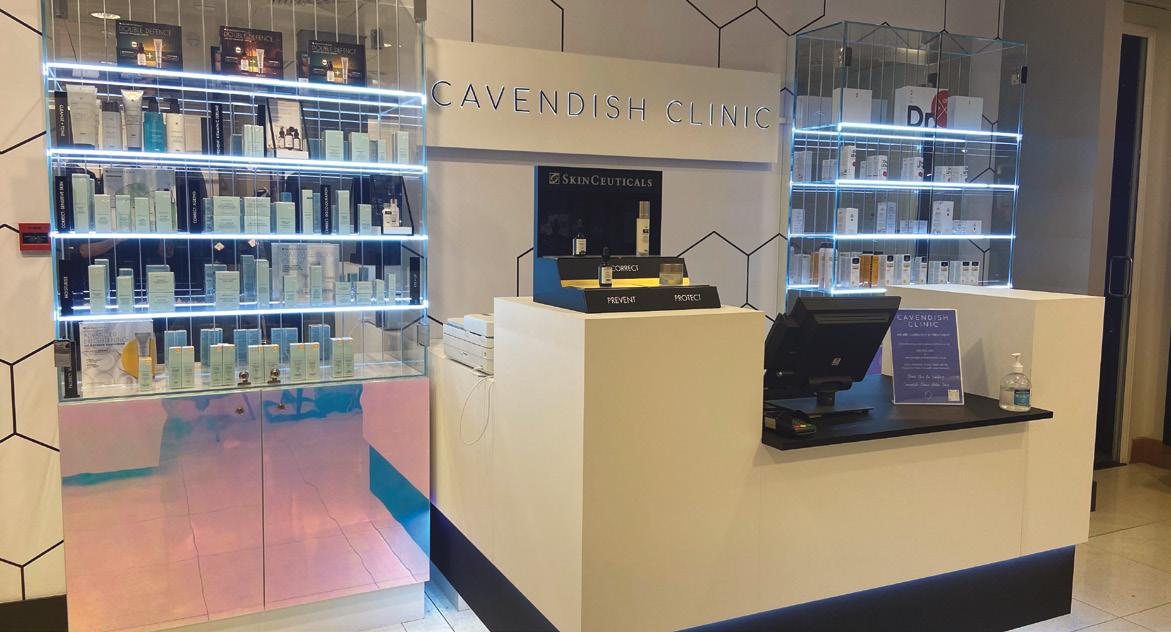
Expansion Harpar Grace introduces new commercial director
UK aesthetics distributor Harpar Grace International has welcomed Paul McLintock as a global commercial director.
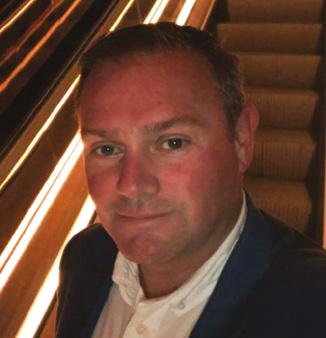
McLintock will be responsible for developing and delivering a global strategic growth plan for the business. He has previously launched Italian luxury skincare brand Comfort Zone as a subsidiary in the UK and Ireland, overseeing the business transformation across the UK and US for Aromatherapy Associates and Crabtree & Evelyn as their global commercial director. McLintock said, “With the business seeing substantial year on year growth after successfully adapting and evolving its business model since its conception, I am joining Harpar Grace at such an exciting time. Founder Alana Marie Chalmers and the board have made me very welcome and I’m excited to get started and continue to build on the success of the owned and distributed brand portfolio.”
Skin health
DNA skin testing kit launches
Aesthetic clinic The Cavendish Clinic has collaborated with department store John Lewis & Partners. Following a successful pilot with The Cavendish Clinics in five John Lewis stores in 2021, the collaboration has extended. The move comes in response to in-depth customer research and feedback from John Lewis, highlighting that a high proportion of customers were interested in advanced beauty treatments, ranging from laser hair removal to anti-wrinkle treatments.
Dr Matt James, co-founder of The Cavendish Clinic, said, “We are delighted to be partnering with John Lewis on this exciting journey. We are fully aligned on our beliefs and values about providing the highest quality treatments in an ethical, medically-led environment and we look forward to helping consumers discover more about advanced skin, beauty and wellbeing treatments and decide what is right for them.”
Head of Beauty at John Lewis, Jason Wilary-Attew, commented, “We know there’s increasing awareness and demand among consumers for advanced beauty treatments and after careful consideration, we were keen to collaborate with a trusted, medical clinic brand which would deliver this service. Our collaboration with the Cavendish Clinic is an acceleration of these services, where customers can visit a clinic in selected John Lewis stores to experience Cavendish bespoke skincare plans and consultations.”
DNA testing company Team Gene Skin has launched a new personalised skincare treatment test. According to the company, the test is for professional use only and the results enable professionals to design a bespoke skin health programme utilising the treatment menu and products available at their premises. The test is suitable for patients 18 years or older and reports genetic information shown to influence skin health. The test has been chosen to scientifically research genes that code for collagen production, as well as the individual’s ability to utilise vitamins and minerals. The test is a single swab, brushed inside the cheek for 30 seconds on each side and takes place in the clinic, adds Team Gene Skin. The results are split into three categories: strength to build collagen synthesis support through treatments and collagen products; nourish for vitamin and mineral support such as vitamin C, vitamin A and zinc through serums and facials and the third category is combined in which patients need support through treatments and products, explains the company.
The results take four weeks to arrive through a detailed report to the clinic. The clinic can then contact the patient to book in a consultation, explain the results and create a bespoke treatment plan.
Karen Harrison, founder of Team Gene Skin, commented, “The Team Gene Skin test includes the genes that code for these vital nutrients, helping the professional to target these nutrients in their treatments and to recommend an at-home skin health regime from the clinic’s retail products.”
Skin
@aestheticsgroup @aestheticsjournaluk Aesthetics aestheticsjournal.com Reproduced from Aesthetics | Volume 9/Issue 8 - July 2022
HydraFacial to sponsor VIP experience at CCR

Aesthetic manufacturer HydraFacial will be sponsoring the VIP experience at CCR in October. Lauren Gibson, country manager of UK and Ireland at HydraFacial, said, “CCR is going to be an exciting, jam-packed event for the HydraFacial team, and we couldn’t be happier to be a VIP sponsor. This is an incredible event for the industry to reconnect, meet new potential clients and breakthrough the ceiling of how things can be done!” Courtney LeBorgne, event director of Aesthetics & CCR, commented, “We are thrilled to announce HydraFacial as VIP experience sponsors at CCR this year. HydraFacial have been avid supporters of CCR and our other aesthetic conferences, so it is a pleasure to have them sponsoring at this year’s CCR. We have got lots of exciting new content and features this year so make sure to register for free, so you don’t miss out!” Aesthetic distributor AestheticSource will also be sponsoring the registration at CCR this year. CCR will be taking place on October 13-14 at ExCeL, London. Turn to p.20 to register for free.
Eyes
Study suggests serum improves under-eye wrinkles
Skincare distributor Eden Aesthetics has released results from its blinded, split-face, controlled clinical trial of the Epionce Luminous Eye Serum.
The Eye Serum aims to reduce fine lines, wrinkles, crepiness and dark circles, and includes 12 botanicals and four algae extracts in a proprietary formulation.
The 14-week study included 23 women between the ages of 45-75 with moderate to severe photoaging of the periocular area.
Participants were randomly assigned to treating one side of the eye area (right or left) with the Renewal Eye Cream and the contralateral eye area with the Luminous Eye Serum and Eye Cream.
The results concluded that Epionce Luminous Eye Serum followed by Renewal Eye Cream produced highly statistically significant (p<0.001) reduction in fine lines, wrinkles, crepiness and dark circles in the periocular area within four weeks. In terms of patient assessment, participants were provided questionnaires to complete at each clinic visit. By week eight, 82% of panellists agreed that fine lines and wrinkles in the eye area had improved and that they could see additional antiageing results.
Also at week eight, 95% of panellists agreed that they felt the serum was hydrating, they liked using the serum and would recommend to a friend. Aesthetic practitioner Dr Amiee Vyas, who uses the Epionce products, said, “The powerful combination of the Epionce Luminous Eye Serum and the Epionce Renewal Eye cream visibly improves signs of ageing in the eye area. It gives the delicate skin around the eye area a much needed hydration boost and reduces creepiness, droopiness and dark circles, while providing protection against pollution blue light and visible light to minimise further ageing to the area.”
Reach Aesthetics Focused Patients at Beauty Uncovered LIVE 2023
The conference leading on patient safety and uniting key associations and practitioners to steer patient education. On May 7 & 8, this year Beauty Uncovered LIVE set up residency at the Business Design Centre in the heart of Islington, London. The show was a resounding success, with visitors taking part in live treatment demos, asking key questions, learning about the latest trends in this booming industry and of course, purchasing products and booking appointments. With incredible speakers, a great atmosphere and wonderful educational opportunities, we had everything your patients could have wanted from an exciting consumer show!
Connecting with consumers
The floor plan for Beauty Uncovered LIVE 2023 is filling up fast with the latest exciting brands and innovations. Thousands of consumers will be looking for the best treatments, products and services – placing you at the forefront of patient trends, achieving patient safety and giving you credibility among consumers. Put yourself in the spotlight and uncover success for your clinic by booking a stand at our 2023 show at our early bird discounted rate.
What our exhibitors thought… “This was our first public facing event. We are very used to presenting ourselves to our business customers, however at Beauty Uncovered LIVE we spoke to the public about our dermal filler ranges and our skincare range. We wanted to offer this very unique opportunity to our customers by running free consultations in order to ensure they received the right treatment option. Exhibiting at Beauty Uncovered LIVE meant that we got to meet the end user of our products which we’ve never really done before.” – Daniella Sansum, design and digital manager, TEOXANE
“Beauty Uncovered LIVE is a phenomenal platform for communicating directly with the consumer, which is something we don’t always get the opportunity to do.”

– Dr Uliana Gout, London Aesthetic Medicine (LAM)

Beauty Uncovered LIVE will be taking place on May 6-7, 2023 at the Business Design Centre, London.
SCAN THE QR CODE TO ENQUIRE ABOUT EXHIBITING
Conference
@aestheticsgroup @aestheticsjournaluk Aesthetics aestheticsjournal.com Reproduced from Aesthetics | Volume 9/Issue 8 - July 2022
Human technology skin learning tool launches
Skincare brand Dermalogica has adopted a metahuman technology called Natalia to support skincare education for skin professionals and consumers. The photorealistic digital human technology is a training tool to focus on product results as it realistically simulates conditions such as ageing, dehydration and sensitivity, so learners can understand how the skin responds to natural and environmental triggers. Natalia was unveiled alongside Dermalogica’s recent Awaken Peptide Eye Gel launch, where the technology was used to demonstrate how the skin and muscle surrounding the eye area can be weakened over time. Learners could watch how the fat supporting the eye area migrates into the lower lid, resulting in under-eye puffiness that contributes to the appearance of fine lines and wrinkles. Global CEO of Dermalogica, Aurelian Lis, commented, “We can now use metaverse technology to train millions of consumers and hundreds of thousands of professionals about changing skin conditions. Education has always been at the forefront of Dermalogica’s core values and Natalia seeks to elevate this through providing a fun, immersive learning environment that breaks traditional norms.”
Menopause
BMS clarifies stance on menopause testing kits
The British Menopause Society (BMS) has released a statement to the public urging women to seek expert medical advice rather than relying on over-the-counter menopause tests. According to the BMS, menopause tests have recently become more readily available to patients. The tests can be purchased online without a prescription and aim to accurately measure levels of follicle-stimulating hormone (FSH), which helps to manage the menstrual cycle. However, according to the NHS guidelines, women over 45 should be discouraged from the FSH testing with menopausal symptoms such as hot flushes as it does not provide an accurate diagnosis of the patient’s symptoms. Mr Haitham Hamoda, consultant gynaecologist and subspecialist in reproductive medicine at King’s College Hospital, said, “We encourage women to seek support from a healthcare professional if they think they might be experiencing the menopause rather than purchasing these tests.”
VIVACY expands sales team
Aesthetic product manufacturer VIVACY has expanded its sales team in the UK. The new team members include Zoey Hughes for the home counties territory, Trudy Freeman for Scotland and Tracy McKnight for the northeast of England, explains VIVACY. Hughes has been a sales and education manager within the beauty, retail and aesthetics industry for more than 25 years, working with multiple skincare brands, clinical treatments, nutraceuticals and devices. McKnight started a career as a trained dental nurse and spent 20 years in dental sales as senior territory manager, whilst Freeman spent 18 years working as a business development manager in the beauty and cosmetic market.

Camille Nadal, country director of VIVACY, said, “Customer relationships developed by our sales team are crucial to VIVACY and we are delighted to welcome our three new team members. We now have five product specialists and one national sales manager in the sales team, covering all of the UK. We are also now looking for two more product specialists, one based in London and one in Birmingham.”
Sinclair introduces MaiLi competition
Pharmaceutical company Sinclair has launched a new competition focusing on the lips.


The judging panel is headed by Sinclair trainer aesthetic practitioner Dr Sheila Nguyen, supported by nurse prescribers Nina Prisk and Jane Wilson, with guest judge aesthetic practitioner Dr Tijion Esho and editor and content manager of the Aesthetics journal Shannon Kilgariff.
The winner will have the opportunity to attend The Sinclair World Experts Meeting in Barcelona, while second and third winners will gain a MaiLi In-Clinic Experience – a private practice session from a leading MaiLi trainer and boxes of MaiLi products.
The competition runs for three months from June, with the results announced in September. Clinicians are invited to upload images of their before and after MaiLi Lips case studies on Instagram tagging @maili_uk and use #MaiLiLipsFTW to enter as many cases as they wish.
Skin
Recruitment
Dermal filler
@aestheticsgroup @aestheticsjournaluk Aesthetics aestheticsjournal.com Reproduced from Aesthetics | Volume 9/Issue 8 - July 2022
Clothing New scrub line unveiled
Scrubs supplier Kara has introduced the new Kara Edit collection.
According to the company, the collection consists of a 10-piece range of scrubs, including tops and trousers for both men and women, available in a selection of colours. The design process involved extensive market research and learning about what customers want, explains the Kara Edit. The collection features a multi-pocket design approach throughout the range which includes pockets for ID cards, phones, pens, secure zip closures and scissor pockets.

Alexandra Allen, lead designer of the Kara Edit, explained, “Due to the challenges of developing the range whilst navigating a worldwide pandemic, the project has taken longer than originally anticipated – we started discussing the concept behind the collection more than two years ago. The extra time has allowed the team to fine tune and develop the collection further to create which we are truly proud of.”
Conference report
The Science Enhanced Anatomy Safety Outcomes Network, London
The Science Enhanced Anatomy Safety Outcomes Network (SEASON) Aesthetic Conference took place at King’s College London Guy’s Campus and the Royal Society of Medicine on June 10-12. SEASON is directed by Mr Dalvi Humzah, Dr Hema Sundaram, and Dr Tamara Griffiths and is the third congress of the Global Aesthetics Alliance (GAA). The
GAA is a not-for-profit scientific exchange that aims to advance procedural safety and outcomes in aesthetic medicine, identify unmet needs in research and development, and foster responsible media reporting in aesthetics. There were 200 delegates at the event, who were able to join in-person or virtually. Delegates joined from across the world, with a large number coming to the event from South America. Some of the speakers included South Korean anatomist Professor Hee-Jin Kim, Australian plastic surgeon Dr Tim Papadopoulos, dermatologist Dr Ashraf Badawi from Egypt and Dutch dermatologist Dr Peter Velthuis. Day one featured presentations and hands-on training in anatomy and ultrasound imaging with cadaver dissections on all areas of the face, neck, and even the hands and buttocks.
On day two, there were talks on regenerative medicine, filler science, body injectables, skin science, threads, energy-based devices, and complications discussions. On the third day, the GAA Summit took place, which explored ethics and safety in aesthetics, new technologies entering the market, evidence-based skincare and other discussions.

Following the conference, Mr Humzah said, “We believe that SEASON is a new way forward in aesthetic science and safety. Over the three days, we offered training and education from a stellar global faculty with academic and scientific priorities so that delegates could learn from experts with no hidden commercial conflicts of interest. Thank you to all the faculty, colleagues and friends new and old who made it all possible!”
News in Brief
Aesthetic Nurse Software unveils new feature Patient management system Aesthetic Nurse Software has introduced a new feature to allow patients to manage their own bookings. The company explains that the update makes it easier for patients to reschedule or cancel their appointments without needing to contact the clinic, minimising the time that practitioners spend on rearranging appointments. Co-founder of Aesthetic Nurse Software, Max Hayward, said, “We are excited to be launching another solution which will make life easier for practitioners and support them to run their clinics efficiently.”
Sinclair rebrands Pharmaceutical company Sinclair has begun a new global brand transformation. Known formally as ‘Sinclair Pharma,’ the brand has been updated to be modern, vibrant and premium, explains the company. The new branding is designed to reflect the company’s values: agility, ambition and entrepreneurship. Emilie Croissant, head of Sinclair global marketing, commented, “There’s a traditional belief that updating a brand is just updating the logo and colours. That’s part of it but it’s more than that. It’s about transforming customer confidence and letting customers know we are by their side through all our global communication. We needed to engage our global teams with the same brand vision.”
Cosmetic PR expands to the UAE PR company Cosmetic PR has expanded to Dubai. The company are able to assist prospective and new clients in the UAE within medical aesthetics. Lucy Hilson, founder of Cosmetic PR, said, “We are so excited to be launching Cosmetic PR in the UAE. Having a base in Dubai felt like a natural step for us. We’re thrilled to be already working with some of the UAE’s leading aesthetic brands! We will be offering all of our traditional PR services, but with added opportunities – such as brand development and business growth strategies. As well as supporting UAE businesses, we will also be helping UK aesthetic professionals set up in Dubai.”
PEAL Capital Group acquires Derma Medical Training provider Derma Medical has been acquired by private equity firm PEAL Capital Group. According to the company, the expansion is to include operational expertise with PEAL Capital Group. The company reposition businesses to help with international expansion and growth.
@aestheticsgroup @aestheticsjournaluk Aesthetics aestheticsjournal.com Reproduced from Aesthetics | Volume 9/Issue 8 - July 2022
London
Tuesday 9th August
Tuesday 6th September
Monday 24th October
Tuesday 15th November
Manchester
Friday 12th August
Tuesday 4th October
Bristol
Wednesday 23rd November
Loughborough

Wednesday 10th August
Wednesday 14th September
Wednesday 12th October
Wednesday 16th November
Training
ChurchPharmacyUK training@churchpharmacy.co.uk ChurchPharmacy www.churchpharmacy.co.uk/training 1:1 EXPERT INJECTION TRAINING Lips Masterclass (coming soon) HEXA Ligament Lift Mid Face Lower Face Temples Modules
Upcoming
2022
With 16 simultaneous session rooms, the extensive programme consisted of 1,881 presentations featuring 768 expert speakers and provided up to 360 learning hours to physician attendees and participants. The congress also included a immense exhibition, with 337 participating exhibitors highlighting the latest products and innovations available in medical aesthetics.
Some of the session highlights from the event were the impressive live anatomy on cadaver workshops, which combined live cadaver dissections alongside live treatment procedures, as well as live surgery courses featuring a neck and face lift, chest and breast surgery and gluteal augmentation.
IMCAS Annual World Congress Returns



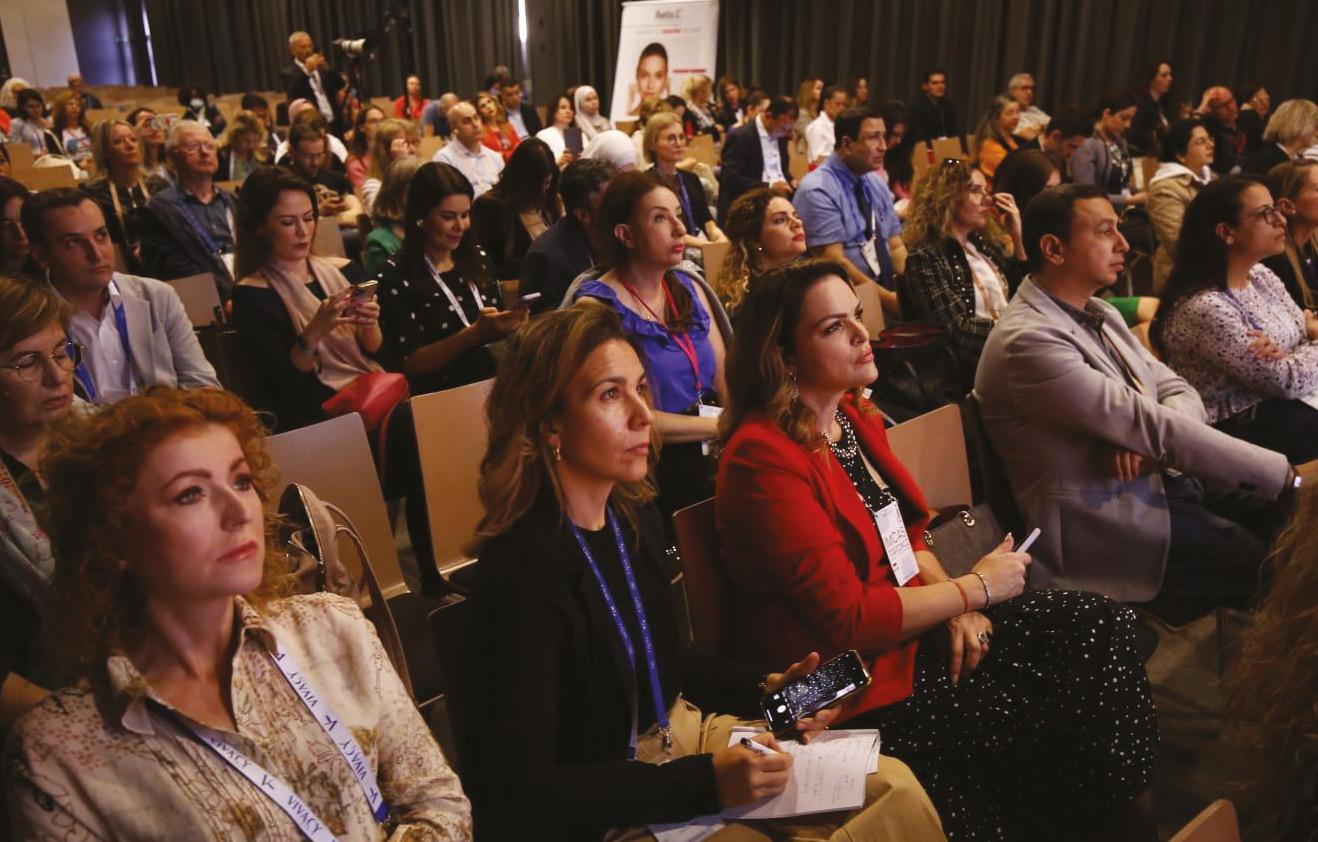
Take a look at some of the highlights from the 23rd edition of the IMCAS Congress held in Paris, France
With record-breaking attendance, the International Master Course on Aging Science (IMCAS) celebrated the 23rd edition of the Annual World Congress on June 3-5 at the Palais de Congrès in Paris. One of the largest educational medical congresses for dermatology, plastic surgery and aesthetic science, the much-awaited medical event was finally able to take place in-person after a two-year pandemic period and it was clearly anticipated by attendees. This year’s edition proved to be an enormous three-day event, with a recorded 14,248 participants from a total of 121 countries from around the world, making it by far the largest IMCAS congress to date.
The overarching theme for this year’s congress was innovation and the scientific programme touched on this through a variety of topics within aesthetics. Topics included ultrasonography, dermal fillers, botulinum toxins, body shaping, lasers and energy-based devices, clinical dermatology, cosmeceuticals, face, breast, and body surgery, platelet-rich plasma and lipofilling, threads, hair restoration, genital treatments, practice management, male treatments and future technology.
The IMCAS Global Market Summit was also a major feature of this year’s congress which explored the innovation and economic trends of the aesthetic industry and market. The session series kicked off with the popular Innovation Tank, presenting some of the industry’s most promising start-ups with an award presented to the most impressive and innovative companies. The winning start-ups will be publicly announced and featured later this month through the IMCAS newsletter and Academy platform.
Following the competition, The Investors Forum presented a full aesthetic market analysis focusing on challenges and upcoming industry opportunities. The series concluded with The World Economic Tribune, which explored current market trends and figures, as well as strategies of leading industry representatives.
On its final day, the congress fully embraced intergenerational progress through the Young Physicians session series. This series enabled established practitioners and upcoming physicians to discuss case specific questions and challenges with aesthetic procedures. The series also contained an award session to acknowledge the rising work of young physicians and dermatologists within the growing aesthetic fields. These sessions provided a unique space for both established and upcoming generations to engage and share practical medical knowledge for a truly inspiring and innovative learning experience.
Following the 2022 World Congress, IMCAS announced the return of the 24th World Congress edition, to be held in Paris in January 2023. They also continue their congress experiences around the globe with events later this year including IMCAS Americas in Cartagena, Colombia from July 21-23 and IMCAS Asia in Bangkok, Thailand during September 29 to October 1.
@aestheticsgroup @aestheticsjournaluk Aesthetics aestheticsjournal.com Reproduced from Aesthetics | Volume 9/Issue 8 - July 2022
Regulating Remote Prescribing
Aesthetics
In the UK, remote prescribing has been a topic of controversy for many years in medical aesthetics. In 2019, the General Medical Council issued a set of principles to help protect patient safety and welfare when accessing medication online or over the phone.1 The principles tightened prescribing rules, banning prescription-only medicines (POMs) such as toxin from being prescribed remotely.
Despite this, there have been numerous incidences where practitioners have not complied with this guidance. For example, in December 2021, Aesthetics reported on the ethical issues surrounding remote prescribing after an investigation published by The Sunday Times exposed four medical professionals running side-line businesses in which they prescribed toxin to patients they’d never met.3 In June, the Joint Council of Cosmetic Practitioners (JCCP) published a new statement on responsible prescribing for cosmetic procedures.2 It is an update from its 2019 guidance and has been published in direct response to industry complaints and with the Government’s new proposed licensing regime in mind.4
The guidelines detail the provision of stock and wholesale dealing, the requirement for informed consent, repeat prescribing, competing interests and prescribing in an emergency. The main changes in the updated guidelines are regarding delegation and the supply of POMs. The current JCCP guidance concerns all non-surgical cosmetic procedures that are either cosmetic, medical or medically-related in nature.
Following the release of the new guidelines, we spoke to JCCP Clinical Advisory Group co-chair and nurse prescriber Andrew Rankin, and chair of the British College of Aesthetic Medicine’s (BCAM) regulatory, ethics and professional standards committee Dr John Curran, to learn what the updated prescribing guidelines mean for the aesthetics industry.
Responsible delegation
The first major change in the new guidance is responsible delegation. This refers to when a prescribing practitioner delegates the administration of the medicine to a responsible and competent person. According to Rankin, the JCCP believed delegation within prescribing was leading to some confusion among the industry, so a clearer message needed to be instated.
According to the JCCP, some delegated practitioners were unable to determine the final dose after reconstitution of a medicine for parenteral administration, such as toxin. Therefore, sufficient evidence of requisite competency, including ‘numeracy and literacy’ skills to determine the dose at a given dilution, is necessary to ensure the safe administration of the medicine.2
Rankin notes, “The JCCP were receiving confusion among practitioners regarding delegation and the particular roles that practitioners had once they had delegated their patient. Therefore, we have reinforced the point that the treating practitioner understands the patient and for the prescribing practitioner to be confident that the treating practitioner they are delegating to is competent in every aspect. This includes being able to reconstitute the toxin in a sterile environment, having good mathematical skills to ensure correct dosing, and that the prescribing practitioner is assured that the treating practitioner is not advertising POMs to patients or online. This can only be ensured by the industry itself reporting incompetent prescribers and adding into the new Bill to make it lawful.”
On the other hand, Dr Curran believes that many practitioners are ignorant to the letter of the prescribing laws, rather than confused. He states, “The JCCP is doing a good job and an important one. I see examples of ignorance among practitioners on a regular basis. The prescribing regulations are already in place but too many practitioners are not aware of their professional obligations or the laws governing this important activity. Prescribing practitioners must ensure that any practitioner they delegate to is competent to receive, understand and implement instructions exactly. This will include the administration of any medicine.”
Supplying prescription-only medicines
Another main update outlined in the prescribing guidance is regarding the supply of POMs.
The JCCP is aware that it is commonly considered normal practice to supply parenteral medicines via a private prescription without the provision of any further patient direction, such as the total units of toxin needed. Prescribers often use this approach to facilitate autonomy, enabling the treating practitioner to determine for themselves the dose required for the individual patient. However, the law makes it clear that ‘direction’ is a key element of prescribing.2
Rankin outlines that supplying POMs should be done appropriately and breaking this could be committing a crime. He explains, “Concerns were raised over practitioners trying to get hold of as much POMs as they could for use in ways that are often illegal. The new JCCP guidance highlights the

@aestheticsgroup @aestheticsjournaluk Aesthetics aestheticsjournal.com Reproduced from Aesthetics | Volume 9/Issue 8 - July 2022
explores what the new JCCP guidance means for remote prescribing and why these guidelines should be adhered to
relevant legislation and urges practitioners to prescribe the exact measurement of toxin with the appropriate units and to ensure that treating practitioners are not keeping leftover toxin in their clinics. Practitioners should only be prescribing for the exact amount that their patient needs.”

Rankin outlines that the Human Medicines Regulations 2012 describes the appropriate laws surrounding POMs which should be adhered to and practitioners should have a read through of this document to ensure they are complying with prescribing laws.5 It is the first comprehensive, cosmetic specific prescribing guidance which aims to apply to all prescribers. Created and endorsed by the JCCP Clinical Advisory Group whose wide-ranging membership includes industry experts and regulators, it is a valuable and credible resource.
Dr Curran notes that the exact measurements of POMs will vary between patients. He adds, “The practice of medicine, particularly prescribing, is an exact science. Patients have a right to receive exactly what their clinician has prescribed, and the prescriber has a clear duty of care to ensure this happens.”
Help endorse best prescribing practice
The new guidance sets out the appropriate laws and protocols which prescribers in aesthetics should adhere to, although the JCCP also urges practitioners to refamiliarise themselves with guidance from their own professional bodies (e.g. GMC/GDC/NMC). Rankin notes, “The JCCP has considered and built on advice provided by registrants of all professional regulators as well as the MHRA. It is essential that prescribers have the knowledge and expertise to prescribe appropriately as it is pivotal for patient safety.”
Dr Curran urges healthcare professionals to report improper or unlawful prescribing that puts patients at risk. “Combined with guidance from our regulators and the MHRA, the JCCP advice gives prescribers a clear and comprehensive pathway for ethical and safe practice within aesthetics. We all have an obligation to offer support and guidance to colleagues who appear not to be practising to expected standards. However, where there is a lack of clinical
insight or practices which may bring harm to patients, we are obliged to report to our professional bodies any wrongdoing.”
REFERENCES
1. General Medical Council, ‘Principles for good practice issued to protect patients online’, 2019, <https://www.gmc-uk.org/news/ news-archive/principles-for-good-practice-issued-to-protectpatients-online>
2. Joint Council for Cosmetic Practitioners, ‘JCCP Guidance Statement – Responsible Prescribing for Cosmetic Procedures’, 2022, <https://www.jccp.org.uk/NewsEvent/press-release-45publication-on-revised-and-updated-guidance-for-responsibleprescribing-for-cosmetic-practitioners>
3. Carver H, ‘News Special: Exploring Remote Prescribing’, Aesthetics journal, 2021, <https://aestheticsjournal.com/feature/ news-special-exploring-remote-prescribing>
4. Joint Council for Cosmetic Practitioners, ‘JCCP Guidance Statement – Responsible Prescribing for Cosmetic Procedures’, 2019, <https://www.jccp.org.uk/ckfinder/userfiles/files/JCCP%20 prescribing%20statement%20Final.pdf>
5. The Human Medicines Regulations 2012, ‘Prescription-only medicines’, 2012, <https://www.legislation.gov.uk/uksi/2012/1916/ part/12/chapter/2/crossheading/prescription-only-medicines/ made>
@aestheticsgroup @aestheticsjournaluk Aesthetics aestheticsjournal.com Reproduced from Aesthetics | Volume 9/Issue 8 - July 2022 Discover the most advanced PDO Threads – exclusively available from Eden Aesthetics 3 CE Marked 3 Manufactured in ISO approved facility 3 Made in Korea 3 KFDA Approved Beginner and advanced training available. Contact Eden Aesthetics to book. Tel: +44 (0)1245 227752 E-mail: info@edenaesthetics.com www.edenaesthetics.com
13 & 14 October 2022 | ExCeL London, UK
Registration is OPEN
Register now for the largest multi-disciplinary show in UK aesthetics…
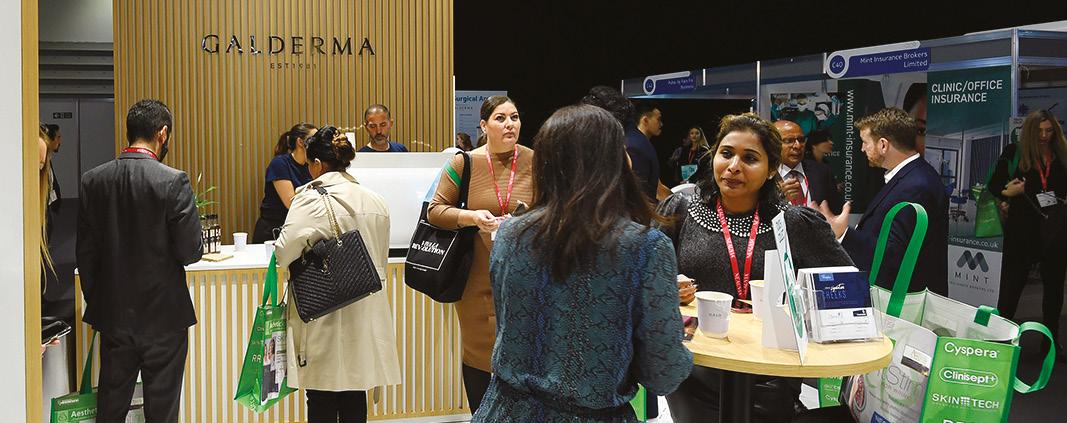
Once a year the medical aesthetics industry unites for the most-anticipated event of the calendar: CCR. It provides the central hub for practitioners, brands, suppliers and associations of both the surgical and non-surgical disciplines to come together for two days of learning, discovery, networking and celebration. This year, CCR is back on the 13 & 14 October at ExCeL and it’s even bigger and better than before, enhancing your favourite features and bringing new and exciting elements to maximise your experience.

CCR 2022 key features
• NEW Aesthetic Dentistry agenda with Professor Bob Khanna
• NEW Start-ups Trail showcasing innovation and new businesses in medical aesthetics
• NEW Aesthetics Wellness stream curated by Dr Mayoni Gooneratne


• NEW The Diwali PHI-lanthropy Ball supported by Prollenium
• Anatomy & LIVE Injection Masterclass with Dr Tapan Patel

• Aesthetics Press Conference unveiling the CCR Trends Report
• ISAPS & ACE Group World host two dedicated streams of content
Leading brands and state of the art suppliers
Returning as the Headline Sponsor is leading pharmaceutical company Galderma, set to deliver brand new content exclusive to CCR. With them they bring world-renowned KOLs to their Symposium sessions and essential opportunities to catch up with friends and colleagues at The Networking Bar, sponsored by Galderma.
Event Preview CCR @aestheticsgroup @aestheticsjournaluk Aesthetics aestheticsjournal.com Aesthetics | July 2022 20
Headline sponsor
More than 100 exhibitors are already confirmed with more on the way including registration sponsor AestheticSource, Allergan, Cutera, Healthxchange, VIVACY, VIP experience sponsor HydraFacial, SkinCeuticals, and Solta Medical. Our brand-new Start-ups Trail will provide an incredible opportunity to discover innovative brands, providers and suppliers, as CCR showcases new solutions from the very best start-ups in the industry.


A wealth of CPD-accredited content






Renowned for its world-class agenda, CCR will once again host two days of back-to-back sessions covering the length and breadth of aesthetic topics, with up to 16 CPD points available. With five theatres which include the Non-Surgical Arena, In Practice Theatre, Symposiums and the Live Demo Stage, medical content is available for practitioners as well as business development tips for clinics. In a unique annual event, these organisations and others come together to share information with delegates and inform and address thousands of visitors at ExCeL, London.
The International Society of Aesthetic Plastic Surgery (ISAPS) will deliver an agenda with world-leading surgeons dedicated to pioneering surgical advancements. ACE Group World will host their conference discussing the latest industry developments and the prevention and management of complications. The highly attended In Practice theatre returns featuring the latest business insights, tips and advice from experts across the field of aesthetic medicine. Attendees can also expect sessions from top brands including Allergan, Croma-Pharma, Galderma, Prollenium and SkinCeuticals plus many more. Due to the nature of the medical content, some sessions are restricted to registered doctors, nurses and dentists with a valid GMC, NMC or GDC number only. More information will be available when the full agenda is released.
Industry trends and press coverage
After the success of our inaugural Trends Report last year, we welcome back our Press Ambassador Francesca Ogiermann-White to compare our CCR Aesthetics Press Conference. As the public’s
interest in aesthetics continues to rise, and with increased interest regarding regulation, it is vital that we as an industry are consumer facing and press ready.

Receiving coverage in the Tatler Surgery Guide this year was a pivotal moment for Aesthetics & CCR, and with good press relationships built from CCR, ACE & Beauty Uncovered LIVE, the Press Conference is a key event to identify trends and maximise potential coverage. Press can learn about what’s new and hear about the procedures and research papers that are making waves. With a Q&A session to follow involving some of the industry’s most recognisable names, CCR is set to provide a completely unique and interactive forum to update and inform key, influential journalists.
The CCR after party you’ve all been waiting for…
CCR, Prollenium and Dr Tapan Patel are delighted to announce The Diwali PHI-lanthropy Ball. Held on the evening of day one of CCR, it will be an exotic evening of food, drinks and of course celebration and dancing. Hosted in support of the charity, The Childhood Trust, it will be an incredible opportunity for the aesthetics community to come together, with all proceeds going directly to the charity. Limited tickets are available to purchase via CCR registration so please purchase soon to avoid disappointment. The venue will be disclosed shortly, but will be nearby to the ExCeL.
Courtney LeBorgne, event director for Aesthetics & CCR: “2022 is going to be a great year for CCR. New features and content will bring a fresh and exciting feel to the conference. We have secured the most influential practitioners from around the globe to contribute to the programme and take the stages for live demonstrations, cutting-edge content and top brand takeovers. Plus, for the first time ever, we are hosting a CCR after party, The Diwali PHI-lanthropy Ball with Prollenium, and I can’t wait to celebrate in the name of a good cause with our incredible industry.”
For your complimentary visitor’s pass, please log on to the CCR website www.CCRLondon.com.
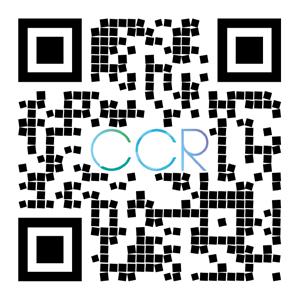


Advertorial -----------
SCAN THE QR CODE TO REGISTER FREE Event Preview CCR @aestheticsgroup @aestheticsjournaluk Aesthetics aestheticsjournal.com Aesthetics | July 2022 21
Headline sponsor
(Botulinum Toxin Type A) Observational Masterclass.
FEEL GOOD LOOK GOOD

Bocouture® (botulinum toxin type A (150 kD), free from complexing proteins) 50/100 unit vials*. Prescribing information: M-BOC-UK-0432. Please refer to the Summary of Product Characteristics (SmPC) before prescribing. Presentation: 50/100 units of Clostridium Botulinum Neurotoxin type A, free from complexing proteins as a powder for solution for injection. Indications: Temporary improvement in the appearance of moderate to severe upper facial lines (glabellar frown lines, crow’s feet lines, horizontal forehead lines) in adults ≥18 and <65 years when the severity of these lines has an important psychological impact for the patient. Dosage and administration: For intramuscular use only. Unit doses recommended for Bocouture are not interchangeable with those for other preparations of botulinum toxin. BOCOUTURE should only be administered by an appropriately qualified healthcare practitioner with expertise in the treatment of the relevant indication and the use of the required equipment, in accordance with national guidelines . The intervals between treatments should not be shorter than 3 months. Reconstitute with 0.9% sodium chloride. Glabellar Frown Lines: Total recommended standard dose is 20 units. 4 units into 5 injection sites (2 injections in each corrugator muscle and 1 injection in the procerus muscle). May be increased to up to 30 units. Injections near the levator palpebrae superioris and into the cranial portion of the orbicularis oculi should be avoided. Crow’s Feet lines: Total recommended standard dosing is 12 units per side (overall total dose: 24 units); 4 units injected bilaterally into each of the 3 injection sites. Injections too close to the Zygomaticus major muscle should be avoided to prevent lip ptosis. Horizontal Forehead Lines: The recommended total dose range is 10 to 20 units; a total injection volume of 10 units to 20 units is injected into the frontalis muscle in five horizontally aligned injection sites at least 2 cm above the orbital rim. An injection volume of 2 units, 3 units or 4 units is applied per injection point, respectively. Contraindications: Hypersensitivity to the active substance or to any of the excipients. Generalised disorders of muscle activity (e.g. myasthenia gravis, LambertEaton syndrome). Infection or inflammation at the proposed injection site. Special warnings and precautions: It should be taken into consideration that horizontal forehead lines may not only be dynamic, but may also result from the loss of dermal elasticity (e.g. associated with ageing or photo damage). In this case, patients may not respond to botulinum toxin products. Should not be injected into a blood vessel. Not recommended for patients with a history of dysphagia and aspiration. Caution in patients with botulinum toxin hypersensitivity, amyotrophic lateral sclerosis, peripheral neuromuscular dysfunction, or in targeted muscles displaying pronounced weakness or atrophy. Bocouture should be used with caution in patients receiving therapy that could have an anticoagulant effect, or if bleeding disorders of any type occur. Too frequent or too high dosing of botulinum toxin type A may increase the risk of antibodies forming. Should not be used during pregnancy unless clearly necessary. Should not be used during breastfeeding. Interactions: Concomitant use with aminoglycosides or spectinomycin requires special care. Peripheral muscle relaxants should be used with caution. 4-aminoquinolines may reduce the effect. Undesirable effects: Usually, undesirable effects are observed within the first week after treatment and are temporary in nature. Undesirable effects independent of indication include; application related undesirable effects (localised pain, inflammation, swelling), class related undesirable effects (localised muscle weakness, blepharoptosis), and toxin spread (very rare - exaggerated muscle weakness, dysphagia, aspiration pneumonia). Hypersensitivity reactions have been reported with botulinum toxin products. Glabellar Frown Lines: Common: headache, muscle disorders (elevation of eyebrow). Crow’s Feet Lines: Common: eyelid oedema, dry eye, injection site haematoma. Upper Facial Lines: Very common: headache. Common: hypoaesthesia, injection site haematoma, application site pain, application site erythema, discomfort (heavy feeling of frontal area), eyelid ptosis, dry eye, facial asymmetry, nausea. For a full list of adverse reactions, please consult the SmPC. Overdose: May result in pronounced neuromuscular paralysis distant from the injection site. Symptoms are not immediately apparent post-injection. Legal Category: POM. List Price: 50 U/vial £72.00, 50 U twin pack £144.00, 100 U/vial £229.90, 100 U twin pack £459.80. Product Licence Number: PL 29978/0002, PL 29978/0005 Marketing Authorisation Holder: Merz Pharmaceuticals GmbH, Eckenheimer Landstraße 100,60318 Frankfurt/Main, Germany. Date of Preparation:August 2021. Further information available from:. Ground Floor Suite B, Breakspear Park, Breakspear Way, Hemel Hempstead, Hertfordshire, HP2 4TZ Tel: +44 (0) 333 200 4143

Adverse events should be reported. Reporting forms and information can be found at www.mhra.gov.uk/yellowcard for the UK. Adverse events should also be reported to Merz Pharma UK Ltd at the address above or by email to UKdrugsafety@merz.com or on +44 (0) 333 200 4143.
*Botulinumtoxin type A, purified from cultures of Clostridium Botulinum (Hall strain)2 M-BOC-UK-0468 Date of Preparation: June 2022
For
BOCOUTURE®
(Botulinum
Free from complexing proteins
toxin type A)
information about dates and locations and to reserve your place, scan the QR code. Join us at a half-day course, designed to kickstart your journey with BOCOUTURE®. Our experienced aesthetic practitioners will guide you through the scientific and clinical aspects BOCOUTURE®, and demonstrate a treatment in all three upper facial line indications.
Treating the Lower Face with Devices
A defined or ‘strong’ jawline is often cited as a desirable feature in a potential mate and, according to a 2021 study involving 50 men and 50 women, the chin is the facial feature that contributes most to our perceived view of facial attractiveness 1
Yet, a sagging lower face is an inevitable part of ageing. Everyone will experience a decline in collagen and elastin as they get older, while environmental and genetic factors can worsen jowling.
So why do the jawline and chin change as we get older? And what can you, as a medical aesthetic practitioner, do about it? Three practitioners share their advice.

Concerns and causes
Aesthetic nurse prescriber Lee Garrett, who works as the clinical lead at the Cosmetic Skin Clinic in London and Buckinghamshire, finds that many patients concerned with their jawline will comment on how much it has changed since they were younger. “They will share photographs in which their jawlines are much more defined and sharp,” he says, explaining that most want to regain that youthful contour.
Dr Dil Kassam, aesthetic practitioner and founder of The MediShed by Dr Dil in Wandsworth, adds that the 40+ demographic is most affected, with approximately 70% of her patients in that age group seeking lower face treatment. She notes that the increased use of video calling since the pandemic has really contributed to patients’ awareness of their sagging jawline.
So what causes this concern? Garrett explains that bone reabsorption, which occurs as we age, is the main factor, which leads to skeletal changes of the jaw itself. A decline in collagen and elastin also means that skin loses its firmness and tightness, so gravity then takes hold and causes it to descend on either side of the chin and along the jawline.2
Founder and medical director of Berkshire Aesthetics, Dr Selena Langdon, also treats patients with excess fat in the area. “We see patients across the age ranges; those who have a genetic predisposition to having a double chin, as well as those affected by hormonal changes,” she explains, adding that a double chin may not mean a patient is overweight.

The practitioners agree that assessing the
patient carefully and, thus, selecting the most appropriate treatment for them as an individual, is imperative to successful results. Injectable procedures can help build structure to an extent, but all practitioners interviewed recommend combining them with an energy-based treatment in order to boost collagen and re-contour the area for ultimate patient satisfaction. Here we discuss three types of technology that have proven results and learn how they are best used in practice.
Ultrasound
Ultherapy – an ultrasound device – is Garrett’s go-to energy treatment for jowling. But before he gets started, examining the patient holistically is key. “I look at their diet, hormonal status, drug and alcohol use, and general lifestyle,” Garrett explains, ensuring he advises patients on healthy changes they can make prior to treatment. Garrett will then review how the patient sees themself in a mirror. “I get them to look down into the mirror so I can see what they see, to fully understand their concerns,” he says, which then helps him put together a multimodality treatment plan, involving Ultherapy, usually followed by treatment with the Belotero range of hyaluronic acid fillers.
The Ultherapy device uses advanced microfocused ultrasound energy to stimulate collagen production and tighten skin.
According to research, 42% more collagen was produced in four weeks, while skin elasticity was significantly increased after 12 weeks. Ultherapy is FDA-approved and is suitable for all skin types, including darker skin tones.3
Garrett explains, however, that Ultherapy is unlikely to be effective in a patient who has a BMI of 30+ as it may not be able to reach the appropriate layer under the skin. Equally, he says that patients who are very slim without much tissue at all may not see a positive result.
When a patient is deemed acceptable for the procedure, Garrett will mark up the treatment area. “We avoid the nerves around the marionette lines as treating them can cause paralysis of the face,” he warns.
Using a gel-based applicator, Garrett will then perform the treatment. “In terms of pain, I would say it’s around five out of 10, but then some patients say they feel little, if anything at all,” he notes. It takes about an hour to treat the lower face and neck, and only one procedure is needed. “We’ll aim to treat again in around 18 months’ time,” says Garrett.
@aestheticsgroup @aestheticsjournaluk Aesthetics aestheticsjournal.com Reproduced from Aesthetics | Volume 9/Issue 8 - July 2022
Practitioners outline how ultrasound, radiofrequency and cryolipolysis can contour the chin and jawline





In terms of risk, Garrett explains that, as mentioned above, temporary paralysis can occur if you hit a nerve. He notes that patients could also experience pain if the treating practitioner hits a bone, which is why the visualisation that the device allows is so key to a comfortable treatment. “You can see the structures under the skin, which also maximises on patients’ results, says Garrett. Bruising is a common side effect of Ultherapy, but when bruises appear Garrett says they’re very faint and can be hidden with makeup straightaway, as the device does not break the skin.
For practitioners considering investing in a microfocused ultrasound device, Garrett reminds you that it shouldn’t be regarded as a standalone treatment. “For some patient indications, the results may not be the optimum outcome if you only use one treatment approach,” he says, emphasising the importance of addressing bone reabsorption, volume loss and collagen depletion through multiple treatment options.
Radiofrequency
Dr Kassam’s product of choice is Evoke. The bipolar radiofrequency device penetrates the subdermal layer and heats the fibro-septal network in order to remodel the dermis and subdermal tissue. It has two applicators – one for the face and one for the neck – which can both be used hands-free.4
“I am a big believer in the power of radiofrequency alone – especially if it is bipolar,” says Dr Kassam, who explains that Evoke can reach a depth of 5mm and offers really effective results. She adds that it can be used on any skin type and works well to improve skin laxity.
Again, patient selection is key, as some would benefit from other methods too. Evoke can be customised to a patient’s individual
requirements, with adjustable patterns of treatment, depth of penetration and length of time it is administered for. Dr Kassam will generally offer 30-minute treatments to each area of concern, which are repeated three times, two weeks apart. She will review results three months later and finds that they can last six months to a year, with only maintenance procedures required after that. Dr Kassam will advise patients not to do anything strenuous on the day of treatment; they can go back to their normal routines almost immediately, although they may experience a little redness from the pressure of the device.
As with any radiofrequency procedure, burns can occur so careful monitoring of the patient’s skin and device temperature is essential. “With Evoke there’s a stop button that kicks in immediately, offering plenty of reassurance if it does get too hot,” says Dr Kassam.
For the most effective results, Dr Kassam says skin optimisation is key. “Ideally, maintaining skin health is key to maximising results,” she says, advising that patients should be following an appropriate skincare routine alongside any aesthetic treatment you offer.

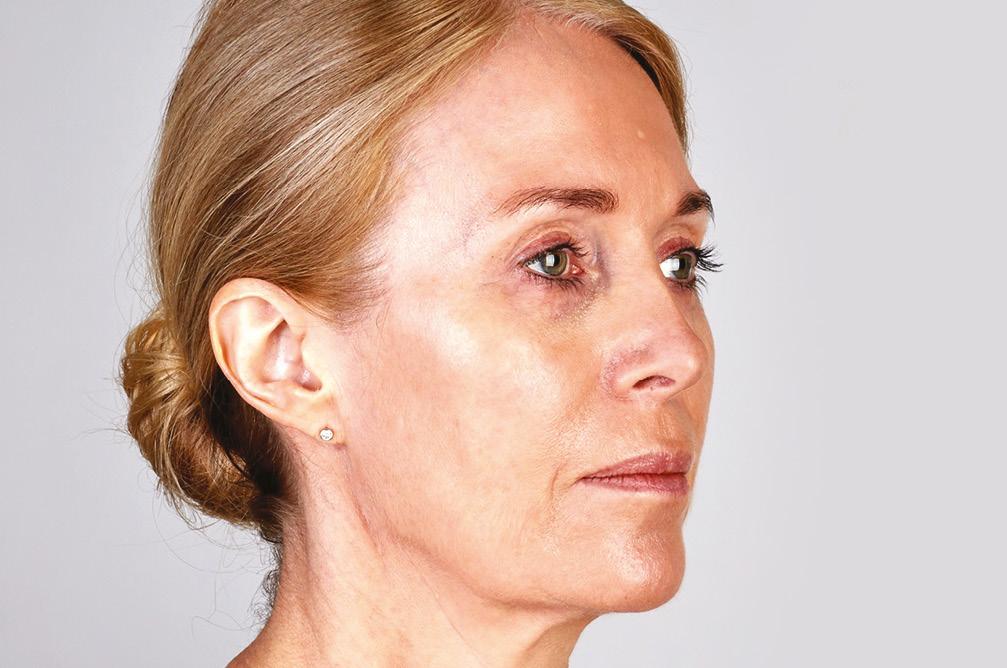
Cryolipolysis
Dr Langdon is an avid user of CoolSculpting. She uses the new Elite device, which launched last year, and has dual applicators available in seven shapes and sizes.5 Having undergone a complete redesign, Dr Langdon explains that the Elite device is now slicker, delivers results faster and has improved contours for a more comfortable treatment. The device works by delivering precise controlled cooling that targets fat cells underneath the skin. The cells are frozen, destroyed and disposed of naturally by the body. Studies have indicated that the number of fat cells can be reduced by up to 27% after six months.6
Dr Langdon says that the non-invasive nature of the treatment appeals to patients, although there is still an assumption that it will correct all of their neck and chin concerns, which isn’t always true. “You’ve got to be the right candidate for treatment,” she says, explaining, “Skin laxity can cause the appearance of a double chin, so we need to educate them that this isn’t caused by excess fat and address each issue accordingly. While CoolSculpting does offer a degree of skin tightening alongside fat removal, it cannot be
@aestheticsgroup @aestheticsjournaluk Aesthetics aestheticsjournal.com Reproduced from Aesthetics | Volume 9/Issue 8 - July 2022
Figure 1: Before and 12 weeks after one Ultherapy treatment. Images courtesy of The Cosmetic Skin Clinic.
“Patients will share photographs in which their jawlines are much more defined and sharp”
Before After
Lee Garrett
A new approach to reduce facial lines and wrinkles, lift the eyebrow, and lift lax submental and neck tissue with Proprietary SUPERB™ Technology - enabling treatment at the optimal depth in the mid-derm, ensuring no damage to the epidermis, fat, and bone tissue.
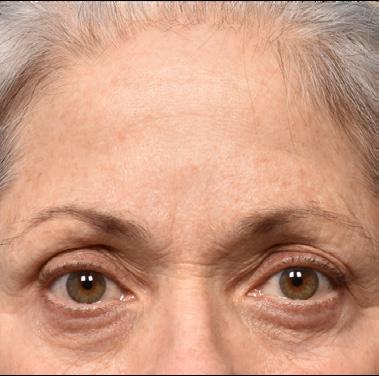



What Sets Sofwave™ Apart?

Simple and delegate-able protocol Patented integrated cooling system Safe for all skin types Short treatment (30-45min)

It’s great to be one of the first in the UK to offer SOFWAVE™. We are very impressed with the results we’re getting. The treatment itself is quick and very tolerable and our patients are extremely satisfied with the treatment outcome. The results speak for themselves.

WINNER OF
SUPERB! ™
Sofwave™ is the Next Generation, FDA Cleared, NonInvasive Fine Lines and Wrinkle Reduction Treatment for the
Neck. BASELINE 4-MONTH FOLLOW UP BASELINE 3-MONTH FOLLOW UP
photos Courtesy of Gilli Munavalli, MD
The future is
with
Face and
All
MK00070
DR. MUNIR SOMJI
Before After
used solely for skin retraction.”
In Dr Langdon’s clinic, she has a CoolSculpting suite where patients can relax and watch Netflix while they undergo treatment. “We advise patients to come in makeup free and to wear comfortable clothes, although patients are offered a gown and slippers to ensure anyone coming during their lunch break or planning to head out afterwards can really come dressed however they want,” she explains, adding that she will also warn them that it can be a slightly uncomfortable procedure. Once the treatment area is marked out, Dr Langdon will begin the 45-minute procedure. Upon completion, she will massage the treated area for two minutes by hand to help break down fat. “Afterwards, patients can look a little bit red and swollen, but this will subside not long after. We will then share advice on the importance of massage and hydration following treatment to enhance results,” she says. In addition, Dr Langdon will advise patients to avoid anti-inflammatory supplements, foods and medications for six weeks following treatment, as they can suppress the body’s natural inflammatory process that is working to remove the damaged fat cells from treated areas.7
Patients usually have two rounds of treatment, six to eight weeks apart, before being reviewed 12 weeks later. “Having selected the right candidate, we can get some really lovely results,” explains Dr Langdon, highlighting that those with a healthier lifestyle generally see better results. “Even as early as six weeks we are seeing lots of changes with the new Elite system, which gives patients confidence in you and the technology,” she says.
In terms of side effects, Dr Langdon explains that the treated area may be a bit tender and have a little bruising, but nothing too excessive. “We usually say patients can go back to their normal activities straightaway; they don’t need to take any time off work and they can wear
makeup,” she says. Patients can return to exercise the next day if they feel able to do so. As part of her role as a CoolSculpting Advisory Board member and Allergan CoolSculpting Faculty & UK Complications Expert, Dr Langdon oversees any complications that occur in CoolSculpting clinics across the UK. She highlights that issues in the chin area are rare, but freezeburn injuries can occur. “This is often due to operator error or incorrect patient selection, such as when a patient doesn’t have enough fat to treat,” she explains. Post-inflammatory hyperpigmentation is another concern, so Dr Langdon always advises that skin preparation is key, while noting that if any hyperpigmentation occurs it can be treated with topical creams or Q-switched laser. As with the other devices mentioned, nerves can be damaged so, again, appropriate placement and assessment is essential. And if you follow the news, you will be aware that CoolSculpting has received negative press recently as a result of former supermodel Linda Evangelista sharing her story of paradoxical adipose hyperplasia. The condition leaves the treated area feeling thicker and firmer, while hard lumps may develop and it may gradually grow in size.8 Dr Langdon notes, “There are other technologies and devices that can cause paradoxical adipose hyperplasia as have been reported in the literature, so it’s not just CoolSculpting. Allergan (Abbvie) are very supportive if a case is reported, and it is definitely something we are trying to understand more about. Like so many other complications we see, I do wonder if poor patient selection has an influence and the very action of trauma itself could be a trigger.” Generally, Dr Langdon has found that complications are usually a result of the user. “For a very long time, I think practitioners have been under the impression that
CoolSculpting is easy to perform – you just stick the applicator on and get lovely results. However, poor results or complications will occur if the practitioner doesn’t know how to select patients appropriately or how to utilise the device safely and effectively,” she warns.
Safety first
This sentiment is echoed by all three practitioners, who cannot emphasise enough that appropriate patient selection is key. “If you don’t have an appropriate treatment for them, then you shouldn’t be treating,” says Dr Langdon, highlighting that, “You’ll end up leading patients down a rabbit hole and they’ll be very disappointed at the end of it.” Dr Kassam adds that bad treatment will not only affect the patient, but your reputation too, emphasising, “Not wasting a patient’s time and money is extremely important.”
As discussed, the practitioners also stress the value of combination treatments, “A multi-modality approach will offer the most effective results,” concludes Garrett.
REFERENCES
1. Ren, Hongyu et al. “Correlation between facial attractiveness and facial components assessed by laypersons and orthodontists.” Journal of dental sciences vol. 16,1 (2021): 431-436. doi:10.1016/j. jds.2020.07.012 <https://www.ncbi.nlm.nih.gov/pmc/articles/ PMC7770325/>
2. Tim Jewell, medically reviewed by Catherine Hannan MD, Jowls: Why It Happens and What You Can Do (US: Healthline, 2017) <https://www.healthline.com/health/beauty-skin-care/ jowls#causes>
3. Merz Aesthetics, Who says Ultherapy Boosts your Collagen? Oh, Right. Science., (UK: Merz Aesthetics, 2022) <https://ultherapy. co.uk/what-to-expect-from-the-treatment/>

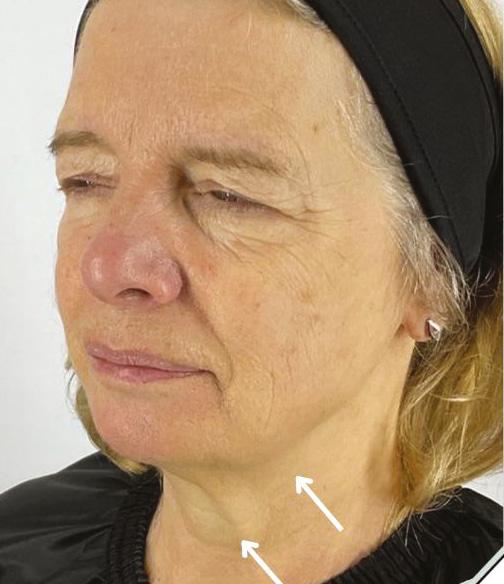

4. Inmode, What is Evoke?, (US: Inmode, 2022) <https://inmodemd. com/workstation/evoke/>
5. Allergan Aesthetics, CoolSculpting Elite (UK: Allergan Aesthetics, 2022) <https://uk.coolsculpting.com/hcp>

6. Allergan Aesthetics, How It Works (UK: Allergan Aesthetics, 2022) <https://uk.coolsculpting.com/how-it-works>
7. Dr Suzanne Yee, How to Improve CoolSculpting Results (US, Dr Suzanne Yee Cosmetic & Laser Surgery Center, 2021) <https:// www.drsuzanneyee.com/blog/2021/08/19/how-to-improvecoolsculpting-results-210069#:~:text=Avoid%20NSAIDs,fat%20 cells%20from%20treated%20areas.>
8. Shaziya Allarakha MD, What is Paradoxical Adipose Hyperplasia? (US: MedicineNet, 2021) <https://www.medicinenet.com/what_is_ paradoxical_adipose_hyperplasia/article.htm>
@aestheticsgroup @aestheticsjournaluk Aesthetics aestheticsjournal.com Reproduced from Aesthetics | Volume 9/Issue 8 - July 2022
Figure 3: Before and 12 weeks after treatment with CoolSculpting Elite. Patient had two cycles with the C80 and one session of treatment. Images courtesy of Dr Langdon at Berkshire Aesthetics.
Figure 2: Before and immediately after three rounds of bipolar radiofrequency treatment, spaced two weeks apart, with Evoke. Images courtesy of Dr Dil Kassam.
Before After








 Before
Before
Advertorial Allergan Aesthetics


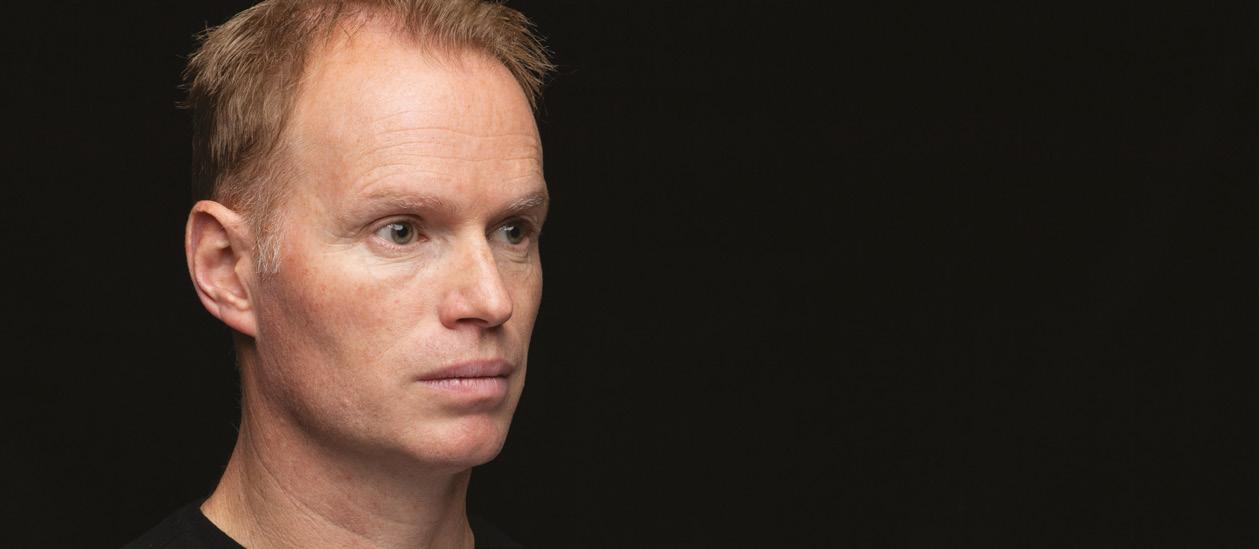
The Collagen Conversation
The importance of healthy skin to the ageing process is now well understood.1 But, we are realising that using one tool to target all signs of ageing can produce unnatural results, so practitioners and patients alike have landed on collagen as the key. We always talk about the importance of combination treatments to get best patient results, but HArmonyCa™ combines two technologies in a single hybrid product.2 HArmonyCa™ addresses an unmet need for patients and I’ve found it has very high patient (and injector) satisfaction.3
What is HArmonyCa?
HArmonyCa™ breaches a new frontier in aesthetic medicine. It’s a new generation of hybrid injectable – combining two technologies in a single syringe.2 It combines cross-linked hyaluronic acid (HA) with calcium hydroxyapatite (CaHA) microspheres2 to create a gel with a moderate lifting capacity that gradually improves overlying skin quality over time.3-7 HArmonyCa Lidocaine is a dermal filler intended for facial soft tissue augmentation and should be injected into the deep dermal and sub-dermal layers.2 For use in patients over the age of 18.
How can this benefit patients?
Patients notice an immediate result in the
mirror7-10 – they have the ‘wow’ moment – and this lift is sustained over time.3,5,6,7,11 This is because the cross-linked HA isn’t purely a carrier gel, but gives the sustained improvement that a pure HA filler does.12-18 The difference with HArmonyCa™ is that patients continue to have ongoing improvements over the coming three to six months – I have observed that the overlying skin improves in texture and firmness, fine lines and wrinkles soften and dynamic lines reduce. HArmonyCa™ gives the benefits of two wellestablished technologies in a single syringe.2,4,7
Who is HArmonyCa™ suitable for?
I actually think the better question is ‘Who isn’t HArmonyCa™ suitable for?’ I genuinely feel the majority of patients in our aesthetic practices will benefit. Although, unlike products like VOLITE®19 this isn’t a product I’d use for ‘pre-juvenation’. A good candidate will have some mild to moderate volume loss as well as skin laxity or lines and wrinkles at rest or on animation.2 We often see patients in their 30s with skin laxity and sun damage who would be good candidates, and we see patients in their 60s who have always looked after their skin and whose skin aged very well. HArmonyCa™ is a suitable choice for both male and female patients. As with all products, it is important to consult the product directions for use first to read the full contraindications, warnings and precautions to check if your patient is suitable.
What results can you expect?
I’ve used HArmonyCa™ on patients between the ages of 35 and 65 over the past 12 months, and have been delighted to see the differences. Even as early as two weeks they can feel the difference in their skin quality – it’s firmer and smoother.6,7 Common postoperative adverse events include erythema, oedema (swelling), pain, tenderness, and itching. Treatment site reactions typically resolve within 24-48 hours and swelling within a week.6
What’s your top tips for treatment success?
1. Selection: The right patient has mild to moderate volume loss with overlying skin laxity and fine lines and wrinkles.2
2. Combine with HA fillers: remember HArmonyCa™ provides a different kind of tissue lift compared to a more volumising filler like VOLUMA®20-23 or VOLUX™.18,21,24 Imagine it as more of an intermediate lift, like VOLIFT®.21,23,25 Use the two in combination in a treatment plan to help a patient achieve more volumisation.
3. Inject subcutaneously: HArmonyCa™ needs to be injected in the subcutaneous layer, as close to the underside of the dermis as possible.2 The fibroblasts are within the dermis,26 and so we need the CaHA to be able to reach the fibroblasts.7
How can practitioners find out more about HArmonyCa™?
Allergan Aesthetics is running regular training days for healthcare professionals, and it’s a great opportunity to come and get hands on with HArmonyCa™. To find out the next training days, contact Allergan Medical Institute® Training at amitraining@allerganeventsteam. com. Please note, the Allergan Medical Institute® is promotional – Allergan products will be discussed.
Adverse events should be reported. Reporting forms and information can be found at: UK adverse events reporting https:// yellowcard.mhra.gov.uk/ Adverse events should also be reported to Allergan Ltd. UK_medinfo@allergan.com or 01628 494026 Irish adverse events reporting https://www.hpra.ie Adverse events should also be reported to Allergan Ltd. UK_medinfo@allergan. com or 01628 494026.
Aesthetics | July 2022 29
Why is the ‘collagen conversation’ trending right now?
47-year-old patient before and 3 months after 6ml of HArmonyCa™
©AbbVie 2022. All rights reserved. Material produced and funded by Allergan Aesthetics, an AbbVie company. www.
Dr Sophie Shotter answers our burning questions about the hybrid HArmonyCa™ collagen stimulating injectable by Allergan Aesthetics
Before After
allerganaesthetics.co.uk
This
article is
produced and funded by Allergan Aesthetics and is intended for healthcare professionals.
REFERENCES: 1. Coleman SR and Grover R. Aesthet Surg J. 2006;26(1S):S4-9. 2. Allergan Aesthetics. HArmonyCa™ Lidocaine IFU. M032 V01. 2021. 3. Allergan Aesthetics. Data on File. INT-HAR-2150007. HArmonyCa™ Lidocaine. Clinical study report. Apr 2021. 4. Gonzalez N and Goldberg DJ. Dermatol Surg. 2019;45(4):547–51. 5. Allergan Aesthetics. Data on File. INT-HAR-2150036. HArmonyCa™ Lidocaine. Lift capacity. Jul 2021. 6. Allergan Aesthetics. Data on File. INT-HAR-2150040. HArmonyCa™ Lidocaine. Collagen stimulation. Jul 2021. 7. Gonzaga da Cunha M et al. Surg Cosmet Dermatol. 2020;12(2):109–17.] [REF Hee C et al. Dermatol Surg. 2015;41(Suppl 1):S373–81. 8. Niforos F et al. Dermatol Surg. 2017;43(10):127-1271-1280. 9. Oglivie P et al. Dermatol Surg. 2020;46(3):376-385. 10. Phillipp-Dormston WG et al. J Cosmet Laser Ther. 2014;16(4):171-179. 11. Hee C et al. Dermatol Surg. 2015;41(Suppl 1):S373–81. 12. Eccleston D and Murphy DK. Clin Cosmet Investig Dermatol. 2012;5:167–72 13. Callan P et al. Clin Cosmet Investig Dermatol. 2013;6:81-89. 14. Niforos F et al. Clin Cosmet Investig Dermatol. 2019;12:791-98. 15. Jones D and Murphy DK. Dermatol Surg. 2013;39:1602-12. 16. Niforos F et al. Dermatol Surg. 2017;43:1271-80.37. 17. Dayan S et al. Aesthet Surg J. 2020;40:767-77.39. 18. Ogilvie P et al. Aesthet Surg J. 2020;40:NP499-510. 19. Juvéderm® VOLITE DFU. 73655JR10. Revision 2019-09-09. 20. Juvéderm® VOLUMA with lidocaine DFU. 73650JR10. Revision 2019-09-09. 21. Kapoor KM et al. Clin Cosmet Investig Dermatol. 2021;14:110518. 22. Dhillon B and Patel T. J Clin Aesthet Dermatol. 2020;13:33–40. 23. Goodman GJ et al. Plast Reconstr Surg. 2015;136:S139–48 24. Juvéderm® VOLUX DFU. 73651JR10. Revision 2019-09-09. 25. Juvéderm® VOLIFT with lidocaine DFU. 73652JR10. Revision 2019-09-09. 26. Gray’s Anatomy. The Anatomical Basis of Clinical Practice. Chapter 7. Skin and its appendages P. 141-161e1
Disclaimer: this article is based on Dr Shotter’s personal experience and ultimate decisions regarding patient care lies with the treating HCP and the patient.
UK-HAR-220187 | Date of preparation June 2022
HArmonyCa™ is only licensed for patients over the age of 18.
As a new product, model has not been treated with HArmonyCa™
Welcome to the future of Hybrid Injectables
HArmonyCa™ is a Hybrid Injectable that combines hyaluronic acid (HA) with calcium hydroxyapatite (CaHA), which may give your patients the benefits of an immediate lift effect from HA and sustained collagen stimulation associated with CaHA, for a new way to facial harmony.1–3,*,†

Produced and funded by Allergan Aesthetics, an AbbVie company.
Please see HArmonyCa™ IFU for the full list of contraindications, warnings and precautions.1
* Results from a pre-clinical animal study of HArmonyCa™ with results demonstrated over 12 weeks.2
† Results from a pre-clinical animal study of HArmonyCa™ with results demonstrated over 8 weeks.3
HArmonyCa™ Lidocaine is referred to as HArmonyCa™.
HArmonyCa™ is a dermal filler intended for facial soft tissue augmentation and should be injected into the deep dermal and sub-dermal layers.1
For use in patients ≥ 18 years old only.
©AbbVie 2022. All rights reserved.
References
1. Allergan Aesthetics. HArmonyCa™ Lidocaine IFU. M032 V01. 2021.
2. Allergan Aesthetics. Data on File. INT-HAR-2150036. HArmonyCa™ Lidocaine. Lift capacity. Jul 2021.
Adverse events should be reported.
Reporting forms and information can be found at:
UK adverse events reporting https://yellowcard.mhra.gov.uk/
Adverse events should also be reported to Allergan Ltd.
UK_medinfo@allergan.com or 01628 494026
Irish adverse events reporting https://www.hpra.ie
Adverse events should also be reported to Allergan Ltd. UK_medinfo@allergan.com or 01628 494026
3. Allergan Aesthetics. Data on File. INT-HAR-2150040. HArmonyCa™ Lidocaine. Collagen stimulation. Jul 2021.
FOR HEALTHCARE PROFESSIONALS ONLY
UK-HAR-220190 June 2022
Exploring
Following the early studies on the use of tretinoin for photoaged skin,1 there has been a massive increase in the use of topical retinoids.2 In this article, the pathways involved in retinoid metabolism will be discussed and the possible use of a new compound with a different pharmacological profile to native retinoid, will be considered.3
Overview of retinoid metabolism
Essentially, retinoids are related to vitamin A and its related metabolites that activate retinoic acid receptors (RAR) which result in gene activation and the subsequent biological responses.4 The main retinoids involved in the metabolic pathway are: retinol, retinal (retinaldehyde), retinoic acid (tretinoin), and the esters – retinyl acetate and retinyl palmitate (Figure 1).5 These are the main retinoids that have created interest in aesthetics and will be considered here. The metabolism of these compounds in the skin is significant to understanding the relationship of these retinoids and the topical effects observed in aesthetic use (Figure 2).5 The metabolic pathway in the skin is similar to the pathway of retinoid metabolism in the gastrointestinal system;6 the hydrolysis of retinyl esters or oxidation of carotenoids occurs in the small intestines to produce retinol,7 this is oxidized into retinoic acid, which is the active component in intracellular signalling. Retinol may also be converted by a process of esterification to produce retinyl esters, which are more easily mobilised throughout the body. Retinol and its esters are predominantly found in blood and tissues as they are mobilised for use in the body or transported to the liver for storage.8
in Skincare
working at pharmaceutical company Hoffmann La-Roche, provided a simpler pathway to production that was quickly adopted by them (Figure 3); other companies also developed their specific pathways for retinol production.9 Initially the starting product for the synthesis of retinol was beta-ionone, which was obtained from lemongrass oil. As the cost and decreased availability of this source occurred, further research resulted in the production of a totally synthetic manufacturing pathway – the basis of all retinol production to date. The main problem with the synthesis is that it is expensive to produce and by the mid-1990s, 98% of the market was controlled by three large multinational companies. With the increase in the price of crude oil and the source of acetylene and acetone, this will have an effect on the price of retinol;9 therefore, in future, other sources of retinoids will need to be considered for the mass market.
Chemical synthesis
The majority of retinol used in aesthetics for tropical application comes from the chemical synthesis. This is a well-established pathway that has implications on the availability and costs associated with retinol in the marketplace. The chemical synthesis of retinol has a long history dating back to the 1930s, following the Nobel prize-winning work of Swiss organic chemist Professor Paul Karrer, who discovered the structure of retinol and the research during the 1940s, leading to industrial production.9 During this time, the work of another Swiss chemist, Otto Isler
@aestheticsgroup @aestheticsjournaluk Aesthetics aestheticsjournal.com Reproduced from Aesthetics | Volume 9/Issue 8 - July 2022
Retinoids
Mr Dalvi Humzah and Dr Steve Tonge discuss the current clinical pathways of retinoids OH H O OH O Retinol Retinal (retinaldehyde) Retinoic acid (tretinoin) • Esters • Retinyl acetate • Retinyl palmitate Figure 1: Important retinoids in the metabolic pathway Figure 2: Antiageing activity of topical retinoids. Modified from Saurat et al. 20065 The antiageing effects of retinoids • Epidermal cell renewal • Epidermal differentiation modulation • Extracellular matrix production • Inhibition of UV-induced extracellular matrix • Degradation of cells • Cytokine modulation – angiogenesis • Melanocyte function modulation • Oxidant/antioxidant Figure 3: Simplified synthetic pathway of retinol production (isler synthesis) Vitamin A Alcohol Saponification Iodine Light petroleum Esterification 3-methylpent-2-en-4-yn1-ol + ethyl magnesium bromide Lindlar’s Catalyst (Hydrogen/ Paladium / Calcium Carbonate) Vitamin A Acetate Conjugated ester Reduction of triple bonds ‘Diol’ (adds length to carbon chain) ‘Grignard’ Reagent Beta C14-Aldehyde Beta Ionone Ethyl chloroacetate
Enzyme pathways in retinol metabolism
Following topical application and transdermal absorption, retinol undergoes a metabolic pathway similar to that of retinol in the liver, to the extent that there is a homeostatic interaction with the dermal level of retinyl esters and the enzymes involved in the metabolic pathway (Figure 4).10 The process for retinol involves the enzymatic process of oxidation (removal of hydrogen) with the specific enzyme alcohol dehydrogenase to produce retinal (retinaldehyde); this is subsequently further oxidised (addition of oxygen) with the enzyme aldehyde dehydrogenase to produce retinoic acid.10 This can then be transported intracellularly to induce the cellular activation (discussed below). Both these enzymes are found in variable quantities in the skin and are proposed as a pathway for the metabolism of transdermally applied retinol.8-10
retinol, retinal and retinoic acid and observed different concentrations in the metabolic pathway (Figure 4). When retinol is applied, the majority (60%) remains in the skin, as the rate-limiting step is the conversion of retinol to retinal (1.6% levels observed in the skin); as this enzyme is an inducible enzyme it may take time for this pathway to be established.13 Clinically, this may explain the time taken for patients to ‘acclimatise’ their skin to topically applied retinol. The conversion of retinol to retinoic acid is a rapid step, with more retinoic acid being generated (2%), the esterification process also mobilised up to 18% as retinyl esters.13 The significance of this is that it may be possible to bypass the rate-limiting step involving alcohol dehydrogenase and increase cellular levels of retinoic acid by direct application of either retinal or retinoic acid.
A major clinical issue with the use of retinoic acid is the problem of dermal irritancy. Retinol, retinal and retinoic acid have different irritancy profiles. Fluhr et al. studied this in clinical use with repeated insult patch tests for 14 days and long-term use for 44 weeks.14 It was observed that there was an equally low irritation potential for retinol and retinal with a more pronounced irritant effect with retinoic acid. However, retinal and retinoic acid induced more scaling than retinol, whereas retinol and retinoic acid induced more burning/pruritus than retinal.14 The long-term study showed that these three parameters were significantly less frequent with retinal. This indicated that retinol and retinal have a good tolerance profile, in contrast with the irritating potential of retinoic acid and they have product specific profiles.14
Alcohol dehydrogenase, Class I & III epi‡ (ADH/RDH)
Retinal 1.6*
Aldehyde dehydrogenase, Class I & III epi‡ (RALDH) Retinoic acid 2%*
There are some important considerations when looking at this pathway and understanding this is useful in comprehending some of the dermal effects observed. Retinol can also be converted by localised esterase enzymes to retinyl esters. These can then be mobilised systemically and feed into the systemic retinol homeostatic mechanism; retinal esters systemically can also feed into the dermal and neuro-ectodermal pathways to effect cellular differentiation and health.8 An extreme example of lack of systemic retinol (vitamin A) is the clinical condition xerophthalmia. This is characterised by ocular signs and symptoms associated with either a reduction of vitamin A intake or a metabolic disturbance of vitamin A metabolism and storage and includes chronic liver disease (e.g. alcoholism).11 Interestingly, alcohol dehydrogenase, the initial oxidation enzyme, is an inducible enzyme and also shows variation in systemic activity due to genetic/ ethnic background;12 this may provide a link to the clinical observation in the variation in response to topically applied retinol – the pathway follows a ‘host-response’ pharmacological model.
Dermal effects
The second link to the clinical response to transdermal retinol was elucidated by Bailey et al.13 They examined the metabolism of
Intracellular metabolic pathway
The final metabolic pathway to consider is the intracellular activation; the first concept to understand is that none of the retinoids can exist in vivo on their own – that is to say both in the extracellular matrix and intracellular environment all retinoids are ‘chaperoned’ by being bound to specific carrier proteins.15 The pathways depend on many carriers and multiple tissues in the body (Figure 5), however, retinoids in the circulation are bound to specific retinol binding proteins 2 and
@aestheticsgroup @aestheticsjournaluk Aesthetics aestheticsjournal.com Reproduced from Aesthetics | Volume 9/Issue 8 - July 2022
OH H O OH O Retinol 60%* NAD* Esterase OXIDATION NADH
Figure 4: Dermal metabolic pathway of retinol Chylomicron STRA6 Skin Cell ROL + RBP2/4 RBPR2 Retinyl ester ROL ROL + RBP4 Target genes (transcription) Nucleus ROL + CRBP1 RARE +tRA ROL Diffusion CYTOPLASM CRABP2 trans RA trans RA trans RA RAR RXR 9-ds RA Figure 5: Intracellular metabolism of retinoids. Adapted from Ask et al., Nutrients 202115 RETINYL ESTERS 18.5%
4 (RBP2/4); these can bind onto trans-membrane receptors retinol binding protein 4 receptor 2 (RBPR2) or stimulated by retinoic acid 6 (STRA6), this allows internalisation of retinol. A secondary pathway for intracellular retinol is from extra-dermal mobilisation involving the carrier molecule cellular retinol binding protein 2 (CRBP2), bound retinol is then converted into retinyl esters by the enzyme lecithin retinol acyltransferase (LRAT) in the endoplasmic reticulum, which is then packaged into chylomicrons and sent into the bloodstream for storage or for use in other tissues.15 Once the retinol is in the intracellular environment, it is bound to cellular retinol binding protein 1 (CRBP1) and will be converted into one of two different retinoids: 11-cis retinal for visual function or all-trans retinoic acid as a transcription factor, which is of importance for aesthetic use.15 The all-trans retinoic acid is carried by cellular retinoic acid binding protein 2 (CRABP2, previously called lipocalin) into the nucleus where it binds to retinoic acid receptor (RAR) and retinoid x receptor (RXR) which are two ligands that bind to retinoic acid response elements (RAREs) to activate the transcription of genes associated with the cellular activation (Figure 2) and the dermal improvement observed in clinical practice.16
Future considerations
The challenges faced currently with retinol are summarised in Figure 6. With the current global issues of crude oil prices there will be an increased expense associated with the synthetic production of retinol. The possible answer may be the use of a natural source of retinol. This has been a recent development and shows a great deal of promise.17 Naturally occurring retinal may become the most common form of retinoid in aesthetic use with its low irritancy and lower extraction costs associated with increased use. Currently few products containing retinal are available for aesthetic use, however, products are in development and progress is increasing.18
Mr Dalvi Humzah is a consultant plastic, reconstructive and aesthetic surgeon. He is a founding member of the Academy of Clinical Educators at the Royal College of Physicians and Surgeons of Glasgow and delivers anatomical teaching, with dissections, internationally. Mr Humzah offers plastic surgery, cosmetic surgery and non-surgical aesthetic procedures. In 2022 he was awarded the Aesthetics journal Award for Outstanding Achievement in Medical Aesthetics at the Aesthetics Awards.

Qual: BSc, MBBS, AKC, FRCS, FRCS, MBA
Dr Steve Tonge qualified with a BSc in Pharmacology from King’s College London. Following this he went to Aston University and obtained a PhD in Polymer Chemistry. He is currently a managing director of Malvern Cosmeceutics Limited and involved in research and development of novel compounds.

Qual: BSc, PhD
REFERENCES
1. A. Kligman, G. Grove, Hirose and J. Leyden, “Topical tretinoin for photoaged skin,” Journal of American Academy of Dermatology, pp. 836-859, 1986.
2. M. Zasada and E. Budzisz, “Retinoids: active molecules influencing skin structure formation in cosmetic and dermatological treatments,” Postepy Dermatol Alergol, vol. 36, no. 4, pp. 392-397, 2019.
3. J. Oblong and D. Bissett, “Retinoids,” in Comeceuticals, Philadelphia, Elsevier, 2005, pp. 35 - 42.
4. D. Sachs and J. Voorhees, “Vitamin A: Retinoids and the treatment of aging skin,” in Cosmeceuticals and Cosmetic Practice, John Wiley & Sons, Ltd, 2013, pp. 81-93.
5. O. Sorg, C. Antille, G. Kaya and J.-H. Saurat, “Retinoids in cosmeceuticals,” Dermatologic Therapy, vol. 19, pp. 289-296, 2006.
6. J. Boehnlein, A. Sakr, T. Lichtin and R. Bronaugh, “Characterisation of esterase and alcohol dehydrogenase activity in the skin. Metabolism of retinyl palmitate to retinol (vitaminA) during percutaneous absorption.,” Pharmacy Research, vol. 11, pp. 1155-1159, 1994.
7. J. Castenmiller and C. West, “Bioavailability and bioconversion of carotenoids,” Annual Review of Nutrition, vol. 18, pp. 19-38, 1988.
8. T. Roos, F. Jugert, H. Merk and D. Bickers, “Retinoid metabolism in the skin,” Pharmacological Reviews, vol. 50, no. 2, pp. 315-333, 1998.
9. G. Parker, L. Smith and I. Baxendale, “Development of the industrial synthesis of vitamin A,” Tetrahedon, vol. 72, pp. 1645-1652, 2016.
10. C. Cheung, C. Smith, J.-O. Hoog and S. Hotchkiss, “Expression and Localization of Human Alcohol and Aldehyde Dehydrogenase Enzymes in Skin,” Biochemical and Biophysical Research Communications, vol. 261, no. 1, pp. 100-107, 1999.
11. K. Feroze and E. Kaufman, Xerophthalmia, Florida: StatPearls Publishing, 2021.
12. S. Zakhari, “Overview: How Is Alcohol Metabolised by the Body?,” Alcohol Research and Health, vol. 29, no. 4, pp. 245-254, 2006.
13. J. Bailly, Crettaz, M. Schifflers and J. Marty, “In vitro metabolism by human skin and fibroblasts of retinol, retinal and retinoic acid,” Experimental Dermatology, vol. 7, no. 1, pp. 27-34, 2007.
14. J. Fluhr, M.-P. Vienne, C. Lauze, P. Dupuy, W. Gehring and M. Gloor, “Tolerance Profile of Retinol, Retinaldehyde and Retinoic Acid under Maximized and Long-Term Clinical Conditions,” Dermatology, vol. 1999, no. Suppl 1, pp. 57-60, 1999.
15. A. Ask, M. Leung, R. Radhakrishnan and G. Lobo, “Vitamin A Transporters in Visual Function: A Mini Review on Membrane Receptors for Dietary Vitamin A Uptake, Storage, and Transport to the Eye,” Nutrients, vol. 13, no. 11, pp. 3987-4000, 2021.
16. A. le Maire, C. Teyssier, P. Balaguer, Bourget and P. Germain, “Regulation of RXR-RAR Heterodimers by RXR- and RAR-Specific Ligands and Their Combinations,” Cells, vol. 5, no. 11, pp. 1392-1416, 2019.
17. S. Sikkander, K. Murugan, Al Sohaibani, F. . Rayappan and F. Nair A. Tilton, “Halophilic Bacteria-A Potent Source of Carotenoids,” Journal of Pure and Applied Microbiology, vol. 7, no. 4, pp. 28252830, 2013.
18. D. Humzah, A. Harper and S. Tonge, “Retinol or Retinal - does the -al make a difference?,” in Wigmore Presents, London, 2022.
@aestheticsgroup @aestheticsjournaluk Aesthetics aestheticsjournal.com Reproduced from Aesthetics | Volume 9/Issue 8 - July 2022
Questions Possible answers 1. Retinoids are related to... a. Vitamin K b. Vitamin D c. Vitamin E d. Vitamin A 2. The metabolism of retinol to retinoic acid involves... a. Oxidation b. Reduction c. Esterification d. Saponification 3. The enzyme alcohol dehydrogenase is... a. The same level throughout life b. An inducible enzyme c. The same in all ethnicities d. Reduces retinol to retinal 4. Lack of vitamin A... a. Causes Xeropthalmia b. Can be treated by transdermal application of retinol c. Only effects the eyes d. Is always due to a genetic condition 5. Retinal... a. Is extremely irritant b. Is produced by the Isler Pathway c. May be extracted from a natural source d. Conversion to retinoic acid is rate limiting
Test your knowledge! Complete the multiple-choice questions and go online to receive your CPD certificate!
Answers: D, A, B, A, C
Fat/oil soluble – water insoluble Expensive synthetic route or natural extraction Chemically unstable – readily oxidised Photo unstable – trans-cis isomerisation Irritant Inducible enzyme metabolism in the skin
Challenges with retinol
Figure 6:
What a difference a year makes. True lip staying power.
Discover the power of MaiLi Define. Harnessing the power of the world’s first OxiFree™ technology, our innovative HA filler provides long lasting results, visible even at 12 months*.
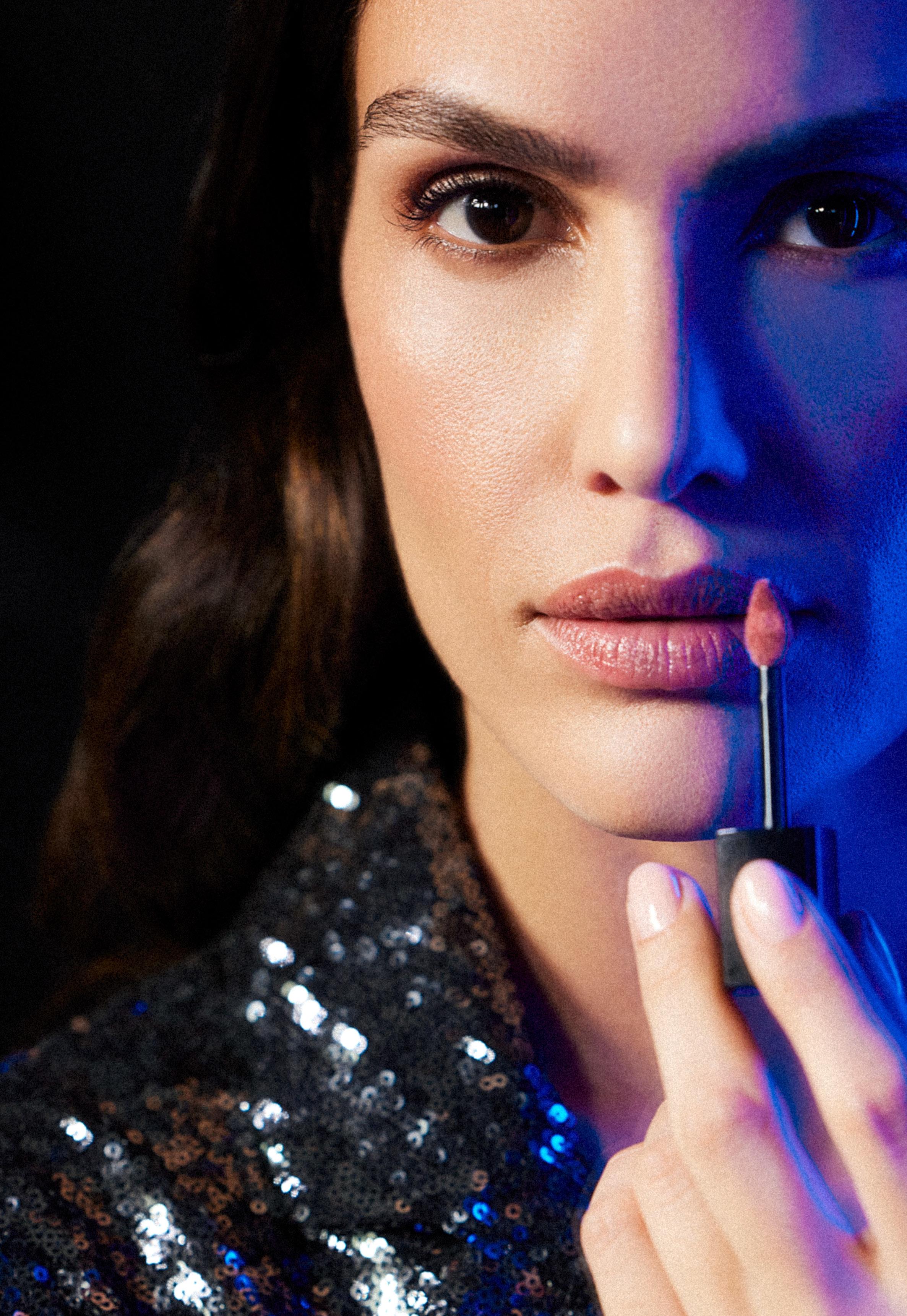
Our innovative formula follows a more natural look, giving supreme suppleness and unparalleled projection power.
Enhance with the power of MaiLi Define.
MaiLi.com
®
*Data on file. Actual patient, individual results may vary CE mark CE2797. MaiLi devices are intended for correction of facial wrinkles or folds, for the definition or enhancement of the lips, and for the restoration or enhancement of the facial volume.

Case Study: Combining RF Microneedling and CO2


Acne is a common disorder of adolescence and acne scarring is seen in around 43% of acne sufferers presenting to dermatology clinics.1,2 Whilst there is a broad range of treatment options available for acne scarring including chemical peels, microneedling, ablative laser treatments and dermabrasion, these options have varying degrees of effectiveness and risks.
Furthermore, the tolerability of treatments to patients is an important factor for clinicians to consider when prescribing a treatment plan. For example, whilst microneedling tends to be moderately uncomfortable and have little downtime, patients may find it hard to commit to the large number of treatment sessions required to achieve an improvement; and whilst fully-ablative CO2 laser tends to yield excellent improvements in scarring, the pain, risks of hyperpigmentation and downtime mean that not all patients would tolerate or be suitable for the treatment.
A novel approach combining radiofrequency (RF) microneedling with fractional ablative CO2 laser attempts to bridge the gap between effectiveness and risk, whilst also improving tolerability to patients. Both RF microneedling and fractional ablative CO2
laser treatments have been found to be effective in the treatment of acne scarring.3-6 Combination therapy using both treatment modalities in the same session has also seen some success in recent years.4,7,8 In our experience, combination therapy appears to achieve a significant improvement in scarring, whilst minimising downtime and the risk of complications such as hyperpigmentation in darker skin types.
Case study
A 33-year-old patient with skin type V presented to our clinic with acne scarring predominantly affecting her cheeks. She had no medical problems, medication or allergies. She is a non-smoker and had no previous
aesthetic or skin treatments to address the scarring. Her acne vulgaris was considered to have ceased at least five years prior. She did have a history of cold sores.
Consultation
During her initial appointment she was seen by Dr Lapa and then had an OBSERV skin scan with the therapist to look at inflammation, pigmentation, oiliness and texture. She was started on a topical skincare regime consisting of:
• AM: gentle cleanser (patient’s own), OBAGI Clear Skin Brightening Cream, OBAGI Exfoderm Forte Exfoliator, vitamin C (patient’s own), sunscreen (patient’s own)
• PM: gentle cleanser, OBAGI Pore Therapy Salicylic Acid, OBAGI Tretinoin 0.025% with OBAGI Blender
The patient was booked for three sessions of RF microneedling to address deeper scars, followed by one session of combined RF microneedling with fractional CO2 laser to address superficial scars, pores and pigmentation. All treatments were performed at intervals of around one month. The patient had a CO2 laser patch test one month prior to the combination session to ensure she would have no adverse reactions, and started Aciclovir prophylaxis tablets two days prior to treatment to reduce the risk of a herpes simplex outbreak. The patient was advised to pause all active skincare except the use of a cleanser, vitamin C and sunscreen for seven days prior to treatment and to restart seven days post-treatment. This was to ensure the skin was calm, not actively peeling and optimally protected from the sun and oxidative damage.
Procedure
On the day of the combination treatment (the patient’s fourth session of treatment at our clinic), her skin was reviewed for progress, the patch test was reviewed for any complications, pictures were taken, and she was asked to read and complete the consent
@aestheticsgroup @aestheticsjournaluk Aesthetics aestheticsjournal.com Reproduced from Aesthetics | Volume 9/Issue 8 - July 2022
Mr Rishi Mandavia and Dr Tatiana Lapa describe the treatment of acne scarring using a combination of radiofrequency microneedling and CO2
Combination therapy appears to achieve a significant improvement in scarring whilst minimising downtime

form. A 4% lidocaine cream was applied and cling film placed over the cream to prevent it from drying out. This was then removed in sections using a non-alcohol based antiseptic solution. Each section was first treated with RF microneedling, and the anaesthetic cream was reapplied before moving on to the next section of treatment.
The Cutera Secret PRO device using a 24-pin semi-insulated cartridge was used for the treatment. This cartridge delivers a pulse of RF energy exclusively at the pin-tip with the remaining length of the needle insulated and not thermally active. The temples and mid and lower face were treated at 2mm depth, 50% intensity, 200ms energy and 50% overlap and followed with a second pass at 1mm depth, 50% intensity, 100ms energy and 50% overlap. The forehead was treated at 1.2mm depth, 30% intensity, 120ms energy and 50% overlap. The periorbital region and nose were treated at 1.5mm depth, 50% intensity, 150ms energy and 50% overlap. A total of 220 pulses were administered for the full face. This protocol is similar to what the patient had in her first three sessions of RF microneedling, alone.
Once the full face was treated with RF microneedling, the fractional CO2 laser treatment was performed. The patient underwent fractional CO2 laser treatment using the Cutera Secret PRO platform with the following settings: 51mj, 1.5mm distance between thermal zones, no stacking and only one pass was performed. The skin was cooled throughout the laser treatment using the Zimmer cryocooler device and smoke was extracted using a surgical smoke evacuator.
Aftercare
The post-procedure regime given to the patient included a mineral sunscreen
(ZO Broad Spectrum SPF 50) and a paraffin-based ointment (50 liquid paraffin: 50 white soft paraffin). The patient was sent home with the topical products, topical hydroquinone 4% (OBAGI Clear for four to six weeks), an antiviral (Aciclovir 200mg QDS for one week) to reduce the risk of a herpes outbreak, and antibiotics (Flucloxacillin 500mg QDS for one week) to reduce the risk of infection. She was also given strict instructions on skin hygiene and sun avoidance, which she needed to maintain for six weeks.
The patient was reviewed at two weeks and again at four months after her combination treatment and she was delighted with her results. The ‘after’ picture was taken at the four-month review. You can observe an improvement in the patient’s pigmentation, scarring and general skin vitality. In our experience, the improvement in skin texture is likely to be long-term. Some of the deeper scars remain and this patient is planned to have a second session of combination treatment at her six-month review to further optimise her results.
Potential complications
Based on our experience using the technology, the expected side effects of this particular combination therapy can include redness, pain, crusting, blistering, weeping, swelling and bruising. Although rare, it is important that the patient is also aware of potential complications such as post-inflammatory hyperpigmentation (PIH), nodule formation, worsening of scarring, allergy, skin infection and potentially triggering acne-flare or milia formation. Some of these complications can be minimalised through proper
pre-care and aftercare. For example, the topical application of clobetasol ointment immediately post-procedure has been found to significantly reduce the risk of PIH in darker skin types.10
Consider the combination approach
We have been performing combination microneedling RF with fractional ablative CO2 laser therapy for skin types I-V for more than four years. We have observed excellent improvements in acne scarring and often in a single treatment session. We have, thus far, not experienced any serious or long-lasting complications.




Mr Rishi Mandavia is an ENT surgical doctor and managing director of the Dr Tatiana Aesthetic Dermatology Clinic. He qualified from King’s College London School of Medicine, where he was awarded the European Student of the Year Award. Mr Mandavia is a World Health Organization expert advisor, Royal College of Surgeons Associate Surgical Speciality Lead, Lancet commission member, NICE scholar and regularly lectures at Imperial College London and UCL.
Qual: MBBS, BSc, MSc, MRCS(ENT), PhD
Dr Tatiana Lapa is the medical director of the award-winning Dr Tatiana Aesthetic Dermatology Clinic in Marylebone, London. She is a practicing GP in the NHS, a KOL for Cutera and a brand ambassador for Vivacy. Dr Tatiana has a strong academic background with a Batchelor’s degree in Aerospace Physiology, a Master’s degree in Aesthetic Medicine, numerous publications and she is a regular speaker at national and international conferences.
Qual: MBBS, BSc, MSc, MRCGP
@aestheticsgroup @aestheticsjournaluk Aesthetics aestheticsjournal.com Reproduced from Aesthetics | Volume 9/Issue 8 - July 2022
Figure 1: 33-year-old patient before and four months after the final treatment using the Secret PRO RF microneedling device
VIEW THE REFERENCES ONLINE! AESTHETICSJOURNAL.COM Before After Before After





SAVE THE DATE – ENTRY OPEN SOON Check out the top tips for writing a successful Aesthetics Awards application @aestheticsgroup @aestheticsjournaluk Aesthetics FIND OUT MORE +44 (0)20 3096 1228 or email contact@aestheticsjournal.com ENTRY OPENS JULY 31 11 March 2023 | Grosvenor House Hotel, London
Restylane® Kysse™
When it comes to facial injectables, lip enhancement with hyaluronic acid (HA) fillers remains a highly popular procedure and is often subject to celebrity-driven ‘trends’ for a particular look or shape. In recent years, consumer demand has shifted away from the highly exaggerated effect of Angelina Jolie or Kylie Jenner to a more understated, natural-looking result. This reflects the ethos of many reputable practitioners, who prefer to subtly enhance and augment patients’ lips with a versatile, carefully designed product such as Restylane Kysse – which restores youthful volume whilst retaining a natural look and feel – both in dynamic and resting expressions.

Restylane Kysse for movement and volume
Restylane Kysse from Galderma is designed for flexible movement and natural-looking volume proven to last for up to one year.1,2,3 The OBT™ technology produces soft and flexible gels, helping create a natural fullness and volume not only at rest but also in animation. The softness and flexibility of the HA gel is tailored to ensure sufficient firmness to retain the desired lip shape over time.
Provides patient and partner satisfaction
A key concern among patients considering lip enhancement is not only achieving a natural look and feel post-treatment, but also how their partners will find the result. Galderma can now provide additional confidence and reassurance for practitioners, thanks to results from an open-label post-marketing study of 59 patients, which assessed both patient and partner satisfaction following treatment with Restylane Kysse:
• 100% of patients and investigators rated lips as improved, much improved or very much improved at week eight post-treatment.
• 87% of patients felt more attractive.
• 98% of patients were satisfied or very satisfied with the kissability of their lips.
• 96% thought that their lips had a natural look after treatment.
In addition, 90% of the partners were satisfied or very satisfied with the appearance of the patients’ lips after treatment and 73% of partners agreed that the patients’ lips had a more kissable and natural feel after treatment.
*Study information: 19 patients received Restylane Kysse only, and 40 received Restylane Kysse in combination with Restylane Refyne and/or Restylane Defyne for correction of facial wrinkles and folds. Regarding safety, all treatment-emergent related adverse events were non-serious and 96% were mild, with a median duration of 2.5 days. In other words, treatment with Restylane Kysse in the lips was well tolerated.1
Explore the Restylane portfolio
To find out more about Restylane Kysse and how this can complement your treatment portfolio, speak to your Galderma sales representative or contact sales.UK@galderma.com

Aesthetics | July 2022 39 @aestheticsgroup @aestheticsjournaluk Aesthetics aestheticsjournal.com Advertorial Galderma
A dermal filler for volumised, natural looking and ‘kissable’ lips, backed by science REFERENCES 1. Nikolis A IMCAS Poster 2020 2. Restylane Kysse. Instructions for Use. Galderma Laboratories, L.P., 2020. 3. Hilton S, Sattler G, Berg AK, Samuelson U, Wong C. Randomized, evaluator-blinded study comparing safety and effect of two hyaluronic acid gels for lips enhancement. Dermatol Surg. 2018;44:261-269. Before After This advertorial was written and supplied by Galderma UKI-RES-2200211 DOP May 2021 Adverse events should be reported. For the UK, reporting forms and information can be found at www.mhra.gov.uk/yellowcard or search for MHRA Yellow Card in the Google Play or App Store. For Ireland, suspected adverse events can be reported via HPRA Pharmacovigilance, www.hpra.ie Adverse events should also be reported to Galderma (UK) Ltd. Email: Medifto.uk@glderma.com Medifto.uk@glderma.com Tel: +44 (0)300 3035674 between treatment groups RESULTS 95 % FULLNESS IMPROVED lip items 8 weeks following satisfied’ 31 89 Shape of upper lip 41 93 % Look of cupid’s brow 41 Size 96 % 27% 93 % Look of outer corners (relaxed) 25% 91 % Upper lip fullness Shape of upper lip Look of Cupid's bow Size Look of outer corners (relaxed) Upper lip fullness 96 41 % 27% 25 % 41 % 89 93 % % 93 % 91 96 % (KISSABILITY) AND KISSABILITY SATISFACTION Fully agree Somewhat agree 87% Feel more attractive Very positive Positive 91 % Comments received from partner LIPS - FACE-Q or ‘v ery satisfied’ 54 % 98 % Lower lip fullness 49 % 100 % Style 31 % 89 % Shape of upper lip 41 % 93 % Look of cupid’s brow FACE-Q or ‘v ery satisfied’ Lower lip fullness Style Shape of upper lip Look of Cupid's bow Size 98 % 49 % 31 % 41 % 54 % 41 % % 89 93 % 98 % 100 % SATISFACTION RESULTS 98% OF SUBJECTS WERE SATISFIED WITH THE KISSABILITY OF THEIR LIPS AFTER TREATMENT (KISSABILITY) ’improved’, ’much improved’ or following their last treatment. treating investigator to have improved’ lip fullness. 25% 91 % Upper lip fullness lip fullness % SATISFACTION attractive 31 % 89 % Shape of upper lip 41 % 93 % Look of cupid’s brow 41 % Size 96 % 27% 93 % Look of outer corners (relaxed) Upper Shape of upper lip Look of Cupid's bow Size Look of outer corners (relaxed) Upper lip fullness 96 31 % 41 % 27% 25 % 41 % % 89 93 % % 93 % 91 96 % SATISFIED TREATMENT RESULTS AESTHETIC IMPROVEMENT 95 % 100 % LIP FULLNESS IMPROVED of subjects were satisfied with all FACE-Q lip items 8 weeks following their last treatment, ≥50% were ’very satisfied’ 89% ≥ Shape of lower lip 66% 100 % Baseline Week 8 FIGURE 3. SUBJECT SATISFACTION WITH LIPS - FACE-Q % subjects responding that they were ‘somewhat satisfied’ or ‘very satisfied’ 61 % 100 Suit face 44 96 % Look nice (smiling) 54% 98 % Lower lip fullness 49% 100 Style 31% 89 % Shape of upper lip 41 % 93 % Look of cupid’s brow 41 % Size 96 % 27 93 % Look of outer corners (relaxed) 25 91 Upper lip fullness Shape of lower lip % Baseline Week 8 SUBJECT SATISFACTION WITH LIPS - FACE-Q % subjects responding that they were ‘somewhat satisfied’ or ‘very satisfied’ Suit face Look nice (smiling) Lower lip fullness Style Shape of upper lip Look of Cupid's bow Size Look of outer corners (relaxed) Upper lip fullness 96% 96% 66 % 61 % 49 % 31% 41 % 27% 25 % 54 % 44 % 41 % 100% 100% % 89 93 % % 93 % 91 98 % 96 % 96 % 100% SUBJECT SATISFACTION (FACE-Q) SUBJECT SATISFACTION (KISSABILITY) LIPS AND KISSABILITY SATISFACTION SUBJECT SATISFACTION* AFTER TREATMENT Excellent Very satisfactory Satisfactory 100% Result of lip treatment *Percentage of subjects who were satisfied with questionnaire it Very satisfactory Satisfactory 94 % Smooth, sensuous feel Fully agree Somewhat agree 87% Feel more attractive Very positive Positive 91 % Comments received from partner Shape of lower lip 66 % 100% % Baseline Week 8 FIGURE 3. SUBJECT SATISFACTIONa WITH LIPS - FACE-Q a % subjects responding that they were ‘somewhat satisfied’ or ‘very satisfied’ 61 % 100% Suit face 44 % 96 % Look nice (smiling) 54 % 98 % Lower lip fullness 49 % 100% Style 31 % 89 % Shape of upper lip 41 % 93 % Look of cupid’s brow 41 % Size 96 % 27% 93 % Look of outer corners (relaxed) 25% 91 % Upper lip fullness Shape of lower lip % Baseline Week 8 SUBJECT SATISFACTIONa WITH LIPS - FACE-Q a % subjects responding that they were ‘somewhat satisfied’ or ‘very satisfied’ Suit face Look nice (smiling) Lower lip fullness Style Shape of upper lip Look of Cupid's bow Size Look of outer corners (relaxed) Upper lip fullness 98 % 96 % 96 % 66 % 61 % 49 % 31 % 41 % 27% 25 % 54 % 44 % 41 % 100% 100% % 89 93 % % 93 % 91 98 % 96 % 96 % 100% SUBJECT SATISFACTION NATURAL RESULTS 96% OF SUBJECTS AGREED THAT THEIR LIPS HAD A NATURAL LOOK AFTER TREATMENT 98% OF SUBJECTS WERE SATISFIED WITH THE KISSABILITY OF THEIR LIPS AFTER TREATMENT PARTNER SATISFACTION (KISSABILITY) 100% of subjects rated their lip fullness as ’improved’, ’much improved’ or ’very much improved’ on the GAIS 8 weeks following their last treatment. 100% of subjects were also rated by the treating investigator to have ’improved’, ’much improved’ or ’very much improved’ lip fullness. TREATMENT RESULTS AESTHETIC IMPROVEMENT 95 % 100 % LIP FULLNESS IMPROVED of subjects were satisfied with all FACE-Q lip items 8 weeks following their last treatment, ≥50% were ’very satisfied’ 89% ≥ Shape of lower lip 66% 100% % Baseline Week 8 FIGURE 3. SUBJECT SATISFACTION WITH LIPS - FACE-Q % subjects responding that they were ‘somewhat satisfied’ or ‘very satisfied’ 61 % 100% Suit face 44 % 96 % Look nice (smiling) 54 98 % Lower lip fullness 49 100% Style 31% 89 Shape of upper lip 41 93 % Look of cupid’s brow 41 Size 96 % 27% 93 % Look of outer corners (relaxed) 25% 91 % Upper lip fullness Shape of lower lip % Baseline Week 8 SUBJECT SATISFACTION WITH LIPS - FACE-Q % subjects responding that they were ‘somewhat satisfied’ or ‘very satisfied’ Suit face Look nice (smiling) Lower lip fullness Style Shape of upper lip Look of Cupid's bow Size Look of outer corners (relaxed) Upper lip fullness 96% 96% 66 % 61 % 49 % 31% 41 % 27% 25 % 54 % 44 % 41 % 100% 100% % 89 93 % % 93 % 91 98 % 96 % 96 % 100% SUBJECT SATISFACTION (FACE-Q) SUBJECT SATISFACTION (KISSABILITY) LIPS AND KISSABILITY SATISFACTION SUBJECT SATISFACTION* AFTER TREATMENT Excellent Very satisfactory Satisfactory 100% Result of lip treatment *Percentage of subjects who were satisfied with questionnaire it Very satisfactory Satisfactory 94 % Smooth, sensuous feel Fully agree Somewhat agree 87% Feel more attractive Very positive Positive 91 % Comments received from partner Shape of lower lip 66 % 100% % Baseline Week 8 FIGURE 3. SUBJECT SATISFACTIONa WITH LIPS - FACE-Q a % subjects responding that they were ‘somewhat satisfied’ or ‘very satisfied’ 61 % 100% Suit face 44 % 96 % Look nice (smiling) 54 % 98 % Lower lip fullness 49 % 100% Style 31 % 89 % Shape of upper lip 41 % 93 % Look of cupid’s brow 41 % Size 96 % 27% 93 % Look of outer corners (relaxed) 25% 91 % Upper lip fullness Shape of lower lip % Baseline Week 8 SUBJECT SATISFACTIONa WITH LIPS - FACE-Q % subjects responding that they were ‘somewhat satisfied’ or ‘very satisfied’ Suit face Look nice (smiling) Lower lip fullness Style Shape of upper lip Look of Cupid's bow Size Look of outer corners (relaxed) Upper lip fullness 98 % 96 66 % 61 % 49 % 31 % 41 % 27% 25 % 54 % 44 % 41 % 100% 100% % 89 93 % % 93 % 91 98 % 96 % 96 % 100% SUBJECT SATISFACTION NATURAL RESULTS 96% OF SUBJECTS AGREED THAT THEIR LIPS HAD A NATURAL LOOK AFTER TREATMENT 98% OF SUBJECTS WERE SATISFIED WITH THE KISSABILITY OF THEIR LIPS AFTER TREATMENT PARTNER SATISFACTION (KISSABILITY) 100% of subjects rated their lip fullness as ’improved’, ’much improved’ or ’very much improved’ on the GAIS 8 weeks following their last treatment. 100% of subjects were also rated by the treating investigator to have ’improved’, ’much improved’ or ’very much improved’ lip fullness.
for your clinic exclusively through Health Xchange pharmacy. E M O U L D .


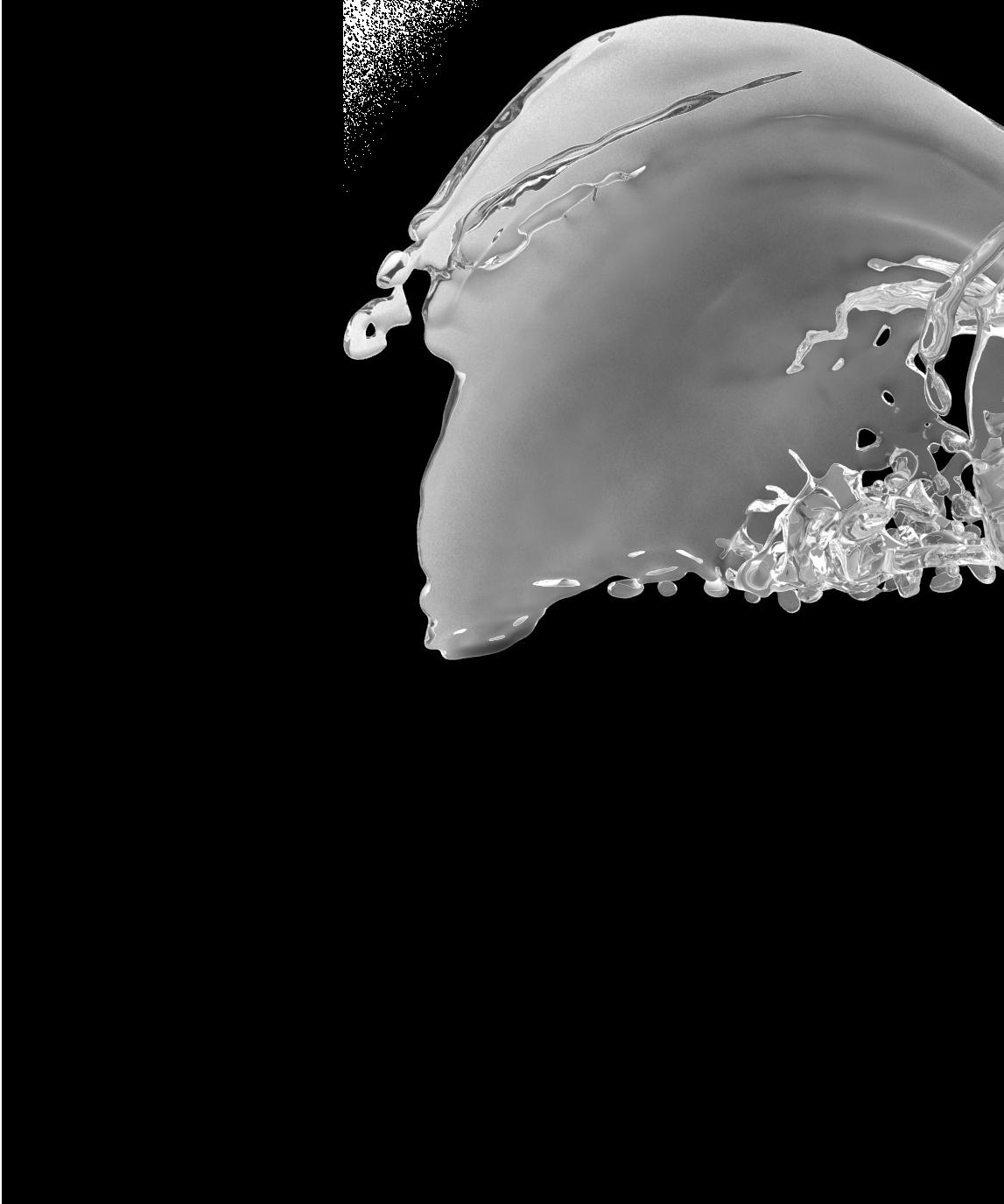
Interested in the latest HA technology? for your clinic exclusively through Health Xchange pharmacy. N E W T E C H N O L O G Y M A D E B O L A S P H E R I C A L R E VO L U T I O N D E S I G N E D T O B R E A K T H E M O U L D N E W T E C H N O L O G Y M
Treating Rosacea in Skin of Colour
Rosacea is a chronic inflammatory skin disorder affecting the convexities of the central facial region. It has a high prevalence in the Caucasian population; however, we are increasingly seeing reports of rosacea in skin of colour (SOC).1
A Saudi study (N=50) reported a 42% incidence in skin type VI, 40% in skin type IV and 18% in type III.1,2 In Tunisia, 224 cases of rosacea were reported in the dark-skinned population (hospital prevalence 0.2%).1 In addition, a multicentric study in Colombia identified 291 rosacea patients: 12.4% with skin types IV or V.2 A study of 2,743 Angolan adults with Fitzpatrick skin types V-VI reported only 0.4% of patients had rosacea, meanwhile data from the United States National Ambulatory Medical Care Survey of 31.5 million rosacea visits showed that 2% of patients were types V and VI.2

Diova et al. reported on 15 of 6,700 South African patients with confirmed rosacea of which six (type V) showed erythema, telangiectasia and erythematous papules and nine (type VI) presented with skin-coloured papules.3 None reported flushing and only one had eye symptoms and extra facial lesions. HIV-positivity was likely to predispose
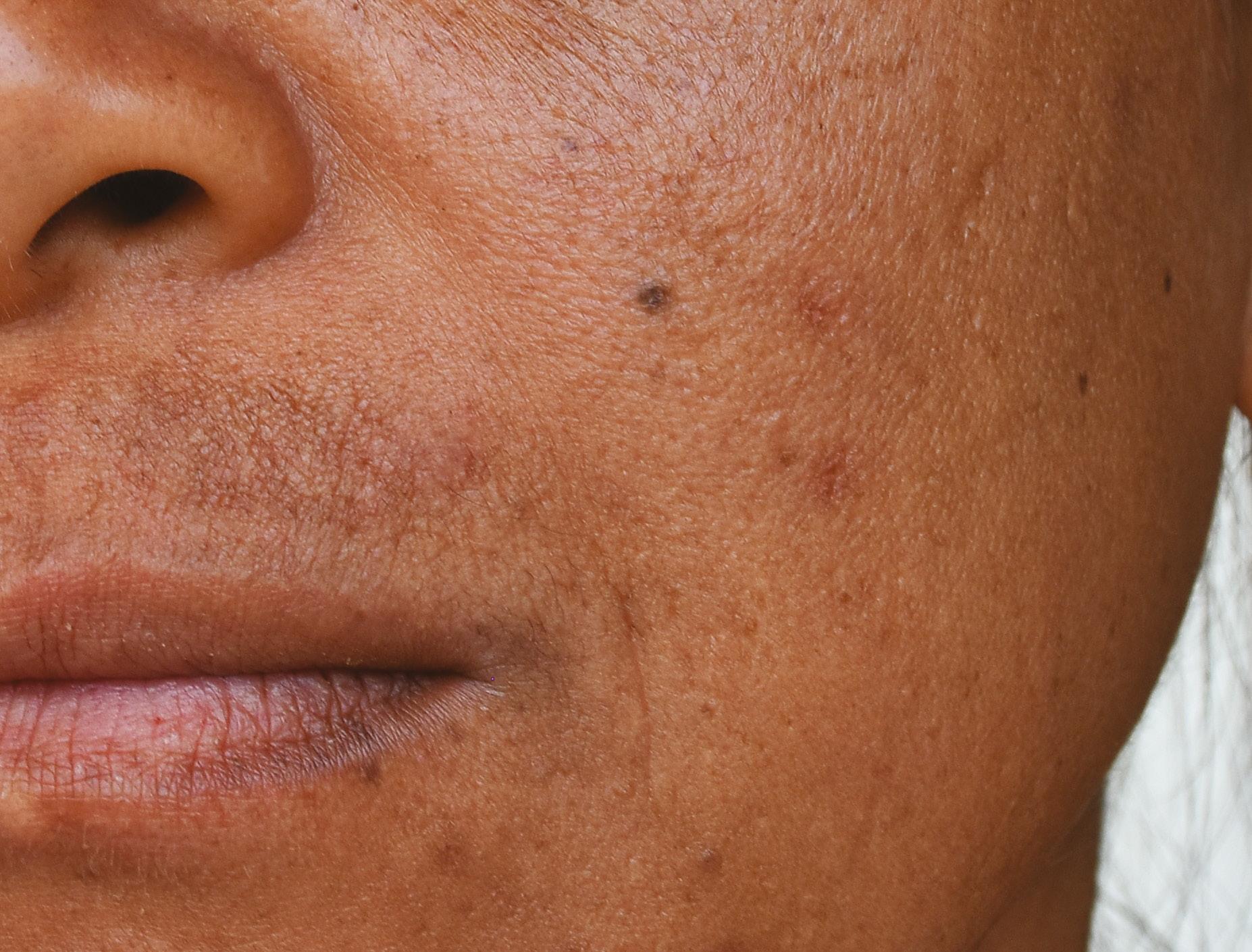
to this condition. Histology confirmed 10 out of 15 patients had a granulomatous rosacea. Five patients had used topical steroids in the past year.3
As we can see from these studies, there exists an immense heterogeneity of numbers and symptoms of rosacea reported among SOC patients. This could be attributed to the under detection of the condition in SOC.
What causes rosacea?
The pathogenesis of rosacea is multifactorial and includes genetic susceptibility, class II major histocompatibility complex polymorphism, altered microbiome of the skin and gut, dysregulated immune response, neuro-cutaneous mechanisms and impairment of the skin barrier. All these components are aggravated by triggers such as UV light, alcohol, caffeine, the weather, sun and emotional stress, which activates the sympathetic nervous system.1,4,5 To avoid these triggers, SOC patients should maintain a daily diary of exposure and symptoms to establish a correlation and thus work on avoidance of triggers.
How do you diagnose rosacea in SOC?
Rosacea is diagnosed clinically, according to the diagnostic and major criteria recommended by the 2017 Global Rosacea Consensus panel. This requires one diagnostic criterion or two major criteria to be fulfilled (Table 1).6
In patients with a darker phototype, where erythema and telangiectasia (visible blood vessels) are arduous to ascertain, greater significance is placed on other major and minor features, such as burning, stinging, dryness and swelling of facial skin. In addition, we personally check for erythema with blanching (diascopy),2 with photography against a blue background, or with dermoscopy to visualise telangiectasia. Dr Virmani uses a skin analysis imaging system (Canfield’s Visia, OBSERV), which can highlight presence of erythema and telangiectasia in SOC. In cases where there is a diagnostic uncertainty, a skin biopsy may be considered and/or referral to another practitioner more experienced in this area. A skin biopsy could reveal presence of mites, an inflammatory pattern, and helps differentiate it from other skin conditions that can cause similar symptoms. The SOC patient may only report a sensation of facial warmth, product sensitivity, unidentified violet, blue, purple or dusky brown discolouration or dry swollen facial patches. Sometimes patients may present with resistant acne-like spots or with gritty and sensitive eyes. Forehead and nose thickening can develop over time.4
It’s important to consider acne vulgaris, sarcoid, seborrheic dermatitis, steroid induced acne, steroid induced rosacea, systemic lupus erythematosus, dermatomyositis, eczema, pyoderma faciale, periorificial dermatitis or photodamage.2
Treatment options
The NICE guidelines follow the rosacea consensus whereby a phenotypic personcentred approach is used to determine the treatment plan.7 We use the same approach for SOC as for any patient with rosacea, which includes clearance/ reduction of papules and pustules, mitigation and avoidance of post-inflammatory hyperpigmentation (PIH), long-term suppression of erythema and inflammation, management of patient expectations, and education about disease chronicity and long-term treatment.8 Ocular rosacea must be referred to an ophthalmologist.
aestheticsgroup @aestheticsjournaluk Aesthetics aestheticsjournal.com Reproduced from Aesthetics | Volume 9/Issue 8 - July 2022
Dr Surbhi Virmani and Dr Neelu Sharma provide an introduction to treating rosacea in patients with darker skin
Diagnostic features
Phymatous changes
Persistent erythema
Flushing/transient erythema
Papules and pustules
Telangiectases
Burning sensation of the skin
Stinging sensation of the skin
Dry sensation of the skin
Oedema
Table 1: Common rosacea features6
Medical and procedural interventions
Description
Facial skin thickening due to fibrosis and/or sebaceous glandular hyperplasia. Most commonly affects the nose, where it can impart a bulbous appearance.
Background ongoing centrofacial redness. May periodically intensify in response to variable triggers. In darker skin phototypes (V and VI), erythema may be difficult to detect visually.
Major features
Temporary increase in centrofacial redness, which may include sensations of warmth, heat, burning and/or pain.
Red papules and pustules, usually in the centrofacial area. Some may be larger and deeper.
Visible vessels in the centrofacial region but not only in the alar area.
Minor features
An uncomfortable or painful feeling of heat, typically in the centrofacial region.
An uncomfortable or painful sharp, pricking sensation, typically in the centrofacial region.
Skin that feels rough. May be tight, scaly and/or itchy.
Localised facial swelling. Can be soft or firm (nonpitting) and may be self-limited in duration or persistent.
Existing treatments for rosacea in SOC can be very effective; however, patients must be explained that they will need combination treatments to achieve success in controlling the disease process.5
Transient erythema (flushing)
Treatment options include alpha-adrenergic agonists (topical brimonidine, topical oxymetazoline). They are often used infrequently for special occasions such as a wedding or interview as persistent use may result in rebound flushing on discontinuation. Oral beta-blockers (carvedilol) and oral clonidine may reduce flushing.
Persistent erythema
Patients should be given alpha-adrenergic agonists (topical brimonidine, topical oxymetazoline, as above), intense pulsed light therapy or vascular laser.
Inflammatory papules/pustules
Various treatment options are available which includes topical ivermectin, topical metronidazole (for mild/moderate rosacea only), topical azelaic acid (for mild/moderate rosacea only), topical erythromycin, oral tetracyclines (oxytetracycline, lymecycline, doxycycline), oral macrolides (erythromycin, azithromycin), oral metronidazole and oral isotretinoin often at low dose (for refractory disease only). An oral antibiotic is to be offered as a first-line treatment option for severe papulopustular rosacea.5 Our choices are azithromycin, clarithromycin, doxycycline 40mg (modified release) daily, doxycycline 100mg daily, erythromycin, lymecycline and oxytetracycline. Severe rosacea should consider intermittent courses of low-dose isotretinoin (0.25mg
kg–1), keeping in mind the potential side effects and teratogenicity of this drug. Oral propranolol is an option for troubling transient facial erythema.5
Telangiectasia
In our experience, electrodesiccation, intense pulsed light (IPL) therapy or vascular laser have been appropriate and successful treatment options for SOC patients suffering with rosacea. Consider pulsed dye laser (PDL), Nd:YAG laser or IPL in people with rosacea where the main presenting feature is persistent facial erythema. The high melanin content in SOC, along with the broad absorption of melanin on the electromagnetic spectrum, presents therapeutic challenges with laser treatment, as the competing chromophore to the intended pigmented target is present throughout ethnic skin.9 PIH, which is rarely seen in light-coloured skin, can be a common outcome during inexperienced laser use in SOC.9
PDL is presently regarded as the treatment of choice for facial telangiectasia, due to its efficacy and safety profile.9 However, purpura and or PIH remain a risk in ethnic skin. Long-pulsed millisecond 1064 nm Nd:YAG lasers target the lesser absorption peak of oxyhaemoglobin in the infrared range and have been used in the treatment of large telangiectasias and reticular veins as they give deeper dermal penetration.9 The longer wavelength offers minimal absorption by epidermal melanin, thus providing a safe and effective treatment in patients with ethnic skin.9 Long-pulsed 755 nm alexandrite laser has also been used, but PIH is seen in 30% of patients.9
IPL remains one of the safest treatment choices but may not deliver equivalent results to the Nd:YAG or PDL.9
Neurogenic rosacea
In our experience, treatment options include gabapentin, amitriptyline, oral beta-adrenergic blockers and a consideration of endoscopic sympathectomy.
Phyma
If the rosacea is clinically inflamed, then in our experience, doxycycline or isotretinoin are good options. If clinically non-inflamed, then physical modalities to remove excess tissue and reshape the structures (such as ablative CO2 laser, erbium laser, radiofrequency, surgical debulking) should be considered.5 Pimecrolimus and tacrolimus are non-steroidal topical calcineurin inhibitors which would both need extremely cautions short term use if prescribed due to substance P release associated dermatitis.5
Skincare
It’s important to avoid rosacea irritants in a patient’s skincare. Patients should use fragrance-free skincare and makeup products. We always get patients to test patch a product on an area of skin in a peripheral area before using on their face in case of a reaction.10 It is pivotal to use a broad-spectrum SPF 50. Often those with SOC do not understand the importance of SPF, so education in this cohort is particularly important.4
Cleansers
Cleansers must be individualised and unless a patient has oily skin, non-soap cleansers are the best option with a neutral pH and are easily rinsible.5,10 We recommend patients wait 30 minutes to let the face dry before applying topical medication as stinging occurs on damp skin. Patients must wait another five to 10 minutes before applying SPF or makeup.
@aestheticsgroup @aestheticsjournaluk Aesthetics aestheticsjournal.com Reproduced from Aesthetics | Volume 9/Issue 8 - July 2022
SPF
UV rays are colour blind, so they hit all skin with equal strength. We advise to apply a mineral sunscreen liberally to exposed sites 15 to 30 minutes before going out into the sun. Sunscreen should be reapplied after vigorous activity and other sun protective measures should also be taken.
A big barrier to using sun protection on coloured skin is the cosmetic blending in of the product; often it can be too white or greasy. This requires some trial and error to find the best fit for your patient.
Moisturisers
The skin barrier consists of enucleated protein-rich corneocytes with highly organised intercellular lipids (ceramides, cholesterol, and free fatty acids) around and between them which maintain the stratum corneum hydration.11 Rosacea often involves a defective moisture barrier and a larger than normal transepidermal water loss, contributing to irritability and susceptibility to inflammation. Older age groups with drier skin may find that the winter or dry weather
is especially challenging for sufferers of rosacea.4 The use of ceramide-containing skincare products has been shown to restore ceramide composition and improve skin function and disease severity.12
Understanding rosacea in SOC
We recommend the diagnosis of rosacea based on symptoms, history of failed acne therapies, presentation of typical triggers, a family history and possibly mixed heritage ancestry of the patient. Signs and symptoms concentrated in the central face, erythema noticeable with blanching or photography, dermoscopy to visualise telangiectasia are all important in establishing a diagnosis. The treatment objectives for SOC are the same as for any patient with rosacea and involves clearance and reduction of papules and pustules, plus mitigation and avoidance of PIH. The patient must be educated about the chronicity and the long-term treatment involved. This would include inclusion of lifestyle changes such as avoiding trigger factors and sunscreen, in addition with a gentle restorative skincare regimen.13
Dr Surbhi Virmani graduated in medicine in 1996 following which she was awarded a MD (Masters) in Anaesthesia, PG Dip in Clinical Dermatology and Bachelor of Laws. With more than 20 years of experience in anaesthetics and critical care working worldwide and for the NHS, Dr Virmani moved to aesthetics and cosmetic dermatology. She runs an acne-rosacea clinic for children and adults from her Harley Street practice.
Qual: MBBS, MD (Anaesthetics), PG Dip Clin Dermatology, GDL, LPC, LLB
Dr Neelu Sharma graduated in Medicine in 1996 followed by an MD in Dermatology from New Delhi, India, where she practices as a consultant dermatologist. Her area of expertise is disease in skin of colour patients.


Qual: MBBS, MD (Dermatology)
VIEW THE REFERENCES ONLINE!

WWW.AESTHETICSJOURNAL.COM
•
•
•
•
@aestheticsgroup @aestheticsjournaluk Aesthetics aestheticsjournal.com Reproduced from Aesthetics | Volume 9/Issue 8 - July 2022
online
your clinical practice with specialist knowledge of aesthetic medicine, including high-calibre theoretical training in procedures such as
toxin injections, dermal fillers and laser treatment. Designed and delivered by leading aestheticians, specifically for practising clinicians.
Part-time,
MSc Aesthetic Medicine Broaden
botulinum
Study
other commitments, from anywhere in the world
part-time alongside
Develop an improved theoretical understanding of procedures and patient management
Complement your existing practical skills with knowledge on key issues in the aesthetic medicine profession
Also available as a PGCert or PGDip Apply now for September 2022
entry: qmul.ac.uk/postgraduate






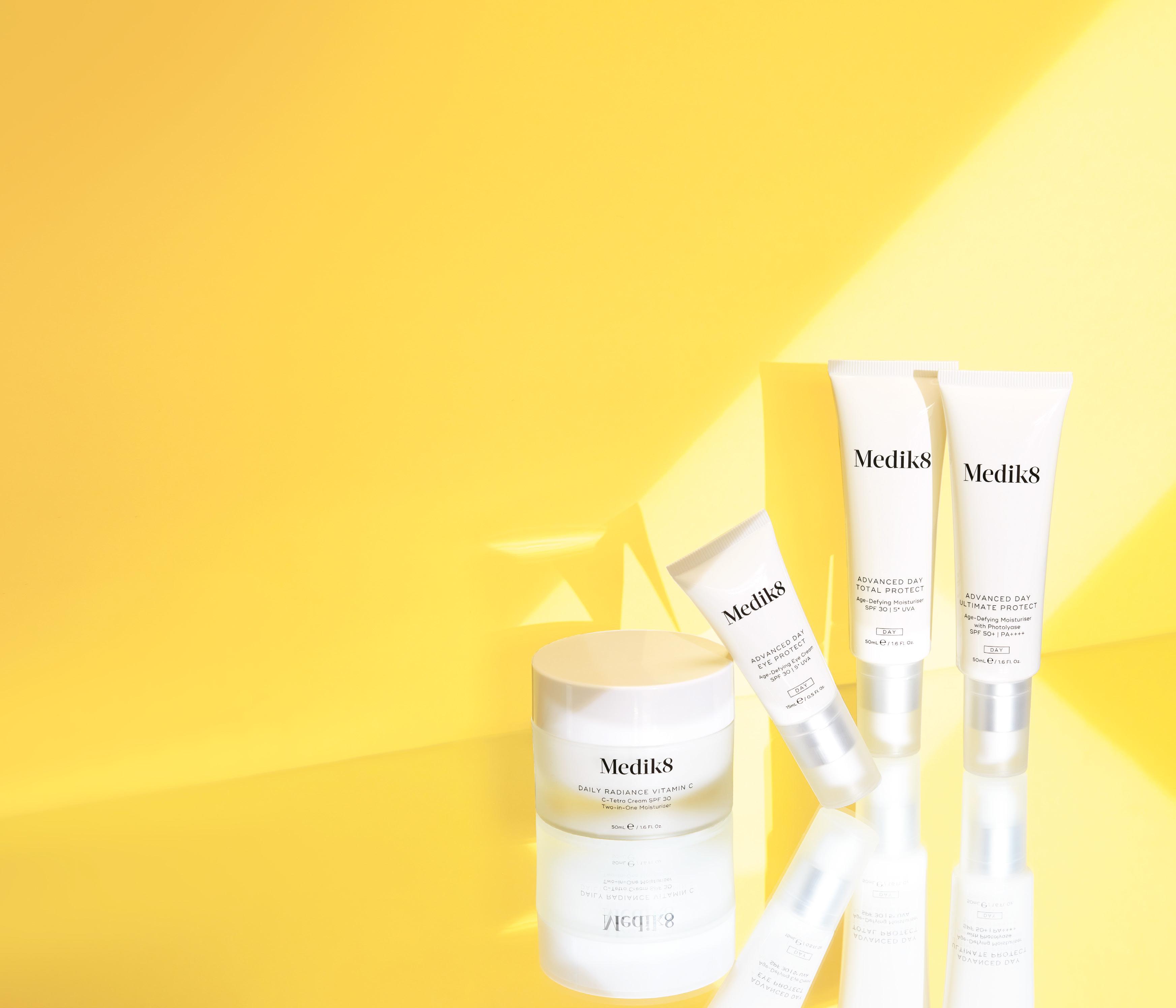
BBL vs IPL
BBL is an advanced IPL technology that utilises light in the visible and infrared spectrum.5 It is important to note that like IPL, BBL is not a laser, and its light encompasses a range from 400 nm to 1400 nm. Faster treatments are possible with BBL.6 BBL emits multiple wavelengths within a band of light allowing multiple targets to be treated at the same time.6 The light is generated from dual xenon flashlamps within the handpiece and delivered to the tissue via an electronically cooled sapphire crystal.6
Case study
Consultation
Case Study: Treating Solar Lentigines
Age spots or solar lentigines are a common skin concern for those looking to achieve skin rejuvenation. They are usually flat, pigmented lesions commonly found on sun-exposed areas such as the face, neck, chest and hands and are induced by UV light exposure.1 Their treatment can be broadly split into topical and physical therapy. Topical options include agents such as retinoids, cysteamine or hydroquinone. Physical treatments include cryotherapy or laser treatments.2 A newer modality available for the treatment of solar lentigines includes broadband light (BBL). Whilst intense pulsed light (IPL) treatments have long been used to address common skin concerns associated with sun exposure, BBL offers an advancement on IPL technology with increased safety, efficacy and speed.3 This article aims to inform the reader on what BBL is and present a case where it has safely been used to treat solar lentigines.
A new technology
While BBL is new to the UK through the BBL Hero device, the technology was first introduced in 2004 and is well adopted throughout the world.3 It is commonly used for skin rejuvenation by clearing pigmented lesions, diffusing redness, and treating thread veins and active acne. The technology is also highly capable for permanent hair reduction in skin types I-V by utilising either a stamping or ‘in-motion’ technique.4 Corrective skin rejuvenation treatments are offered in a series of three to five treatments spaced four to six weeks apart. BBL is often safely combined with other skin rejuvenation treatments such as microneedling, medical-grade facials, fractional laser and radiofrequency microneedling in a single session.4
A 69-year-old patient with Fitzpatrick type II skin attended the clinic as they had noticed a proliferation of age spots and uneven pigmentation on their skin. She felt that they had appeared relatively recently and was concerned with the ageing effect they had on her appearance. The patient split her time between the UK and the south of France and previously had not always been regimented with sunscreen application, so had a fair amount of UV exposure. A large portion of the consultation process was a discussion and education of the patient with regards to the effects of UV damage on the skin, and the need for regular high factor 50, broad-spectrum sunscreen to protect the skin going forward. Any treatments to solve her solar lentigines would rely on ongoing sunscreen use to protect her results and prevent further formation of other lesions. It would also help reduce her risk of forming more lesions such as skin cancers that could have an even greater impact on her health. I examined the patient’s lesions with the ABCDE rule and concluded no abnormalities. Whilst there are many ways of addressing skin tone and pigmentation including chemical peels, at-home use of medical-grade skincare options, including products containing cysteamine; the patient was keen to go for a procedure that could be carried out in-clinic, with little downtime or side effects and using a treatment where she would see the results quickly. We opted for BBL as, other than a darkening of existing pigment, there is little downtime or side effects seen.4 The treatment could be carried out quickly with no need for at-home skincare other than using a good quality sunscreen. I advised the patient that whilst she would see an improvement after one treatment, I personally believe that three treatments are generally required to provide a more long-term result, with the need for one to two maintenance treatments per annum.

Treatment
We carried out a course of three treatments using BBL to the patient’s face. Informed consent was gained, and a consent form signed. A pre-treatment Visia skin analysis was carried out to gain reproducible baseline imaging. The skin was cleansed and disinfected using Clinisept+ Prep & Procedure. A water-soluble ultrasound gel was applied to the face for use as a coupling agent
@aestheticsgroup @aestheticsjournaluk Aesthetics aestheticsjournal.com Reproduced from Aesthetics | Volume 9/Issue 8 - July 2022
Miss Jennifer Doyle outlines the use of broadband light therapy for improving the appearance of solar lentigines






The UNBEATABLE T RE ATMEN T PAIRI N G for Total Skin Renewal ©2020 Sciton, Inc All rights reserved Sciton is a registered trademark and MOXI, and BroadBand Light (BBL), and BBL are trademarks of Sciton, Inc. Printed in USA. ® LEARN MORE HERE! Phone: 020 3318 1108 | Email: info@sciton.com LEARN MORE: www.sciton.co.uk MOXI | courtesy of Armando Soto, MD MOXI + BBL Hero | courtesy of Sherrif Ibrahim, MD
between the BBL handpiece and the skin. Some test areas were carried out to ensure clinical endpoints were being achieved (such as darkening of pigmentation). We carried out the treatment with two all over passes using the 515 nm filter, 7 Joules/cm2 fluence, 3.0ms pulse width and 28 degrees cooling. The 515 nm filter was used to specifically target the pigmentation in this patient. For the third pass we spot-treated the solar lentigines using the corrective mode for pigmented lesions with the 515 nm filter, 9 J/Cm2 fluence, 20 msec pulse width and 20 degrees cooling.
Results
I reviewed the patient after two weeks following the first treatment. She reported she had not had any noticeable downtime after the procedure. As expected, the solar lentigines had initially darkened then had flaked off gradually over the week following the procedure. We repeated the treatment twice more at approximately two weekly intervals. At the end of the treatment course, we repeated the patient’s Visia skin analysis. She had achieved a 52% improvement in skin tone (spots) as a result of the treatment.
As well as a reduction in solar lentigines, this patient also noticed improvements in tissue laxity. Successful treatment depends on a combination of time and temperature to achieve collagen denaturation.8 After a series of up to five treatments, this denaturation results in new collagen deposition and shrinkage.8 Popular treatment areas include the crow’s feet, lower face, neck, chest, hands, abdomen, and above the knees. In addition to treatment technique, the practitioner must select the right candidates and set proper expectations to ensure best results. Ideal candidates have an appropriate amount of laxity (too much could be more of a surgical case) and understand the full series must be completed.
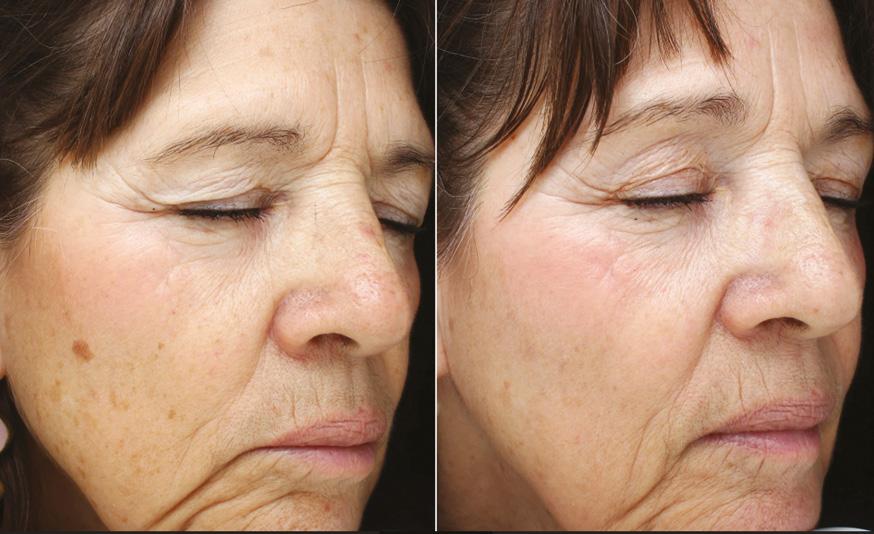
Considerations and side effects
As with any energy-based device, there are considerations a practitioner should take to avoid adverse outcomes when using BBL. The most common contraindication seen is actively tanned skin. A patient with an active tan must not be treated for at least
two weeks without sun exposure to avoid hyperpigmentation which can happen as a result of treating tanned skin. Other contraindications include natural, or medication-related light sensitivity, use of isotretinoin within six to 12 months, patients with medical conditions that affect wound healing, history of skin cancer, and any active infection.7
Another consideration is treatment of non-facial tissue which tends to be thinner and more sensitive to heat. In these areas, decreased fluence and increased cooling may be necessary. Suspicious lesions should never be treated, and the patient should be referred to an appropriate dermatologist for further examination.7
Tattooed areas should be strictly avoided as the ink may absorb energy resulting in colour change to the ink or a burn. Oedema around the eyes and bridge of the nose may occur immediately after a BBL treatment and remain for 24-48 hours.7 Purpura may occur in treated areas lasting for one to two weeks and is usually the result of too high of a fluence or too short of a pulse width. Hyperpigmentation may occur and although all skin types can be treated with BBL, there is a high risk in darker skin types. It is normal for a patient to have a tingly sunburn sensation which may last up to 24 hours post-treatment.7
An advancement of IPL
As well as improving solar lentigines and common skin concerns associated with photoageing, BBL offers a wide variety of treatments in a single technology. A proven foundation of skin rejuvenation therapy combined with innovative treatment enhancements make BBL an advanced treatment protocol.
Miss Jennifer Doyle is an ophthalmic and oculoplastic surgeon and has recently been appointed as a consultant at Milton Keynes University Hospital. She has a Bachelor’s in Medicine and a Bachelor of Surgery with distinction, as well as a Master’s in Medical Sciences from the University of Oxford. She is the lead aesthetics doctor at the Clinic at Holland Park. She has completed the Level 7 diploma in Injectables and is a lead trainer at Harley Academy.

Qual: BMBCh, MA(OXON), L7Cert, FRCOphth
REFERENCES
1. Dermascopia, ‘Solar Lentigines’, 2019, <https://dermoscopedia.org/Solar_lentigines>
2. Ortonne J, et al. ‘Treatment of solar lentigines’, Journal of the American Academy of Dermatology, 2006, <https://pubmed.ncbi.nlm.nih.gov/16631967/>
3. Ibrahim S, Cohen J, ‘Power of Two, Modern Aesthetics’,(2021), p.2
4. Dibernard B, Pozner J, ‘Intense Pulsed Light Therapy for Skin Rejuvenation’, Clinics in Plastic Surgery (2016), p.538.
5. Bitter P, et al. ‘New BBL Hero Offers Unprecedented Results for the Face and Body’, Prime Journal, (2021), p.13.
6. Goldberg D, ‘Current Trends in Pulsed Light’, The Journal of Clinical and Aesthetic Dermatology (2012).
7. Sciton, ‘Clinical In-Service Training’, 2020, <http://scitonpro.com/clinicaldocuments>
8. Carruthers J, Carruthers A, ‘The Effect of Full-Face BroadBand Light Treatments Alone and In Combination with Bilateral Crow’s Feet Botulinum Toxin Type A Chemodenervation’, Dermatol Surg (2004), p. 355-66.
@aestheticsgroup @aestheticsjournaluk Aesthetics aestheticsjournal.com Reproduced from Aesthetics | Volume 9/Issue 8 - July 2022
Figure 1: 69-year-old patient before and after three treatments with BBL (Forever Young BBL protocol used). Patient shows a reduction in solar lentigines and overall improved luminosity of the skin
Before After
Exploring Effective Tattoo Removal
Dr Osman Bashir discusses the challenges and limitations of treating tattoos with laser technology
Lasers have been relied upon for cosmetic purposes since the 1960s.1 Now, not only have there been significant advancements, meaning that procedures are often both safer and more effective, but there is a greater demand than ever before for treatment. Laser advancements have continued to accelerate, meaning that the results which are able to be achieved are now varied. Whilst lasers can be used for many aesthetic indications, one of the lesser known – but emerging – treatments is tattoo removal.1
Treatment options for tattoo removal besides lasers are surgery, radiofrequency, infrared light, cryotherapy, dermabrasion and salabrasion. Unfortunately, none of these procedures are associated with satisfactory cosmetic results due to adverse effects such as scarring and dyspigmentation.2
Laser treatments for tattoo removal are often considered to be safer than other methods such as surgical removal and dermabrasion.2 This is because they are minimally invasive and are only used on the ink of the tattoos. In my professional opinion, lasers represent the modern standard for tattoo removal. Nevertheless, cosmetic tattoo removal using lasers does not come without its challenges. Tattoo removal is often performed in proximity of ‘sensitive’ areas. The ink used in cosmetic tattoos may also contain substances that are not standardised and its colour therefore may change at a high temperature, so it’s important for practitioners to be aware of the techniques and methods necessary to carry out the procedure in the most effective way for the patient.3
Red, orange, yellow, brown 532 nm
Blue, purple, green 694 nm or 755 nm
Black,
How does laser work for tattoo removal?

When the ink particles absorb the laser light, they are broken down into fragments, which are then absorbed and excreted by the body’s immune system. This process usually takes two months. The number of sessions for tattoo removal depends on ink concentration, more superficial or deeper ink particle location, ink colour and tattoo density.4 In my own experience, I would suggest that these can take up to an average of six to eight sessions. Colours that respond best to laser removal are black, red, brown and orange, while the most difficult colours to remove are blue, green, purple and white.
The challenges and limitations
Although lasers have been the criterion standard for tattoo removal, selecting the best modality can be challenging because of the varying efficacies and adverse effects.5 One of the biggest challenges is that it is often difficult to predict treatment outcomes, and it is recommended to pre-treat small test spots to see how the patient will react.
Another challenge comes with managing patient expectations, as I have found that many patients often have unrealistic expectations. For instance, removal of large tattoos may need to be split up between two sessions and may take more sessions and time. In addition, not every tattoo can be completely removed and the skin won’t return to its normal state. Informed consent and dialogue between the patient and the laser surgeon before and during a treatment course is important since the patient needs to know the risk that removal can be unsuccessful, with complications including potential disfigurement.5
Choosing the right laser
The type of laser and wavelength chosen for removal largely depends on the patient’s tattoo colour and skin type. However, the Q-switched (QS) lasers are most preferable and I do consider this to be the most effective device for tattoo removal.
There are a number of types of FDA approved devices for tattoo removal; namely, the QS alexandrite, Q-switched Nd:YAG and Q-switched ruby lasers. Considerable differences among the three have been reported in relation to the rate of clearing of
Colour pigment Wavelength
blue 1064 nm Table 1: Tattoo colour and laser wavelength4
@aestheticsgroup @aestheticsjournaluk Aesthetics aestheticsjournal.com Reproduced from Aesthetics | Volume 9/Issue 8 - July 2022
the tattoo ink particles, tissue effects, beam profile, wound healing, and side effects.1
There are new picosecond lasers using 532 nm, 694 nm and 755 nm as well. Different wavelengths target different pigments, for example: 532 nm – red, orange, yellow, brown, 694 nm – black, blue, purple, green, 755 nm – black, blue, green, 1064 nm –black, blue (see Table 1). Q-switched 1064 nm/532 nm Nd:YAG lasers like Hollywood Spectra from Lutronic are my preference (with other brands available), as they present important characteristics which can contribute toward the removal of tattoos, such as the ability to reach only specific targets with minimal damage to the tissue. Allergy can be localised, or at a distant site, due to an immunological response. The Nd:YAG also carries less risk of hypopigmentation which is hugely beneficial.6,7
Patient selection
An accurate preoperative assessment must always be performed taking into account both the patient and tattoo characteristics. I always check what type of tattoo was performed (was it professional, traumatic), the duration, depth, surface area, allergic reactions, if layered (double tattoos), and if they have tried any non-laser methods previously. We also ask if the patient is HIV, hepatitis B or C positive, if they have any medical issues and a general health questionnaire is filled prior to laser treatment. Other factors to consider when evaluating tattoos for removal are: location, age and the skin type of the patient. We always take photographs during each session to track progress and ensure that the patient will achieve a positive outcome. Patients that would not be suitable for treatment tend to be those who develop an allergic reaction to tattoos, so we would avoid treating these patients. Women who are pregnant and breastfeeding are also unsuitable for treatment.
Before After
Figure 1: 26-year-old patient before and one week after six sessions using the Hollywood Spectra Q-switched Nd:YAG laser from Lutronic.
Side effects
While adverse events are mild and often represented by erythema, laser tattoo removal does also come with an increased risk of infection and the risk of permanent scarring and hypopigmentation. Practitioners can minimise the risk by taking an in-depth history from the patient, examining the colours within the tattoo in great detail and studying the results after each session. I also would recommend starting at a lower wavelength and advising the patients to apply a steroid, antibiotic cream after each treatment for two days.
Patients with Fitzpatrick IV-VI skin types should be treated cautiously due to increased risk for hypopigmentation following treatment. Lasers that penetrate deeper into the dermis, such as the Nd: YAG 1064 nm laser, are associated with a decreased risk of epidermal damage and hyperpigmentation.8 It’s also important to remember that some tattoo inks are resistant to laser, and multiple sessions and multiple wavelengths may be required for its complete removal.
Utilising laser
Tattoos are increasingly gathering attention in the young population, especially in the
Case study
This 26-year-old patient underwent six treatments with the Hollywood Spectra from Lutronic. Each treatment was spaced one month apart. The patient experienced no adverse effects and was prescribed with an antibiotic cream following each session to use on the area for two days following treatment, in order to reduce the risk of infection.
second to fourth decade of life. With such trends, the rate of its removal has also increased significantly. While also associated with some limitations – some tattoo inks are resistant to laser, and multiple sessions and multiple wavelengths may be required for its complete removal – laser treatment with a Q-Switched laser represents the gold standard for tattoo removal.
Dr Osman Bashir Tahir is a consultant plastic surgeon with experience in surgery for 19 years and in aesthetic medicine and lasers for more than 15 years. He is the medical director of Halcyon Aesthetics London, and Halcyon Medical Centre, Lahore, Pakistan. Dr Tahir is a fellow of the British Medical Laser Association, ISAPS, ASAPS, RSM and is Save Face accredited.
Qual: MBBS, MRCS(Edinburgh), MSc Aesthetic Plastic Surgery (QMUL), MS (Plastic Surgery)

REFERENCES
1. Henley JK, Zurfley F, Ramsey ML. Laser Tattoo Removal. 2022 Jan 21. PMID: 28723036.
2. Dash G, Patil A, Kassir M, Goldman MP, Gold MH, Adatto M, Große-Büning S, Grabbe S, Goldust M. Non-laser treatment for tattoo removal. J Cosmet Dermatol. 2022 Feb 4. doi: 10.1111/ jocd.14819. Epub ahead of print. PMID: 35122391
3. Sharma AN, Patel BC. Laser Fitzpatrick Skin Type Recommendations
4. 4. Laser Tattoo Removal: A Clinical Update Stephanie GY Ho and Chee Leok Goh J Cutan Aesthet Surg. 2015 Jan-Mar; 8(1): 9–15. doi: 10.4103/0974-2077.155066 Laser Tattoo Removal Jill K. Henley 1 , Frank Zurfley 2 , Michael L. Ramsey 3 In: StatPearls [Internet]. Treasure Island (FL): StatPearls Publishing; 2022 Jan. 2022 Jan 21
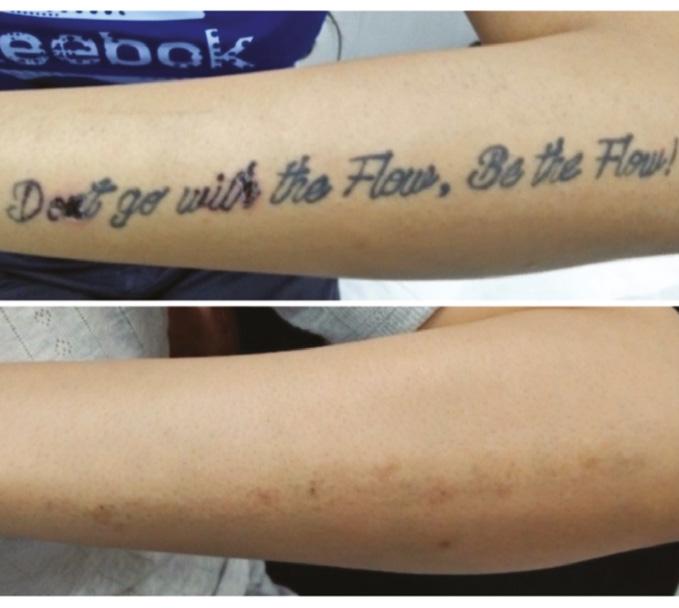
5. Leuenberger ML, Mulas MW, Hata TR, Goldman MP, Fitzpatrick RE, Grevelink JM. Comparison of the Q-switched alexandrite, Nd:YAG, and ruby lasers in treating blue-black tattoos. Dermatol Surg. 1999 Jan;25(1):10-4. doi: 10.1046/j.1524-4725.1999.08122.x. PMID: 9935085.
6. Semin Plast Surg. 2007 Aug; 21(3): 175–192. doi: 10.1055/s-2007991186 Lasers in Plastic Surgery, Guest Editor Ramsey F. Markus M.D. Laser Tattoo Removal Eric F. Bernstein, M.D.1
7. England R W, Vogel P, Hagan L. Immediate cutaneous hypersensitivity after treatment of tattoo with Nd:YAG laser: a case report and review of the literature. Ann Allergy Asthma Immunol. 2002;89:215–217. [PubMed] [Google Scholar]
8. Zemtsov A, Wilson L. CO2 laser treatment causes local tattoo allergic reaction to become generalized. Acta Derm Venereol. 1997;77:497. [PubMed] [Google Scholar]
@aestheticsgroup @aestheticsjournaluk Aesthetics aestheticsjournal.com Reproduced from Aesthetics | Volume 9/Issue 8 - July 2022
Selecting the best modality can be challenging because of the varying efficacies and adverse effects
AS THE STORIES THEY TELL CRAFT LIPS AS UNIQUE
BRING OUT THE INDIVIDUAL BEAUTY in every patient’s lips, so they can tell their own story — with Restylane KYSSE.

Adverse events should be reported. For the UK. Reporting forms and information can be found at www.mhra.gov.uk/yellowcard or search for Yellow Card in the Google Play or Apple App Store. For Ireland. Suspected adverse events can be reported via HPRA Pharmacovigilance, Website: www.hpra.ie; Adverse events should also be reported to Galderma (UK) Ltd, Email: medinfo.uk@galderma.com Tel: +44 (0) 300 3035674
Follow us on Instagram @Galderma.AestheticsUK Actual patient. Individual results may vary. Restylane and Galderma are registered trademarks. UKI-RES-2200212 DOP June 2022.
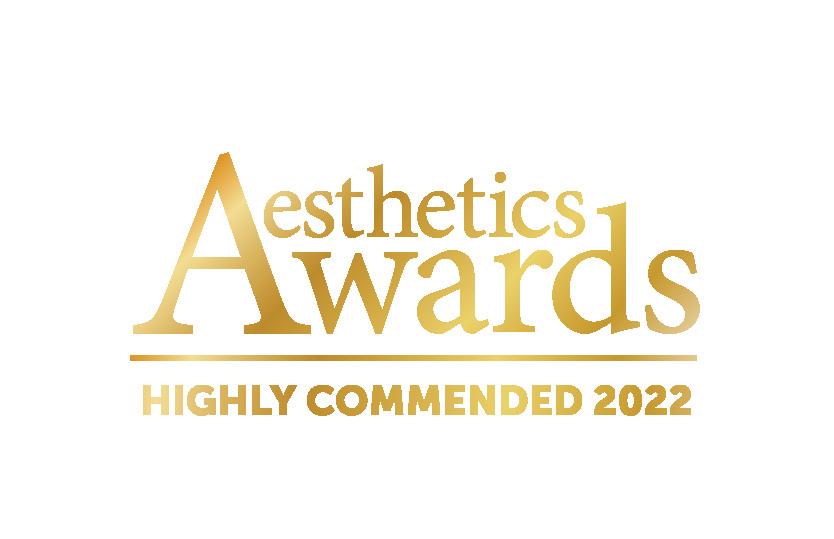
Cellular Ageing
This is no surprise, as reversing the ageing have led to a much deeper understanding of the ageing process and more importantly, have demonstrated unequivocal evidence that ageing is a modifiable process – just as it can be accelerated, it can also be This has resulted in the emergence of regenerative medicine which tackles ageing from its root cause and offers an unprecedented opportunity for the development of aesthetic therapies and procedures that offer true characteristics such as wrinkles and sagging skin. However, it is now known that many of these observable effects are ultimately driven by birth, biological age is the true age at which the cells and the body
Surprisingly, it has been found that the rate at which cells age isn’t
For example, a person may be 40 years old chronologically, but they could have a biological age that is closer to 50. This is because biological age not only reflects genetics, but also the accumulated effect of lifestyle
therefore a good measure of how well a person is ageing inside. This has led to the development of ‘biological age clocks’ which predict a person’s biological age. These work on the basis that older cells have
a pattern of genes and protein markers that are distinct to younger cells and the shift from a young to old pattern seems to happen in a predictable and measurable way.7
Biological age has been found to be associated with increased risk of developing almost every chronic disease and slowing ageing at the cellular level has emerged as a way to improve health span – the period of life spent in good health.8
The discrepancy between biological and chronological age highlighted to scientists that there was an opportunity to intervene at the cellular level to improve ageing and over the last decade multiple academic labs have now demonstrated that biological ageing is indeed reversible.3
What causes cellular ageing?

Scientifically, ageing is the loss of the body’s ability to repair and regenerate itself, resulting in the accumulation of damage. It is a biologically complex phenomenon, but scientists have identified that there are nine key cellular changes that underpin the cascade of events that lead to ageing. These cellular causes of ageing have now been well characterised and are collectively referred to within the research community as the ‘hallmarks of ageing’ (Figure 1).9
The identification of the hallmarks of ageing has allowed the cellular root causes of many common ageing conditions to be identified. A key example is skin ageing. This has traditionally been blamed on failures at the histological level such as a loss of collagen, elastin and a breakdown of the extracellular matrix (ECM), but it is now clear that these physical characteristics are the result of multiple underlying cellular hallmarks of ageing. For example, a key feature of skin ageing is genomic instability due to UV-induced DNA damage. This ultimately triggers other hallmarks of ageing, such as cellular senescence, which is characterised by cells entering a state of irreversible cell cycle arrest.10 Senescent cells have been found to accumulate in tissues with age where they interfere with normal tissue function. In skin, senescent fibroblasts and keratinocytes persist in the tissue and remain metabolically active, but they no longer produce collagen or elastin resulting in a dysfunctional support matrix and skin that is no longer capable of efficient damage repair.11,12 Senescent cells also secrete inflammatory factors such as matrix metalloproteinase-1 (MMP1),13,14 which promotes degradation of the ECM and leads to thinning of the epidermis.15
As well as genomic instability, cellular ageing is characterised by changes to DNA methylation patterns known as ‘epigenetic drift’. This alters gene expression patterns in the cell, with beneficial repair pathways tending to be turned off, whilst proinflammatory pathways become switched on, pushing cells from a younger to an older state.16
Mitochondrial dysfunction is another critical hallmark of ageing and is directly linked to an increase in damaging oxidative stress.17 Proteins such as collagen also become glycated to form advanced glycation end products (AGES) leading to dermal stiffness and decreased flexibility. In young cells, a recycling process known as ‘autophagy’ usually mediates the removal of AGES
aestheticsgroup @aestheticsjournaluk Aesthetics aestheticsjournal.com Reproduced from Aesthetics | Volume 9/Issue 8 - July 2022
Figure 1: The nine cellular changes which lead to ageing9 Altered intercellular communication Loss of proteostasis Deregulated nutrient sensing Stem cell exhaustion
Dr Nichola Conlon provides an introduction to what cellular ageing is and the benefits of it within


AESTHETICS EDUCATION POWERED BY ECADEMY 24/7 ACCESS TO WORLD OF EXPERT-LED AESTHETIC EDUCATION AT YOUR FINGERTIPS Search for Merz Aesthetics Ecademy today EXPLORE TODAY M-MA-UKI-1914 Date of Preparation February 2022. Developed and funded by Merz Aesthetics UK & Ireland. FOR HEALTHC ARE PROFESSIONALS ONLY SCAN ME
and other defective proteins, but the loss of protein homeostasis (proteostasis) in older cells leads to an accumulation of damage.18 Collectively, the manifestation of these hallmarks of ageing at the cellular level leads to the characteristic aesthetic changes associated with skin ageing.
Prevention of cellular ageing
This deeper understanding of the ageing process has led to an abundance of academic research with the hope of identifying new ways to slow cellular ageing.
Targeting cellular senescence has become a particular area of focus with scientists looking for ways to selectively remove senescent cells from tissues. So far, several drugs such as dasatanib and navitoclax and natural molecules such as quercetin and fisetin have been identified19 and these so called ‘senolytics’ have demonstrated positive results in early trials.20-24
Another area of promising research is cellular reprogramming. Up until a few years ago, it was thought that age-related epigenetic drift was irreversible, but it has been found that the cellular pattern of DNA methylation can be safely reset to a younger age.25 This demonstrates that cells never lose their youthful ability to repair and regenerate – it simply gets switched off. This novel concept involves reprogramming the epigenetics of old cells so youthful genes are switched back on, literally making the cell biologically younger. Another area of intense research surrounds the molecule nicotinamide adenine dinucleotide (NAD+). This is a natural cellular molecule that powers many vital reactions which regulate cellular health, including the generation of energy in the mitochondria and cellular adaptation to stress.26 Unfortunately, cellular NAD+ levels have been found to decline with age and this decline correlates with the onset of ageing.27 It is thought that low NAD+ contributes to ageing because NAD+ serves as the fuel for key families of enzymes that influence cellular repair and longevity such as the sirtuins (SIRTs).28
NAD+ has recently gained a lot of attention because it is a factor that simultaneously impacts all the hallmarks of ageing and scientists have demonstrated that boosting NAD+ levels in cells leads to multiple beneficial effects against ageing.29
Treatment options for cellular ageing
As the world’s population is getting older, addressing ageing at the cellular level is now critically important. Not only are more people looking for ways to combat the signs of ageing, but many aesthetic procedures rely on the healing and regenerative capacity of the skin which is known to decline with age. This means there is an exciting opportunity to translate these scientific findings into
aesthetic medicine. Senolytics and cellular reprogramming have huge potential and no doubt products and treatments incorporating these technologies will start to emerge. However, NAD+ restoration is already available to practitioners and is successfully leading the way to clinics, particularly in the US. This is because it has been found that cellular NAD+ levels can be restored simply with dietary supplements and a huge amount of peer-reviewed data has emerged demonstrating the benefits of NAD+ restoration.29-34
At a cellular level, these include better mitochondrial function, increased DNA damage repair, increased energy metabolism and activation of genes that are associated with healthy ageing.31 At a whole-body level, boosting NAD+ levels has been demonstrated to restore age-associated muscle loss, increase endurance and strength, increase neurogenesis, improve cognitive function, and improve markers of metabolic health, all of which positively impact healthspan.31
Furthermore, many non-surgical aesthetic procedures such as microneedling and laser technologies rely on the activation of cellular stress pathways to trigger the clearance of damaged cells and stimulate the production of collagen. Many of these pathways require adequate NAD+ levels for optimal function, meaning NAD+ restoration before and after treatment will help to ensure that cells are in optimal condition to both respond to and recover from aesthetic procedures. Interestingly, evidence is also emerging that increased NAD+ production may be the driver behind many of the health benefits of well-known healthy lifestyle choices such as exercising and fasting, both of which have been found to help maintain NAD+ levels, emphasising the importance of lifestyle alongside supplementation and treatments.35,36
A full body approach
This is an exciting new era for aesthetic medicine. The key differentiation between current treatments and cellular ageing treatments is that these have the potential to impact not only the aesthetic side of ageing, but the whole body. This allows for a more proactive focus on maintaining and enhancing health instead of just treating the negative consequences of ageing, meaning aesthetic medicine will not only be used to make people look younger, but also to feel younger.
Dr Nichola Conlon is a molecular biologist specialising in the study of cellular ageing. She is passionate about translating the latest science into products that slow biological ageing. After a career in drug development, she founded Nuchido Laboratories which is focused on delivering disruptive innovation in the field of antiageing, rejuvenation and health span.
Qual: BSc, MRes, PhD
Disclosure: Dr Nichola Conlon is chief executive officer and shareholder of Nuchido Ltd. and has filed patents on NAD+ boosting therapies.
TO VIEW THE REFERENCES GO ONLINE AT WWW.AESTHETICSJOURNAL.COM

@aestheticsgroup @aestheticsjournaluk Aesthetics aestheticsjournal.com Reproduced from Aesthetics | Volume 9/Issue 8 - July 2022
NAD+ has recently gained a lot of attention because it is a factor that simultaneously impacts all the hallmarks of ageing
Thunder MT
Revolution


Are you ready for the
EFFICACY, SPEED, POWER, VERSATILITY and PAIN FREE makes the Thunder MT unique in the world of Aesthetics


With Quanta propriety mixed technology combining both Alexandrite 755nm and Nd:YAG 1064nm in simultaneous or sequential mode overcomes single sources limitations at speeds that other platforms can only aspire to tel: 02920 231228 www.advancedestheticssolutions.co.uk @aesolutionsuk Hair Removal – all skin types Benign Pigmented Lesions Dermatological Vascular Lesions Collagen Remodelling Inammatory Acne Photo-Rejuvenation Dermatological Foot Conditions ● 755nm Alexandrite ● 1064nm Nd:YAG ● Wavelengths delivered in simultaneous, sequential or single mode ● Super elliptical spot shape and optimised gaussian beam prole ● Qool-air is an exclusive skin cooling system available for the Thunder Series ● Full body hair removal in 45 minutes Scan to watch the video
Targeting Pigmentation


With more than one million treatments performed and 100% patient satisfaction rate,1 PicoSure® has become a popular and trusted treatment worldwide. Now, Cynosure brings the industry an updated system which offers practitioners greater versatility and the chance to treat more patients per day.

What is the PicoSure® Pro?
PicoSure® is the first and only aesthetic picosecond laser for the safe and effective removal of tattoos and benign pigmented lesions, as well as acne scars, wrinkles and skin revitalisation treatments. Clinical data shows better clearance in fewer treatments. The PicoSure® Pro device delivers 755 nm energy in picoseconds; the delivery is so quick that it spares the skin from high thermal damage while optimally targeting unwanted pigment, wrinkles, acne scars and pores with less downtime than traditional lasers.
Its key features
are:
• 1 zoom handpiece (2-6mm) and 4 fixed handpieces (5, 6, 8, 10mm) with adjustable fluence for customisable treatments
• Platinum focus™ lens for unique skin revitalisation with no downtime
• Flat lens for treating unwanted pigment in all skin types
• Optional 532 nm and 1064 nm add-on for tattoo removal capabilities
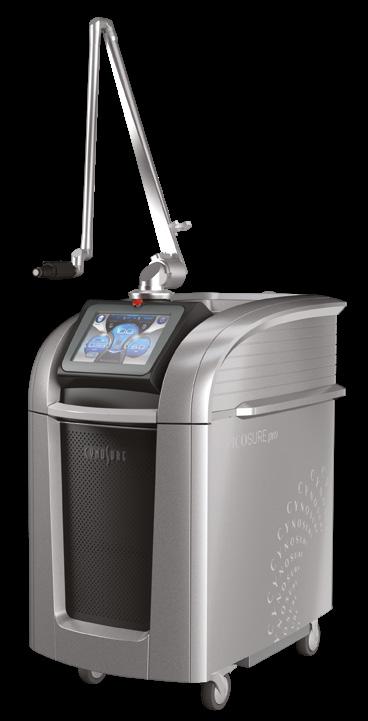

Additional enhancements include a sleek, modern design, intuitive graphic user interface and new 5mm handpiece for treating discrete lesions, lighter skin types and smaller areas.
Tackling pigmentation

The PicoSure® Pro features a flat lens, which effectively shatters unwanted pigment into tiny sand-like particles which are naturally absorbed and removed by the body and
clears epidermal and dermal pigment without harming the surrounding skin. It can remove unwanted pigment safely and effectively in all skin types; and it is the only picosecond device FDA-cleared to treat melasma pigment, nevus of Ota and Hori’s nevus. Most unwanted pigment will significantly lighten or clear in two to three sessions.

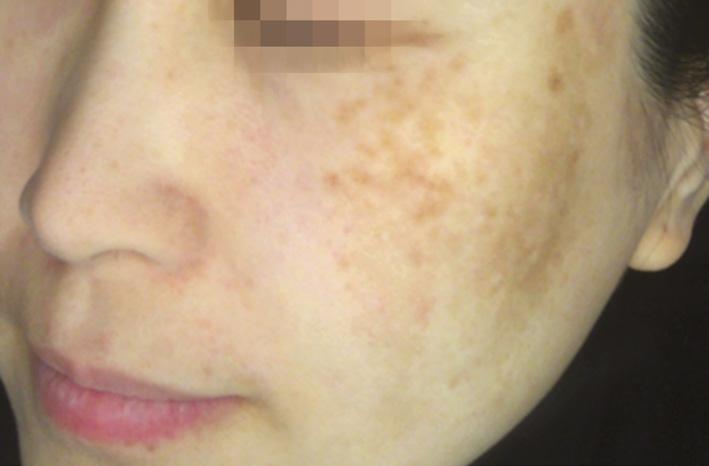
A lack of downtime
There is no downtime following the use of this device. Patients may experience erythema that typically resolves within a few hours, but in some cases, may linger up to 24 hours. Since each patient is unique, it is highly recommended to follow the outlined clinical guidelines to help optimise safety and efficacy before treatment.
Expert opinion
Dr Assif Hussein, dermatologist and owner of Dr H Consult clinic in London comments, “I’m proud to be one of the first practitioners in the UK to use the PicoSure® Pro device. The upgraded technology makes it even easier for me to effectively treat a variety of skin health and pigmentation concerns –with the added prestige of the FDA-cleared melasma indication, which affects a significant number of my patients. With PicoSure® Pro, I can achieve comparable treatment results to more aggressive lasers with less pain and no downtime, making it a true one-and-done device for a myriad of patient needs.”
Discover the new PicoSure® Pro device for tackling pigmentation Patient before and after treatment for pigmentation using the PicoSure® Pro Patient before and after treatment for melasma pigmentation using the PicoSure® Pro This article was sponsored and approved by Cynosure To find out more about the PicoSure® Pro head to www.cynosureuk.com or email
REFERENCES 1. Realself Rating as of May 2021 Before Before After After Aesthetics | July 2022 58 @aestheticsgroup @aestheticsjournaluk Aesthetics aestheticsjournal.com Advertorial Cynosure
fiona.comport@cynosure.com
A summary of the latest clinical studies
Title: Body Contouring Using a Combination of Pulsed Ultrasound and Unipolar Radiofrequency
Authors: Viruel Rotega E, et al.
Published: Aesthetic Plastic Surgery, June 2022
Keywords: Body Contouring, Non Focus Pulsed Ultrasound Abstract: To assess the efficacy and safety of a new non-invasive body contouring device in patients with localised fat in abdomen or in abdomen and hips. Additionally, we also evaluated the patient satisfaction with the procedure. The patients underwent four sessions, separated by one week each, with the Alma PrimeX, a non-invasive body contouring device that combines pulsed non-focus ultrasound and a Unipolar radiofrequency. The primary end point was the mean change in fat tissue thickness, assessed by diagnostic ultrasound, from baseline to three-months after the last treatment session. Fifteen subjects were evaluated. As compared to pre-treatment thickness, Hodges-Lehmann median difference was - 85.3 (- 107.5 to - 62.0) mm, p = 0.0001; - 70.3 (- 95.0 to - 48.5) mm, p = 0.0001; - 100.0 (- 140.5 to - 49.5) mm, p = 0.0039; and - 71.8 (- 132.5 to - 23.0) mm, p = 0.0078 in infraumbilical, supraumbilical, right hip, and left hip, respectively. Pretreatment fat volume was significantly reduced from 32.9% to 31.2%, p = 0.0006. The median (interquartile range) degree of patient satisfaction was 4.0 (1.0-5.0), with 13 patients being “Highly satisfied” or “Satisfied” with the treatment results. The most common adverse event was discomfort, followed by erythema. All the adverse events were mild and were successfully resolved without treatment.
Title: #CosmeticsTwitter: Predicting Public Interest in Non-surgical Cosmetic Procedures Using Twitter Data
Authors: Cohen S, et al.
Published: Aesthetic Surgery Journal, June 2022
Keywords: Twitter, Social Media, Trends Abstract: To determine the ability of the TARPT tool to track and predict public interest in non-surgical cosmetic procedures and to examine temporal public interest trends in nonsurgical cosmetic procedures. We used the TARPT tool to calculate the total number of tweets containing keywords related to 15 nonsurgical cosmetic procedures from 2010 to 2020. We obtained annual case volumes for each of the 15 procedures from annual reports provided by the American Society of Plastic Surgeons (ASPS). We used univariate linear regression to compare tweet volumes and procedure volumes, using P < 0.05 as a threshold for significance. Univariate linear regression revealed significant positive correlations between tweet volumes and ASPS procedure volumes for 10 search terms representing six nonsurgical cosmetic procedures: “xeomin”, “microdermabrasion”, “facial filler”, “fat filler”, “fat injections”, “fat transfer”, “hyaluronic acid filler”, “hyaluronic acid injection”, “HA filler”, and “PRP filler”. Thirtytwo search terms did not demonstrate a significant relationship, illustrating the importance of careful selection of search terms. Our analyses demonstrates that the TARPT tool is an informative data source for plastic surgeons, with the potential to guide marketing and advertising strategies and monitor real-time public interest in nonsurgical cosmetic procedures.
Title: A Novel Technique in Reducing Sebum Production and Improving Atrophic Acne Scars
Authors: Suwanchinda A, et al
Published: Journal of Cosmetic Dermatology, June 2022

Keywords: Facial Oiliness, Fractional Microneedling Radiofrequency Abstract: Fractional microneedling radiofrequency (FMR) has gained popularity for the treatment of acne scars, owing to favorable outcomes and short downtimes. This study aimed to investigate FMR use in reducing facial sebum production and treating acne scars. This single-center, prospective, evaluator-blinded trial compared sebum production after three sessions of FMR (Fractora® 24-pin coated tip) performed one-month apart. Results were evaluated with a sebumeter (Cutometer®, Germany), sebaceous gland histology, and subjects’ assessment. Acne scars were graded according to the Echelle d’Evaluation clinique des Cicatrices d’acné scale, Goodman and Baron’s qualitative grading system, acne scar volume measurement, and subjects’ assessments. Sebumeter results revealed a significantly decreased (P < 0.05) sebum production since the first treatment, sustained throughout the study period. Histological assessment showed decreased density and size of sebaceous glands. The mean acne scar volume decreased significantly, without a significant increase in the mean melanin levels. Fractora® 24-pin coated tip can be used as an alternative for patients with acne scars, who wish to concomitantly reduce their facial oiliness. A significant decrease in facial oiliness and acne scars› volume can be seen after a single treatment session, with up to 15.48% decrease in facial oil production.
Title: The Pharmacological Treatment And Management Of Hyperhidrosis

Authors: Campanati A, et al.
Published: Expert Opinion on Pharamcotherapy, June 2022
Keywords: Botulinum Toxin, Hyperhidrosis, Sweating
Abstract: Head Idiopathichyperhidrosis is a dysfunctional disorder involving eccrine sweat glands and its impact on patients’ daily quality of life is well-known. Unlike some years ago, when only poor effective and safe therapeutic alternatives were available, nowadays, several emerging pharmacological active substances have gained space as treatment options. The authors report on the emerging data from the literature focusing on the pharmacological treatments to draw up a drug treatments flow-chart for patients with idiopathic hyperhidrosis, taking into consideration specific differences among axillary, palmoplantar and craniofacial hyperhidrosis. Idiopathic hyperhidrosis, regardless of the site of involvement, remains a functional disorder that places a significant burden on patients. After balancing efficacy against adverse events, systemic therapy, although off-label for all forms of hyperhidrosis can represent an additive therapeutic option for patients with insufficient response to topical treatment according to a step wise therapeutic approach. Until the pathophysiological mechanisms underlying hyperhidrosis are clear, and the etiological therapeutic approach become realistic, the greatest challenge in the therapeutic management of hyperhidrotic patients seems to be the search for the most convenient combination between different therapeutic modalities to achieve long-term control of the disease symptoms.
@aestheticsgroup @aestheticsjournaluk Aesthetics aestheticsjournal.com Reproduced from Aesthetics | Volume 9/Issue 8 - July 2022








































PROVEN POWERFUL PROFITABLE CONTACT US FOR MORE INFORMATION OR TO BOOK A DEMONSTRATION T: 0845 689 1789 E: info@dermaluxled.com W: www.dermaluxled.com MEDICAL LED PHOTOTHERAPY. UNRIVALLED RESULTS
technique. In the UK there are currently 61 specialties in medicine that are recognised by the General Medical Council. Although, aesthetic medicine is not recognised, it’s something that is being pushed by associations and individuals in the field.2 A specialty, although important, would not be classed as a USP yet you could build upon a specialty to develop a USP.
In the aesthetics industry, a USP needs to be something that showcases to the patient the benefits of coming to you for a treatment over other practitioners or clinics. It could be that only you provide a particular technique or combination therapy that delivers an impressive clinical result, or that your clinic has a particular way of treating patients (perhaps a special aesthetic membership or ‘all-inclusive’ approach) that brings extra value to the patient. It could even be the type of work you do in aesthetics that supports a particular group or demographic.
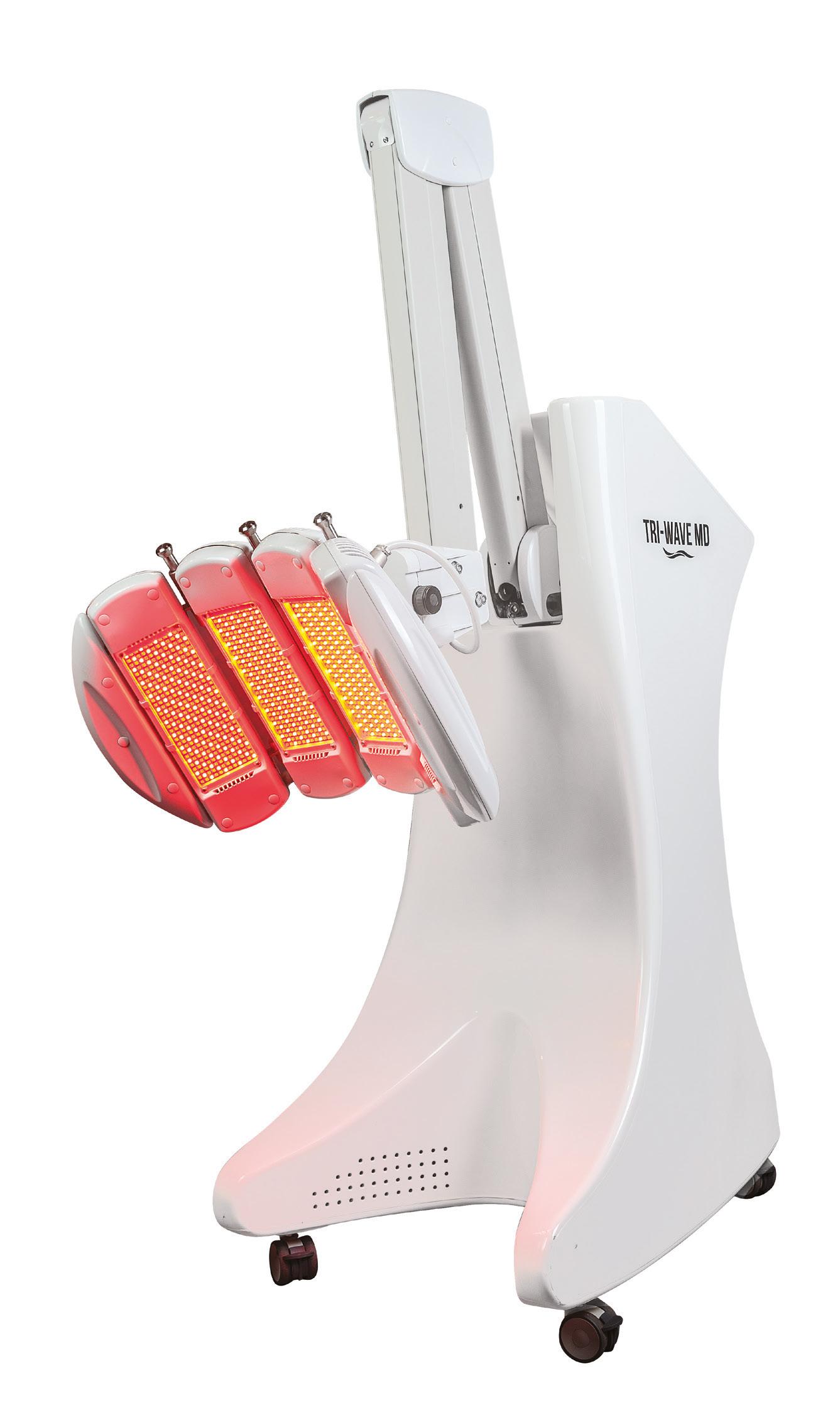

Why does it matter?
Developing a USP
A unique selling point, also known as a unique selling proposition (USP), can be a very effective way to drive business and raise your profile. Finding and developing your USP is key to growth and success. Sometimes it’s hard to find your voice and stand out in aesthetics and with so many similar treatments in common it can often be down to location, branding or patient preference that brings people through your door. Yet, there is another way to differentiate yourself in this crowded marketplace that will not only benefit you but will also benefit your patients and professional profile.
This article will identify what a USP is and how it compares to a specialty. Once the differences are clear and you understand why it is beneficial both professionally and personally to have one, this article will help you identify one or more that resonates with you.
USP or specialty?
A USP is something which makes you stand out from your competition, encourages people to want the benefits of what you offer or buy whatever it is you are selling. The term was first used in the 1960s in a book called Reality In Advertising by Rosser Reeves who worked for a TV advertising agency.1 He noticed that if he repeatedly focused on one specific feature or benefit of a product then consumers would soon think of that when they saw an advertisement for the product. It would effectively make the brands, product or item ‘stand out’ from the crowd.
A specialty is when you focus on a particular type of client or patient (for example peri-menopausal/menopausal women or patients who have undergone significant weight loss), a particular condition (such as acne, rosacea or hirsutism) or even a surgical or non-surgical
For patients researching practitioners and treatments it can all be very confusing. How do they know who to choose or what to look for? Why select one treatment over another? If every aesthetic clinic looks ‘the same’, it can be difficult to differentiate why they should go to you over another local clinic. Usually in this instance the prospect will often default to making a decision based on price, location or availability. Having a USP gives you something unique to promote online as well as being a talking point among people who are keen to share your specialty with friends, family and work colleagues. Another reason for developing a USP in aesthetics is to develop your professional profile, enhance your career and attract more attention. In the same way that clinics may seem very similar unless they have something unique or different that attracts attention, practitioners can sometimes seem similar too. What makes one injector turn heads? Why should one laser practitioner be deemed the go-to person in the industry over another if they’ve had the same training and use the same technology? Having a unique selling point that ‘solves a problem or meets a demand’ can bring your name to the ears of companies looking for their next key opinion leader (KOL) or speaker. The higher your profile and the more positive ‘noise’ you make in the industry the more likely companies looking to sell their technology or products will approach you with an attractive deal. After all, having their device or product in the clinic of a leading aesthetic name will bring them free ‘PR’ and also help them sell more devices or products by attracting enquiries from your peers.
Should the patient-facing USP be different to the industry-facing USP? Not necessarily. There is no reason why they cannot be the same. You may look at a slightly different way of promoting the benefits of your USP depending on your target market but often the USP remains the same. For example, if you have helped develop new techniques for threads and written a clinical paper you should promote this experience and knowledge within the industry, perhaps by writing articles for publication or speaking on stage as an industry expert. To attract more patients, you can state on your website and social media that you are a trailblazer in threads having developed new techniques that you now bring to your clinic to enhance results. However, if you are the kind of person who likes to have more than one USP, consider developing different ones for different audiences.
@aestheticsgroup @aestheticsjournaluk Aesthetics aestheticsjournal.com Reproduced from Aesthetics | Volume 9/Issue 8 - July 2022 Aesthetics | July 2022 61 aestheticsjournal.com Personal Branding USPs
£ £
Business consultant Vanessa Bird explains why a USP is important in aesthetics and how to identify and develop your own
The delicate eye area, needs the strongest expertise

MaiLi Precise, is our safest and effective HA formula yet. Created to help you refresh and rejuvenate the most tired of eyes with care, precision and most importantly confidence*.

This deluxe treatment harnesses the power of the world’s first OxiFreeTM HA technology and uses lidocaine to make your clients comfortable, so you can focus on your work and help turn back the clock.
Refresh with the power of MaiLi Precise.
®
MaiLi.com
Actual patient, individual results may vary. * The application of MaiLi Precise in the periorbital area is reserved to specialists specifically trained in this technique and having sound knowledge of the anatomy and physiology for this area CE mark CE2797. MaiLi devices are intended for correction of facial wrinkles or folds, for the definition or enhancement of the lips, and for the restoration or enhancement of the facial volume.
How do you identify and select a USP?
Who can help you identify a USP? You want to solve a problem or meet a need that is either not currently met or could be done differently. You can discuss it with people you trust and whose opinions you value; most likely friends and peers who understand the industry you work in. However, before you start asking others, look inwards. The easiest and quickest way to shortlist potential areas where you can develop your unique selling point is to put aside some time, sit down with a notebook and ask yourself the following questions:
What am I passionate about?
The reason we start with passion is because people work harder developing a passion, as mentioned in Forbes.3 If you want a USP it will take considerable investment in time, money and energy to increase your knowledge and develop your skillset. Feeling passionate about it will make this less like a chore and more enjoyable.
When answering this question think about whether there is particular type of treatment/technique you enjoy or a certain patient demographic you love working with. Perhaps it is the approach you have to doing business such as offering a patient a full concierge service to make them feel valued or giving back to the community with pro bono work.
Are you a specialist in anything?
If you are a specialist, you already have in-depth knowledge and expertise that you can build upon and refine to become your USP. For example, you might be on a board of experts or be a trainer for an injectables company. However, if you aren’t a specialist that’s ok, it just may take some time and a brainstorming session working on the points listed in this article.

Are
there any potential gaps in the market?
Aesthetic medicine is a constantly expanding industry with new products, technologies and techniques on display at every aesthetic conference globally. As we move towards areas such as regenerative aesthetic medicine, wellbeing, robotics and biohacking there may be greater opportunities to identify a USP that is less ‘competitive’ than others which means you are more likely to stand out. Attend conferences such as the Aesthetics Conference and Exhibition (ACE) in March or CCR in October and be open to where the future of aesthetic medicine is heading.
Would you need to invest in more training to get to the level you would need to be at to have this as a USP?
This is a more practical question. Will you have the time and money necessary to develop something into a USP? If you are already building on a passion or a specialty this may not be as important a question as you have already invested, but if you want to choose a USP based on a gap in the market, a particular business model or something you are less familiar with, take it into consideration.
What do you want to achieve from this?
It’s nice to have a USP and it gets you attention, but you need to break down exactly what you want to achieve from having a specific USP. Is it purely to attract more patients and grow your business or do you want it to help you develop your professional profile and reputation in the industry? Maybe you hope to open doors so you can collaborate with companies or peers, be on stage speaking at conferences or be offered KOL roles.
Developing your USP
Now that you have selected one or more USPs you will need to develop them and get the word out to your target audience. For example, if your USP is targeted at your patients, you might need to start by treating your team if it is a treatment or technique or introduce the process if it is a new way of doing business or caring for patients. They will be your ambassadors and will be able to give feedback on how you can fine-tune and improve the USP. After this, announce it in-clinic to your existing patients, sending out e-shots and newsletters, updating your blog and posting on social media. You need to deliver on a USP so ensure that the treatment protocols and/or the patient journey, aftercare or experience reflect this.
Build upon your USP
Further development can come from creating buzz and PR around it. Reach out to beauty and aesthetic editors, journalists, influencers and other specialists and invite them to try it so they can raise awareness by writing or vlogging about it. Submit articles to educational publications such as the Aesthetics journal so your peers can learn from you or submit your interest to speak at conferences such as ACE or CCR. Consider investing in a targeted marketing campaign or, if budget allows a PR agency who can showcase it. Most importantly, stay open to building on your USP in the future. Keep up-to-date with new trends, training and ensure you adapt your USP as and when necessary to stay unique.
Vanessa Bird is the founder of The Aesthetic Consultant. She has more than two decades of experience working in sales and selling capital equipment and now works with companies and practitioners to increase sales and grow their businesses.

REFERENCES
1. Reeves R, ‘Reality In Advertising’, Weidener Classics (2015)
2. Intelligence Unit Research GMC, ‘Specialities, sub-specialities and progression through training’, GMC document, (2011), p. 8, <https://www.gmc-uk.org/-/media/documents/specialties-subspecialtiesand-progression-through-training---the-international-perspective-45500662.pdf>
3. Gold E, ‘The Importance Of Passion As A Business Leader’, Forbes (2019) <https://www.forbes.com/ sites/theyec/2019/07/08/the-importance-of-passion-as-a-business-leader/?sh=909b5b921d1f>
@aestheticsjournaluk Aesthetics aestheticsjournal.com Reproduced from Aesthetics | Volume 9/Issue 8 - July 2022 Aesthetics | July 2022 63
@aestheticsjournaluk Aesthetics aestheticsjournal.com Personal Branding USPs
@aestheticsgroup
@aestheticsgroup
If you are the kind of person who likes to have more than one USP, consider developing different ones for different audiences
Introducing EMSCULPT NEO into Your Clinic
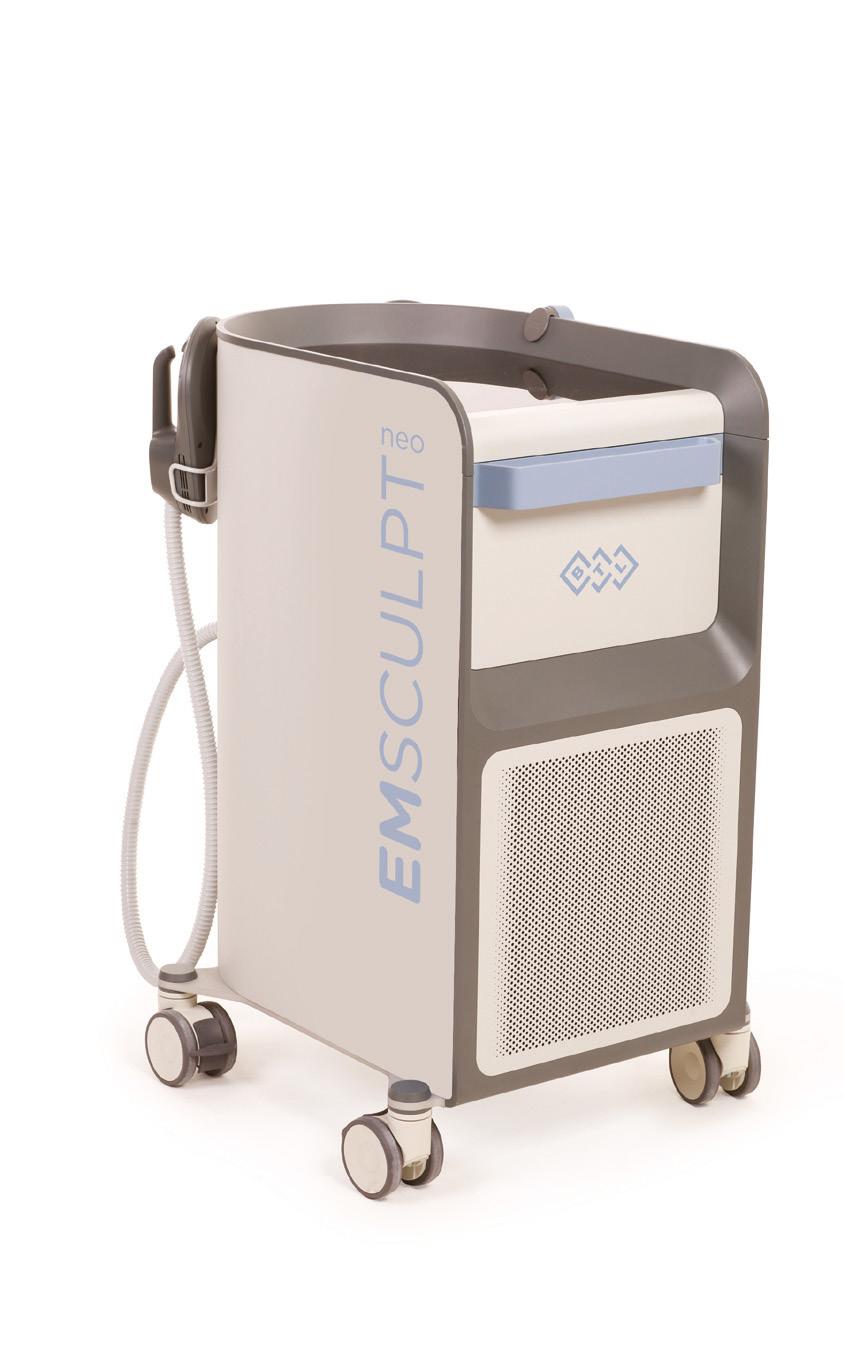
Dr Sabika Karim shares her reasons for adding the latest treatment to her clinic, the EMSCULPT NEO
Having worked in the industry for 15 years, I have witnessed the evolution in non-surgical aesthetics. Aesthetic treatments were once viewed as minimally invasive, meaning minimally effective, but we have come a long way. Our industry offers a real choice to patients now both as an adjunct to, or an alternative to, surgery. With investment into research and training, we have developed technologies and techniques that mean we can provide our patients with treatments they deserve and have learnt to demand that they are safe, comfortable, quick and have little or no downtime that provide substantial results. Moreover, it is not just about looking good, it’s about feeling great too, and now we can provide results that can’t be delivered in any other way.
Launching Skin Medical in June 2020 allowed me to create a clinic that is truly patient focused with an emphasis on patient education. Collaboratively we make informed, holistic treatment plans ensuring that every patient receives treatments that are perfect for them, well within their comfort zone to achieve their goals We provide only the gold standard to my patients by bringing together a team that ensures unparalleled customer service, my expertise and clinical knowledge with the latest evidence-based treatments and protocols combined with the utmost in safe practice. When I’m asked what I do for a living, my natural answer is ‘Give people their confidence back’. That’s why we treat the patient as a whole – it is not enough to just offer treatments for the face, as the faces I treat usually come attached to a body. Our holistic approach to patient care we can deliver unparalleled results.
Finding a new device
With all the developments in technology it is a thrilling time to be in medical aesthetics. Branching out from injectables or adding another device to the practice is exciting, but it can be confusing too. With a plethora of devices, it can be hard to choose what is right for your own practice. When evaluating a new technology, there are always important considerations. Is the technology tried and tested? Does it really work? Is it safe? Can it produce reproducible
results? Is it easy to use? Does it fit my practice? Is it the best possible device for carrying out its function? Who’s there to help if something goes wrong? Working closely with some of the industry’s leading companies, being a KOL and trainer, and having many years of experience treating the body with injectable lipolysis and fillers, ultrasound, cryolipolysis and radiofrequency, has meant that I have had the privilege to evaluate the best devices. At Skin Medical, we pride ourselves on providing only gold standard, evidencedbased treatments. We offer our patients a comprehensive variety of best-in-class body treatments, from injectables to energy based devices, and we were looking for a muscle stimulating and fat reduction technology at the same time. Therefore, it was only natural to incorporate EMSCULPT NEO.
What is EMSCULPT NEO?
EMSCULPT NEO is the first device to combine the patented HIFEM+ technology (for muscle building) and synchronised radiofrequency (for fat elimination). On average in just four 30-minute sessions, my patients can now increase their muscle by 25% and reduce subcutaneous adipose tissue by 30% in the treated area.1,2 I was impressed by the science and evidence behind the HIFEM technology, with 40 scientific publications and the years of research and development that have resulted in the creation of the EMSCULPT NEO that is FDA cleared and CE marked. It was the clear choice.
What sets the EMSCULPT NEO apart?
The technology (the geeky bit)
HIFEM+ technology produces thousands of electromagnetic pulses. The induced currents depolarise motor neurons that trigger muscle contractions. This leads to an induction of thousands of muscle contractions in a single 30-minute session. HIFEM+ energy induces supramaximal contractions at intensities that are not achievable during a voluntary workout.3
The synchronised radiofrequency acts in a double manner. Heating the muscles enhances blood supply, prepares muscles for exposure to stress and results in a significantly higher expression of heat shock proteins,
Aesthetics | July 2022 64 @aestheticsgroup @aestheticsjournaluk Aesthetics aestheticsjournal.com
My experience with the EMSCULPT NEO
Since introducing the EMSCULPT NEO to Skin Medical there have been an abundance of very happy (and toned) patients. My patients love that it feels like a proper workout in just half an hour, usually while watching Netflix, and the resounding feedback is that patients have been surprised at how quickly they feel a difference. With no discomfort, patients can get back to their normal routine and rather than having to wait 12 weeks to see the changes in adipose tissues, the changes in the muscles can be felt even after the first treatment. Patients tell me that they feel better before they look better. Improving muscle strength means that my patients can train harder and better (if they want to). EMSCULPT NEO has helped my patients with mummy tummy makeovers, core strengthening, improvement in posture, better bottoms and toned triceps for the reduction of flappy bingo wings. I’ve had patients who have had treatments for prehab and rehab to strengthen quads and hamstrings and patients alike who just wanted better biceps.
The EMSCULPT NEO fits my practice perfectly as it is suitable for nearly all my patients, whether they have active lifestyles or just want a little help with toning. It can enhance the muscle strength and contour of the body, for both men and women and help to give back body confidence. It meets my patient demands of a treatment that is comfortable, quick and has little or no downtime that provides substantial results. It gives them a benefit they wouldn’t be able to achieve without significant time investment and sweat equity.
Introducing the EMSCULPT NEO to my practice has widened the services we can offer our patients, but as ever it doesn’t end there. We want to be able to continue to offer best in-class treatments that meet our practice demand.

Dr Sabika Karim is the founder of Skin Medical Clinic and Training Academy, has garnered a global reputation as an innovative and highly skilled aesthetic doctor and thought leader. Through teaching and lecturing both at her clinic in the UK, and internationally she raises industry standards and has formed some of today’s best practises for treating the face and body.
which plays a crucial role in muscle hypertrophy.4,5 The RF also heats the subcutaneous fat to a temperature of 43-45oC – the levels required for permanent disruption of fat cells6,7 – and maintains this temperature by optimising radiofrequency emission based on impedance feedback, whilst safety is maintained by the skin temperature sensors.
Versatility
The EMSCULPT NEO can be used to condition and improve muscle strength with or without treatment of the subcutaneous
Not all products and indications may be licensed in your country. For more information contact your local representative. Results and patient experience may vary. As with any medical procedure, ask your doctor if the EMSCULPT NEO® procedure is right for you. In the EU, EMSCULPT NEO® is intended for the treatment of obesity by fat reduction through neuromuscular stimulation, radiofrequency-induced lipolysis and increase of blood flow, EMSELLA Chair Applicator is intended to provide pelvic floor muscle strengthening for treatment
fat in the treated area. With two sets of applicators, a wide variety of body areas can be treated including the abdomen, buttocks (glutes), front of thighs (quads), back of thighs (hamstrings), outer thighs (saddle bags), calves, biceps, triceps and even that really hard to treat area, the inner thighs.
The results
Studies showed that EMSCULPT NEO treatments increases the satellite cells (myogenic precursor cells, important for muscle development, for muscle regeneration) levels by 30.2% two weeks posttreatment8 and the effect is muscle growth to a level roughly equivalent to 12 to 16 weeks of resistance training programme.8
Multiple studies also showed a consistency in results, so I know I can deliver the treatment to my patients in confidence that the results will be reproducible.
If an average reduction of 30% in fat and 25% more muscle wasn’t enough, the clinical studies show that the four treatments on the EMSCULPT NEO can give a reduction in waist circumference of up to 5.9cm and an average reduction of 19% in abdominal separation.
Safety
The safety profile of the EMSCULPT NEO is unparalleled. It has a safety profile acceptable to both my team and my patients.
Continuing R&D
I was drawn to the EMSCULPT NEO as it is a device borne of years of research and development, clinical trials and testing. The research and development does not stop there though, and I’m looking forward to the innovations that device has to offer in the future.
The manufacturer
BTL, the manufacturer of EMSCULPT NEO, is an aesthetic focused company with a history of many years of development of muscle stimulating technology and radiofrequency technologies. The technology they have developed has become one of my favourites, but it’s not just about the device. It’s about the people we work with. The BTL team are knowledgeable, supportive and best of all, I know they’ll pick up the phone anytime.
This advertorial was written and supplied by BTL.
of urinary incontinence in male and female patients ©2022 BTL Group of Companies. All rights reserved. BTL and EMSCULPT NEO® is/are registered trademarks in the United States of America, the European Union, and/ or other countries. The products, the methods of manufacture or the use may be subject to one or more U.S. or foreign patents or pending applications. Trademarks EMSCULPT, EMSCULPT NEO, EMSELLA, EMTONE, EMBODY, EMFEMME 360, and HIFEM are parts of EM™ Family of products. *References: Aesthetics journal online.
Aesthetics | July 2022 65 @aestheticsgroup @aestheticsjournaluk Aesthetics aestheticsjournal.com Advertorial BTL Aesthetics




Understanding Cyber Security
Cyber security specialist Anthony Green discusses why the aesthetic sector is a prime target for cyber criminals, and what to do if your practice becomes a victim of attack
Across the world, cybercrime is one of the greatest threats facing companies of all sizes, and businesses in the medical and aesthetics industry are especially vulnerable. From November 2020 to January 2021, cyber-attacks against the healthcare sector increased by 45% worldwide, compared to the 22% increase seen by other industries over the same period, and attacks remain high for the first quarter of 2022.1
In this article I discuss the specific challenges facing the aesthetics sector, how to protect your practice from attack, and what to do if you get hacked.

Why is the aesthetics sector so vulnerable?
Ultimately, hackers are after sensitive data which they can use for financial gain. One reason why aesthetic practices, and healthcare settings in general, are at such a high risk of attack is because medical data is extremely valuable on the dark web. According to a recent Trustwave Global Security report, the black-market value of one patient’s medical records stands at an average of US $250, but they can sell for as much as US $1,000.2
The 2021 UK government cyber security review identified healthcare as second only to the finance sector in being the most likely to hold personal data about customers. The amount of personal data they hold, and its high value, means that medical practices are particularly vulnerable to ‘theft or loss’ breaches – where data cannot be recovered. In fact, the percentage of breaches classed as ‘theft’ or ‘loss’ was 32% in the healthcare industry, and only 15% in other industries.3
With this in mind, it is crucial for the aesthetic industry to prioritise cyber resilience and know what to do if the worst does happen.
Strengthening the cyber security of your practice
Can your cyber security strategy be summed up with the phrase ‘ignorance is bliss’? If so, then you’re probably leaving the door wide open for hackers. To protect your patients’ data, it’s important that you take action.
Only allow necessary access
Restrict system access to only those who need it and ensure that all access is secured. Delete any inactive accounts, such as those belonging to past employees, and implement strong
multi-factor authentication to all administrative accounts. Make sure that employees with access to medical records are well-trained in the privacy regulations around sensitive data, as outlined by the UK General Data Protection Regulation (UK GDPR).4 A good place to start is the UK Information Commissioner’s Office website, which has useful guidance for organisations regarding GDPR data protection laws.
Get Cyber Essentials certified
The National Cyber Security Centre (NCSC) is a great resource for any business looking to boost their system’s security. Aesthetic businesses, being more vulnerable to attack, should look to get Cyber Essentials certification from the NCSC. This entails an organisation assessing themselves against five basic security controls. A qualified assessor will then verify the information provided (the NCSC recommends using a qualified assessor from their partner, the IASME consortium).5 The process will strengthen your protection from the most common attacks – this is crucial because vulnerability to a basic attack can mark you out as an easy target for more in-depth breaches.
Protect your devices
Ideally, you should not allow anyone to access patient data on personal devices, and only allow secured devices to connect to the network. Steps to securing your devices include installing new system updates as soon as possible – old software is easier to exploit, so using it can make you a target for hackers. You also need to make sure that all your devices have been tested and patched (the process of repairing security holes in your device software).
Practise password security
Disable frequent password updates because these encourage employees to save their passwords on your system or write them down. The NCSC guidance also recommends disabling password complexity requirements which encourage password re-use, and instead use three random words, such as jamplaytree or blushwaterphone.6
Protect against phishing
Phishing emails are by far the most common form of attempted attack. According to the UK government, 83% of UK businesses experience a scam email attempt every week.7 Take advantage of the NCSC’s free cyber security training which has a useful
@aestheticsgroup @aestheticsjournaluk Aesthetics aestheticsjournal.com Reproduced from Aesthetics | Volume 9/Issue 8 - July 2022 Aesthetics | July 2022 67 aestheticsjournal.com Technology Cyber Security

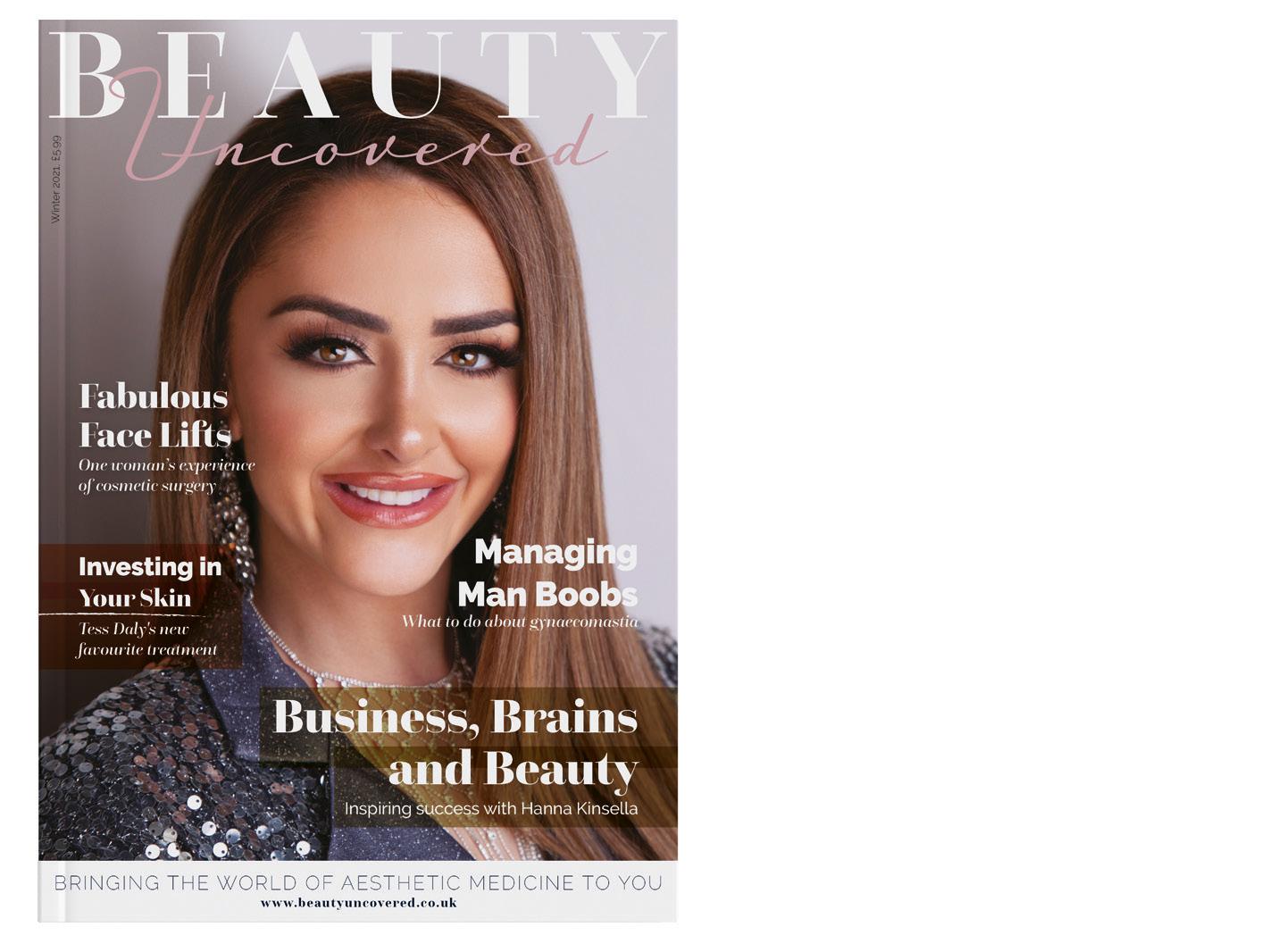
NEW REVENUE STREAM FOR YOUR CLINIC Are you a clinic or practitioner interested in stocking your practice with a higher volume of copies at a trade discount? DISCOVER MORE TRADE PASSWORD 4429 www.beautyuncovered.com @beautyuncovered_uk
module on spotting and reporting phishing emails – remember that employees are the first line of defence against phishing attempts. It’s also important to instil a ‘no blame’ culture to encourage employees to report when they suspect they have clicked on a phishing email.5
Review what you’re showing the internet
It’s essential to review all your internet-facing data, as you might be displaying more than you realise. Get a low-cost or free attack surface map, which will analyse your system for security loopholes and discover what you have exposed to the internet. You should also get a cyber security expert to conduct vulnerability scanning on your internet-connected services and patch any vulnerabilities.
Secure your third-party software
Check that any third-party software such as browsers, cloud-based services and medical practice management software are patched. Make sure your firewall, endpoint security and anti-virus software are properly installed and correctly configured – if it’s configured incorrectly then you may not be protected. Most cyber security firms will be able to configure this software for you at a low cost.
What to do if the worst happens
Implementing the right cyber security measures will dramatically decrease your risk of falling victim to attack, but hackers are agile, and your practice can never be completely immune to the risk of attack. However, you can make sure that you react in the right way and rectify the situation if the worst should occur.
Stay calm
Whether you’ve been immersed in a full-blown attack, or you’ve discovered a suspected breach to your system, it’s important to try and stay calm. It’s easy to panic, particularly if an attack is in progress and you don’t know where the disruption is coming from. Developing a documented incident response plan can help you remain rational and take the right steps to mitigate the repercussions of an attack. Take a look at the NCSC’s guidance on cyber security response plans for advice.8 A good incident response plan will outline key cyber security contacts, which staff members have the authority to make decisions, how employees will communicate if normal systems are down, and what will happen if the attack takes place out of practice opening hours.8
Don’t shut down your system
This is a typical panic response, and it might be tempting to shut everything down. Unfortunately, if an attack is underway, you should assume that the hacker has already gathered much of the information they were looking for. By unplugging your system or deleting malicious files, you could be destroying evidence that will be key to discovering what patient information has been taken, and how your system was breached. It’s far better to leave your system be and call an expert straight away.
Call an expert
This is the most important step to take in the event of a hack. If you have never used a cyber security consultancy firm before, then you need to conduct a search for a security expert as a matter of urgency. To avoid this scenario, it is highly advisable for aesthetic practitioners to find a trusted cyber security partner before a breach occurs. Having an expert on hand who is familiar with your system means that if the worst does happen, they will be able to act immediately to help you contain and analyse the attack. They can also help you discover the facts and take the right actions in the event of a ransomware demand.
Keep a record of events
As soon as you realise your system has been attacked, keep a record of every subsequent action taken – such as who has touched the system, and when. This log will help you to keep track of your system and become a valuable resource for post-breach analysis. It will also help your practice’s case in the event of any legal action.
Be honest with your clients and patients
Most clinic owners will worry about the reputational damage of disclosing a breach of sensitive data to their patients. But if personal medical data is out there, your patients not only deserve to be notified, but you could face legal action if you fail to do so. Once you have called in an expert, they will work to understand the scope of the attack, close the security holes that have caused a problem and review your compromised files. If the breach contained any personal information then, by law, this must be reported to the Information Commissioner’s Office (ICO) within 72 hours. Failing to do so can lead to a fine of up to £8.7 million or 2% of your global turnover.9 Once you have notified the ICO, you should reach out directly to the people affected via
email, letting them know what data has been breached and offering a point of contact in your company where they can make any queries. You should also make a formal announcement to the press – either in the trade media, or wider, depending on the size of your business and the scale of the attack.
Rebuild
After an attack, it is essential to put your entire system through an extended security assessment by a third-party cyber security specialist. This can identify and fix any other vulnerabilities in your system to help protect your clinic from a repeat incident.
Be prepared
It’s important to make a plan to prevent your practice from any cyber security breaches and put it into action. Be methodical as you begin layering your security measures and remember that every bit will make a difference. The UK Government’s 2021 cyber security review found only 15% of all businesses have conducted an audit of their cyber security vulnerabilities, and only 31% have a business continuity plan that covers cyber security.10 While cyber-attacks are certainly a threat to healthcare and aesthetic clinics, there is lots of scope for clinic owners to take control, become cyber aware and build cyber resilience. Doing so will protect not only your patient’s data, but the success of your business.
Anthony Green is a security analyst and thought leader in cyber security. He has designed and implemented some of the most secure systems in the UK, including global corporations, the UK government and a variety of small to medium enterprises. His career has spanned software development, infrastructure, technical leadership and security. He is a founder of FoxTech.
Disclosure: Anthony Green is a founder of cyber security consultancy firm FoxTech.


Aesthetics
Reproduced from Aesthetics | Volume 9/Issue 8 - July 2022 Aesthetics | July 2022 69
@aestheticsjournaluk Aesthetics aestheticsjournal.com Technology Cyber Security
@aestheticsgroup @aestheticsjournaluk
aestheticsjournal.com
@aestheticsgroup
VIEW THE REFERENCES ONLINE! AESTHETICSJOURNAL.COM
Making Your Awards Entry Shine
Tried and tested tips from Aesthetics Awards Winners to help you on your way to success

You’re sitting with your fabulous team in a dazzling ballroom amongst your peers who are the best of the best in your industry. There is a stage nearby, with a host who has been recognising excellence in aesthetics all evening. Finally, your category comes up. It’s taken a lot of time and effort to put this application together and you have your fingers and toes crossed that you gain some kind of recognition from the judges. Then, suddenly, your name is announced as an Aesthetics Awards Winner in front of hundreds of those you respect most in your field! It feels overwhelming – all that hard work you’ve done in the past year to push best practice has paid off. Let’s be real, it feels great being a winner!
With The Aesthetics Awards 2023 entry opening this month, we speak to some of our 2022 Winners about how they felt to win this year and their advice to others who are eager to embark on this journey.
areas to help improve services and the patient journey. Alongside this, if you are lucky enough to be shortlisted or win an Award on the night, it will inevitably elevate trust and creditability among your peers, patients and partners and excel your brand.”
What’s it like being an Aesthetics Award Finalist?
Firstly, let’s remember that not everyone can be the Winner or receive commendations. However, with hundreds of entries, even being shortlisted is a huge achievement! Dr Bawa says, “I was excited to enter The Aesthetics Awards as they are extremely prestigious and are huge in our industry! With so many fantastic Finalists, just being there with my colleagues was an honour. Also, being a Finalist certainly helped with our business, because it provided our patients with reassurance that we are doing things to the best of our ability, and getting recognition for it.”


Scott also remembers the positive impact on her business. “I felt like being a Finalist was something tangible that my patients could see sets me apart as a practitioner. I was able to put it on my website and social media, and as I was preparing for the Awards, my patients got really excited for me. One of my lovely patients even lent me the earrings I wore to the ceremony! All my team also got involved and they were so happy for me as well so it didn’t just make me feel positive, but it gave a sense of optimism and achievement to my entire team.”
How does winning an Aesthetics Award feel?
Why enter awards ceremonies?
The glitz and glamour of an awards ceremony is a brilliant opportunity to celebrate you and your team’s successes, however there are so many other reasons you might want to consider entering. “As a clinic that is striving for continual improvement, it’s important to reflect back and recognise the achievements of the business and its hard working and dedicated staff,” highlights Dr Syed.
She adds that it’s another form of an appraisal that provides the opportunity for establishing a reputable brand. She says, “Participating in the Aesthetics Awards enabled the clinic to celebrate and appraise its achievements, knowing that these are benchmarked against other reputable and well-established clinics and practitioners. Entering also enabled the business to measure its goals and purpose and celebrate accomplishments. Importantly, it also helps identify future opportunities and development
“Words really can’t express what it feels like to win,” reflects Dr Bawa, “When my name was announced, there were so many thoughts and feelings all at once! It took a few seconds to sink in, then a rush of exhilaration and shock came in! I was so honoured and humbled to win such a prestigious Award.”
According to Scott, it was incredible and humbling to win. “I’d be lying if I told you I didn’t shed a tear!” she laughs, “I’ve been a nurse for 30 years and have been in the aesthetics industry for 20, so to feel recognised after all these years of treating patients means more than you can imagine.”
@aestheticsgroup @aestheticsjournaluk Aesthetics aestheticsjournal.com Reproduced from Aesthetics | Volume 9/Issue 8 - July 2022 Aesthetics | July 2022 70 @aestheticsgroup @aestheticsjournaluk Aesthetics Business Development Awards Entry
Dr Manav Bawa, winner of The AlumierMD Award for Rising Star of the Year
Julie Scott, winner of The SpringPharm Award for Aesthetic Nurse Practitioner of the Year
Dr Sobia Syed, winner of The AestheticSource Award for Best Clinic North England and The Croma Award for Reception Team of the Year
A.W.A.R.D winning entry tips
Applicable categories
“There are multiple categories to enter, but do not try to enter too many,” suggests Dr Syed, adding that you should find the categories that are applicable to you, and prioritise quality over quantity. “Instead, focus on the category that you genuinely think is suited to your successes and accomplishments where you can feel that you can raise the judges’ attention.”
Scott used her network to help with this, “I decided to ask colleagues why they felt I should enter this Award,” she says, explaining that this helped her establish her USPs and that the category was right for her. Dr Bawa adds, “You should tailor your submission to the Award you are applying for, rather than a generic entry, and be passionate about it.” Once you’ve chosen your categories, start planning what you would like to include and gather the required information – this takes time!
Write concisely with evidence
Everything you say in your entry should have a purpose. Dr Syed says, “Make your entry interesting, fun and well structured! Don’t do a dull sales pitch on why you should win the Award, but tell a story that is factual, easy to read and provide examples of your successes.” Scott reiterates that having proof of your success is integral. “The most important thing is that if you state something, provide evidence to back it up! Saying it isn’t enough,” she explains. Examples of good evidence includes: client/ patient satisfaction surveys, percentage increases for growing patient numbers and business revenue, and new treatments added to your portfolio. Year-on-year data and how this has progressed over time always impresses the judges!
Answer the question
This might sound obvious, but many entries fall short because they don’t follow this simple tip. Dr Syed says, “It’s not uncommon to start waffling about things that we want the judges to hear, but we forget to answer the basic question that is being asked. Focus on the question and don’t go off topic. You are unlikely to get any additional marks.” Remember that there is always a word count to consider, so try using formatting functions like bullet points to allow for an easy-to-digest format and to help you stick to your word count!
Read your entry thoroughly
All Winners stress the importance of checking and triple checking your entry – an insider’s secret is that Aesthetics Awards judges have been known to deduct points for poor spelling and grammar! “Make sure your punctuation and spelling are correct. I find it’s useful to write your draft and leave it for a few days so that you can return to it later as you’re more likely to spot mistakes. I also like to print it out and read it on paper too, as I find it’s easier than on a screen,” says Dr Bawa. One of Scott’s top tips is to ask for help, and get someone else to read the entry. “I get my colleagues to proof-read the document to make sure it is the best it could be. This isn’t just for spelling and grammar, but to look at the overall tone of my entry and how it would come across to the judges.”
Determine who’s assessing your entry
Remember to think about the people reading your entry. Consider who the judges might be and what they would find interesting and engaging. The judges are experts in your field, but are also real people who don’t want to spend hours reading something dull, waffly, or poorly worded.
Scott, who is an Aesthetics Awards judge for
categories that she is not applicable to enter, advises, “As a judge, I felt the best entries were the ones where I could sense the passion for the industry through whoever was writing the entry. I would recommend adding a personal touch to an entry if relevant. For example, it’s great to see a percentage of growth, but I want to know what that means to you and your patients! I’d also recommend making sure your entry has continuity throughout.”
Well worth the effort
Entering awards ceremonies can be a lot of work and effort, and not everyone is shortlisted as a Finalist. However, Dr Syed reminds you to remain positive and optimistic. She adds, “Taking the time to construct an awards entry, in itself, can be a very rewarding task, once completed. Use this as an opportunity to appraise your business and your achievements, as you probably wouldn’t do it otherwise! It will also help you identify developmental areas and allow you to plan your business goals or refine your objectives.” So, what are you waiting for?
Entry for the Aesthetics Awards 2023 is open from July 31 to September 30. Entry is free for Aesthetics journal members, which costs as little as £60 per year. Scan the QR code for more info!
Advice from our editor
As someone who has read countless entries and worked closely with The Aesthetics Awards expert judging panel of more than 60 judges, here’s what else you should consider…
1. Don’t leave it to the last minute – writing a submission takes longer than you think. Save yourself the stress and get your entry in early.
2. Consider your supplementary materials – do not just include this for the sake of it. They should be relevant to your entry, and remember you can also include videos and images, which can help you stand out.
3. Take good before and after imagery – judges constantly critique the quality of before and after images. Make sure you take images of your results with consistent parameters – lightings, angle, patient expression – to showcase your fabulous results.
4. Ask for help – use those around you for ideas, to check your entry and if it’s all too stressful for you, you can hire someone to help you, like a PR, marketing expert or even a company dedicated to entering awards ceremonies
5. Reflect upon previous years – it’s almost impossible to write a perfect entry! Remember to ask the awards provider for constructive feedback to improve your future applications.

@aestheticsgroup @aestheticsjournaluk Aesthetics aestheticsjournal.com Reproduced from Aesthetics | Volume 9/Issue 8 - July 2022 Aesthetics | July 2022 71 aestheticsjournal.com Business Development Awards Entry
Shannon Kilgariff



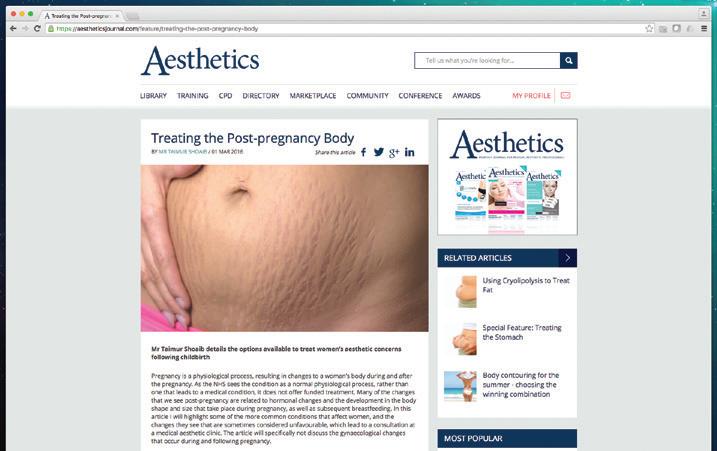
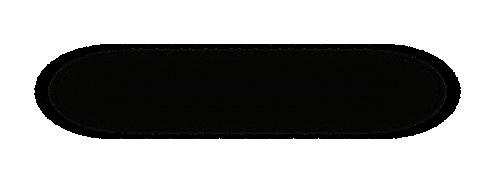

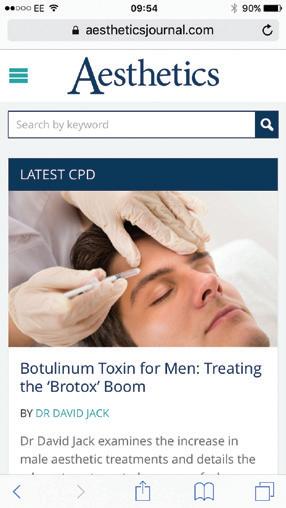
AESTHETICSJOURNAL.COM Keep up-to-date with the latest aesthetic developments and best practice guidance on your desktop, tablet or phone AESTHETICSJOURNAL.COM @aestheticsjournaluk Aesthetics @aestheticsgroup
With three clinics in the UK, Dr Munir Somji discovered his interest in aesthetics whilst training across the globe.
In 2012, Dr Somji became intrigued by aesthetics whilst completing his surgical training in the NHS at King’s College London. During his training, he became interested in hair restoration and travelled to the US to learn more. He reflects, “I coupled my training by using my annual leave and weekends to travel abroad to shadow and educate myself as there was no formal hair restoration pathway in the UK during this time.”
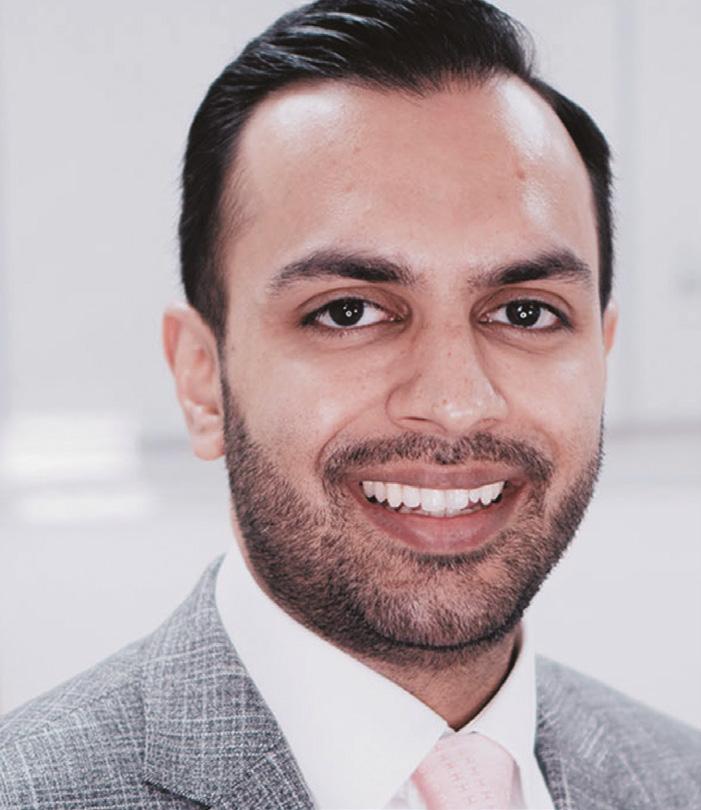
Whilst in the US, he discovered aesthetic medicine and began to take an avid interest. “In the US, it is common for hair restoration to be a part of an aesthetic clinic, so I began to train in aesthetics in Beverly Hills and Toronto with Dr Jones to get certification. I also went to Korea to train in PDO threads, which is known as the thread capital of the world. My ethos was that I wanted to train in places which are known to be the best for each procedure and bring this to the UK!”
Dr Somji adds.
In 2014, Dr Somji finished his training and later became a full member of the International Society of Hair Restoration Surgery (ISHRS). In the same year, he launched his clinic Dr MediSpa in Harley Street which specialises in non-surgical, surgical and skin treatments. Dr MediSpa clinic expanded in 2015 to Essex and in 2019 upsized the Harley Street practice to Chiltern Street in London. In 2021 the flagship location in Knightsbridge was opened. Dr Somji explains, “I established the clinic as I wanted full autonomy and to do things in a different way. I wanted my clinic to be a bright, comfortable place for patients to come to discuss their concerns. At the clinic, we focus mainly on skin, but hair is also important
for many patients. As I predominantly treat women, I’ve almost stumbled on becoming a female hair restoration specialist which involves feminising hairlines, making hairlines neater and more appealing and doing eyebrow transplants, as well as hair transplants for men.”
Dr Somji completed a post-graduate certification in clinical education in 2012 at King’s College London. “Having three clinics with more than 30 staff members means we have to be able to teach and talk about treatment protocols. Although we are known for skin, it’s about the whole package. We have other specialists within the clinics for surgical aspects, but I would love to have a clinic with many specialists who treat a variety of different concerns, so we have a broader outcome for our patients,” adds Dr Somji.
Throughout his career thus far, Dr Somji has become a key opinion leader (KOL) for many companies including Alma Lasers, Dermapen, Galderma and InMode. He reflects, “As my background in medicine is mixed, it leads well into KOL roles. I have had media training,
which I found extremely useful because I am able to confidently speak on different platforms including TV which is great for patient education on aesthetics. I enjoy working with evidence-based brands such as Galderma where I’ve worked on clinical papers for the efficacy of the treatments. It’s a privilege to be able to speak at global conferences for these brands which I have done recently at Beauty Uncovered LIVE in May and IMCAS in June. I think this is a great opportunity to share your knowledge but also utilise this time to speak with other medical professionals in similar positions and learn from them too. This is where I learn the most!” Reflecting on his career so far, Dr Somji believes that restoring lost confidence in patients and helping them has been his biggest achievement. He notes, “We’ve won many awards for the clinic, and I’ve won personal accolades, but this isn’t why we do it. Personally, the achievements are coming home and feeling like I’ve made a difference. I have three clinics so technically I don’t need to see any patients, but I do it because I love the job and it’s the positive psychological feeling patients have when they feel good and confident in themselves which is the biggest reward.”
Favourite treatment to perform…
The overall assessment of the face. Looking at a patient’s skin and creating a bespoke treatment plan.
Industry pet hate…
I don’t think practitioners speak to each other enough. We need to be more collaborative and stronger as a specialty.
Something I would change…
I reflect on past experiences and don’t dwell in the past; I look to the future and build!
Giving his own advice to people looking to get into aesthetics, Dr Somji notes that training and continual learning is pivotal. “Aesthetics is a fast-moving and evolving industry and protocols can be dropped below gold standard if the correct training and learning is not sought. I also think it’s important to look at medical literature objectively as there is lots of new technology and some isn’t necessarily better than previous treatments, so being able to go through and discover this is essential,” he concludes.
@aestheticsgroup @aestheticsjournaluk Aesthetics aestheticsjournal.com Reproduced from Aesthetics | Volume 9/Issue 8 - July 2022 Aesthetics | July 2022 73 aestheticsjournal.com In Profile Dr Munir Somji
“Speak with other medical professionals in similar positions and learn from them”
Dr Munir Somji reflects on his career thus far and explains his global key opinion leader role
The Last Word
Since I embarked on my aesthetics journey, I have always followed a strict process in the lead up to injecting a patient. This process includes understanding my patients’ wishes, taking a full medical, aesthetic, and social history, taking photos, discussing treatment options, including the risks, benefits, and complications, compiling a treatment plan, and gaining informed consent. For each procedure, I cleanse and disinfect the skin and there is one more important step –marking up. Although this is something that I learnt in my initial training, I have continued this throughout my career. However, I have noticed that not all practitioners implement it as part of their procedure. This article will go through what I believe to be the pros and cons of marking up, so that you can consider the best approach for both you and your patients.
The pros
When carrying out treatment, you need to respect your patients’ individual anatomy to ensure each face is treated with a bespoke approach. Marking up, using typically a white pencil, with the patient sat upright, benefits safety by highlighting patients’ anatomical topography, asymmetries, safe and no-go zones. For example, when marking up for neurotoxin injections, it is important to know the function, position, origin, insertion, innervation, and blood supply of the facial muscles and therefore where to place the injection. The markings can therefore act as an aide mémoire for precisely planned injections. The markings can be varied, for example using different colours to denote depth of injection. This strategic planning prior to injecting can help prevent an undesirable result for your patient such as a brow drop/eyelid ptosis and ensures the treatment is tailor made. In my experience, I’ve also found that marking up can make my patients feel more comfortable. If I am treating someone who is particularly anxious, or hasn’t had treatment before, it can be reassuring that the first time I am touching their face after disinfection isn’t to place an injection but is in fact to mark them up. This seems to calm patients as they can see I am taking the time to consider them individually and prescriptively plan their treatment. Often, I will show them areas of asymmetry in the mirror and highlight this by marking it on their face. My patients appreciate that I do not use a ‘cookie cutter’
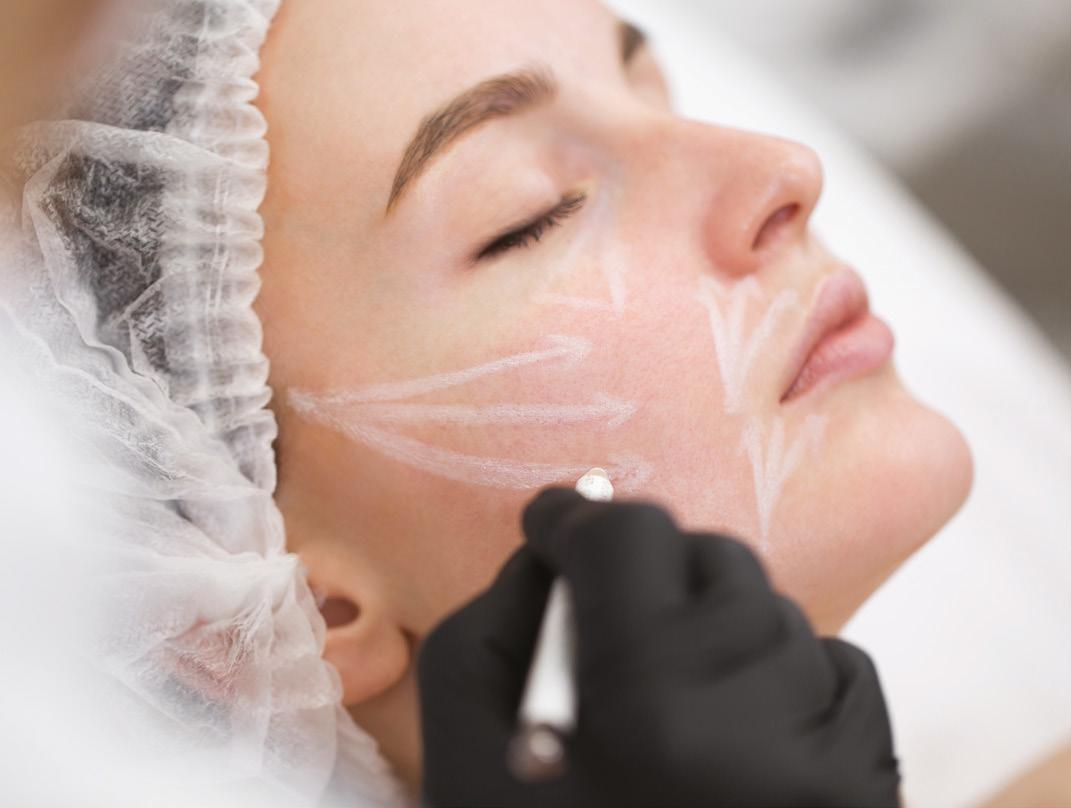
approach and this is a great way for them to see it in action. So, while it is beneficial for you as a practitioner in planning treatment, it can also help in reducing your patient’s anxiety.
I often take photos of the areas that I have marked up too. These photos can be used as a comparison tool following treatment. It allows me to review injection points, consider if amendments are necessary for future treatments and therefore to create better aesthetic outcomes for my patients long-term. It focuses me to be more precise. When I first started out, I considered marking up a way to show my working out methodology. When asking for advice from my mentors, being able to show my plan on a marked-up photo allowed me to communicate my understanding of the principles I had been taught, and for them to advise if I needed to amend my planned injection points. For clinicians early in their career, the benefit of marking up the patient allows for clear communication between mentee and mentor.
Causes of concern
Clinicians may be concerned about increasing the risk of infection through marking up. By introducing the pencil onto the skin prior to injection there is a risk of contamination of bacterial/fungal/viral origin. Indeed, the Aseptic Non-Touch Technique states that the disinfected area should not be touched again, except with the needle (or cannula).1 The process of marking up may also be deemed slightly more time consuming, so experienced clinicians may see it as a step that they can miss out.
The solution
I believe marking up is integral to injecting methodically, precisely, and safely, as well as allowing me to review and refine my treatment outcomes. To avoid any risk of infection, clinicians should always ensure that they follow an aseptic technique by cleansing and disinfecting the skin prior to marking up. Always sharpen the pencil using a clean sharpener between use. You can clean the pencil by spraying it with disinfectant too or use a fresh pencil. Practitioners should avoid injecting directly into the white marks, to prevent tattooing the skin and therefore inject into the aseptic area. Following treatment, disinfect the skin and remove the white marks. Or an alternative method, prior to injecting remove the markings by disinfecting the points as you move from one injection point to the next, allowing you to visualise where the marking was and inject there, into the aseptic area. Ultimately, marking up is practitioner preference, however, I personally find it to be extremely useful to enhance precision in injecting. I acknowledge that marking up is only one of a multitude of factors in the process of perfecting treatment outcomes for patients. I believe if you adhere to excellent infection control measures you can mark up the patient without causing an adverse outcome. And finally, if you are new to injecting it is a great way to plan your treatments and perfect your precision in injecting.
Dr Arti Singh runs New Ash Green Dental Clinic a dental and facial aesthetics clinic in Kent and provides facial aesthetic treatments, at Nuyu London. Dr Singh graduated from the University of Sheffield and was awarded a diploma from the Joint Dental Faculties of the Royal College of Surgeons of England. She contributes to the dental profession with her active involvement with the British Academy of Cosmetic Dentistry, as VC of Communications. Qual: BDS, MJDF

REFERENCES
1. Stephen Rowley, 2001, Aseptic non-touch technique | Nursing Times, <www.nursingtimes.net/clinicalarchive/infection-control/aseptic-non-touch-technique-15-02-2001/>
@aestheticsgroup @aestheticsjournaluk Aesthetics aestheticsjournal.com Reproduced from Aesthetics | Volume 9/Issue 8 - July 2022
Aesthetics | July 2022 74 @aestheticsgroup @aestheticsjournaluk Aesthetics The Last Word Marking Up
Dr Arti Singh debates the pros and cons of marking up injection points before injectable treatment


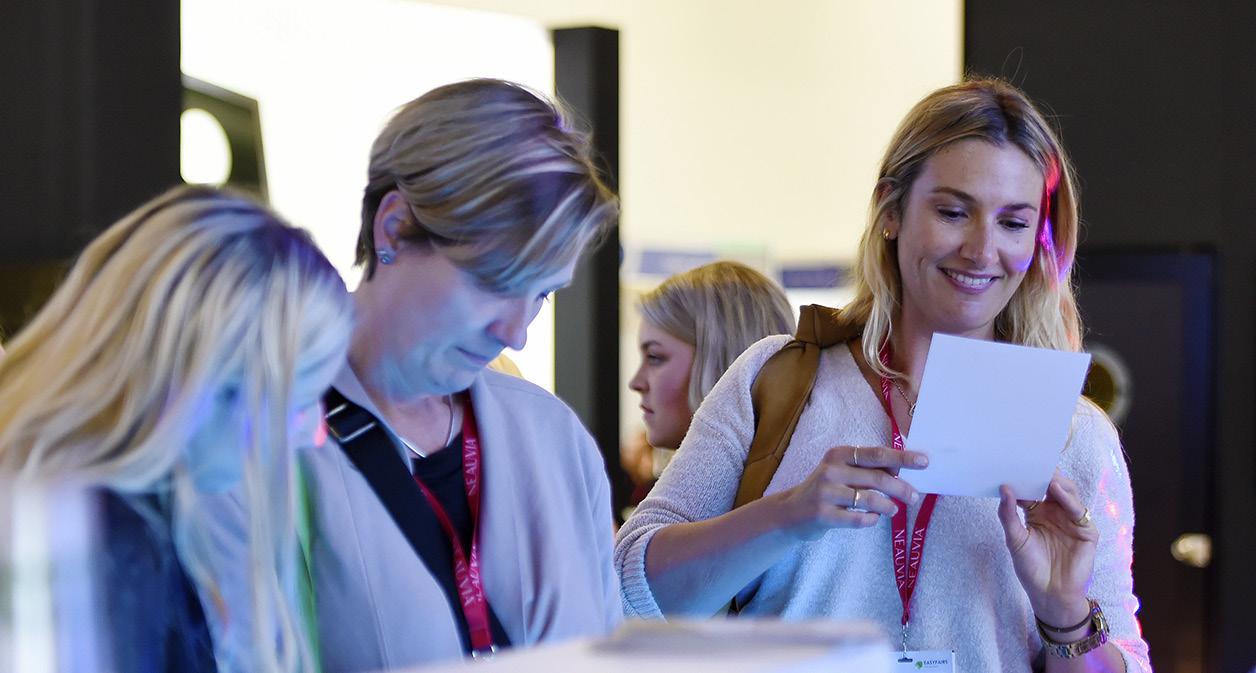

+44 (0)20 3196 4371 | ccrlondon.com 13 & 14 October 2022 | ExCeL London, UK Register FREE to attend Headline sponsor The UK’s most eagerly anticipated event that unites the surgical and non-surgical specialities What’s on? CCR Party – The PHI-lanthropy Diwali Ball Supported by Prollenium | VIP Lounge with Cocktails & Canapés Supported by HydraFacial | Start-ups Trail Showcasing Latest Industry Innovations @ccrlondon CCR London CPD accredited agenda includes • The Galderma Symposiums • Allergan Lunchtime Takeovers • In Practice Theatre for business support • Aesthetic Wellness Conference • Getting Started in Aesthetics • ISAPS Symposium UK • ACE Group World meeting • Dr Tapan Patel’s LIVE Injection Masterclass • A Dentist’s Guide to Aesthetics with Professor Bob Khanna
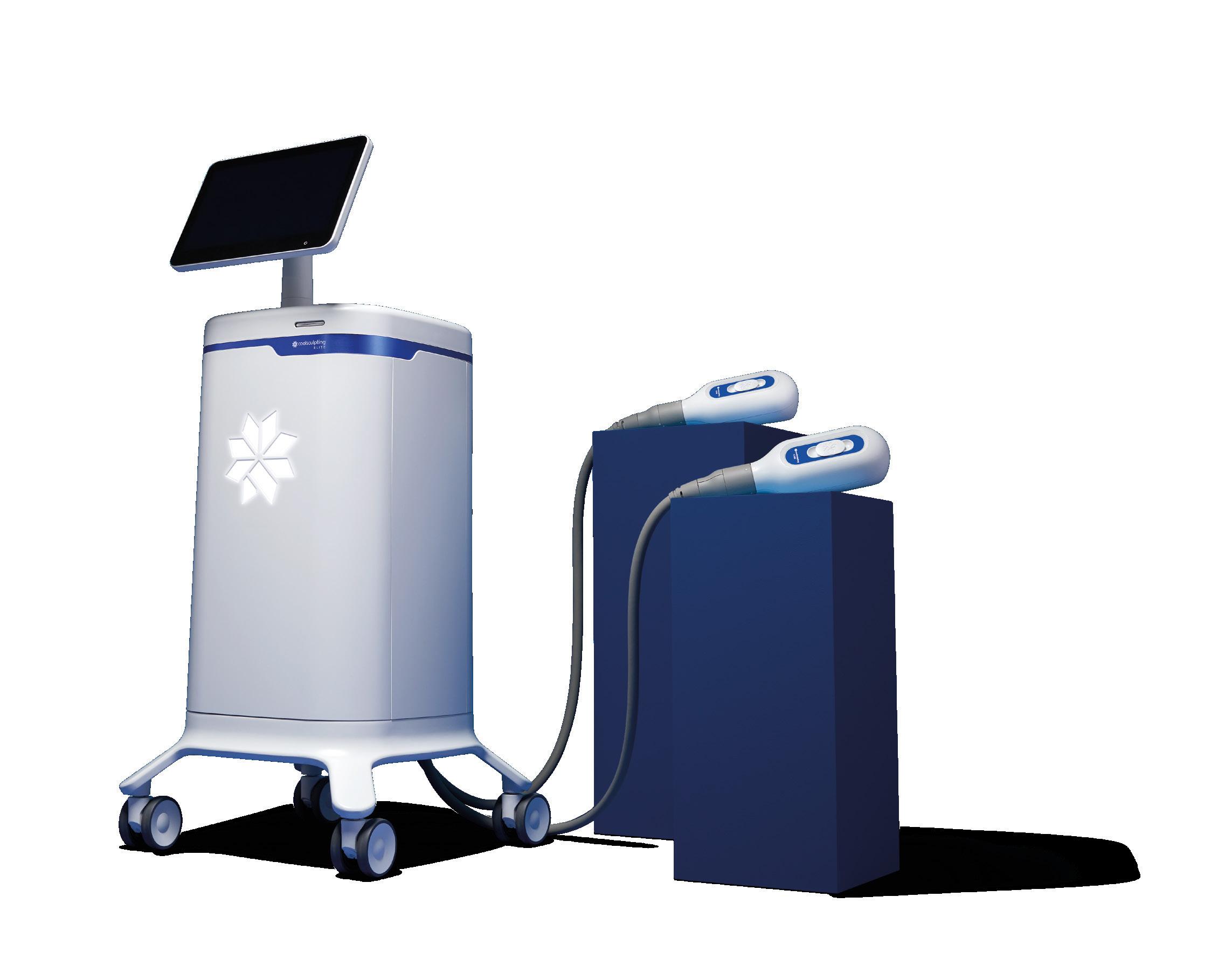






























 Alison Fulford Independent Nurse Prescriber Harbourside Aesthetic Clinic
Alison Fulford Independent Nurse Prescriber Harbourside Aesthetic Clinic





































































 Recruitment
Recruitment



























































 Before
Before






















































































































